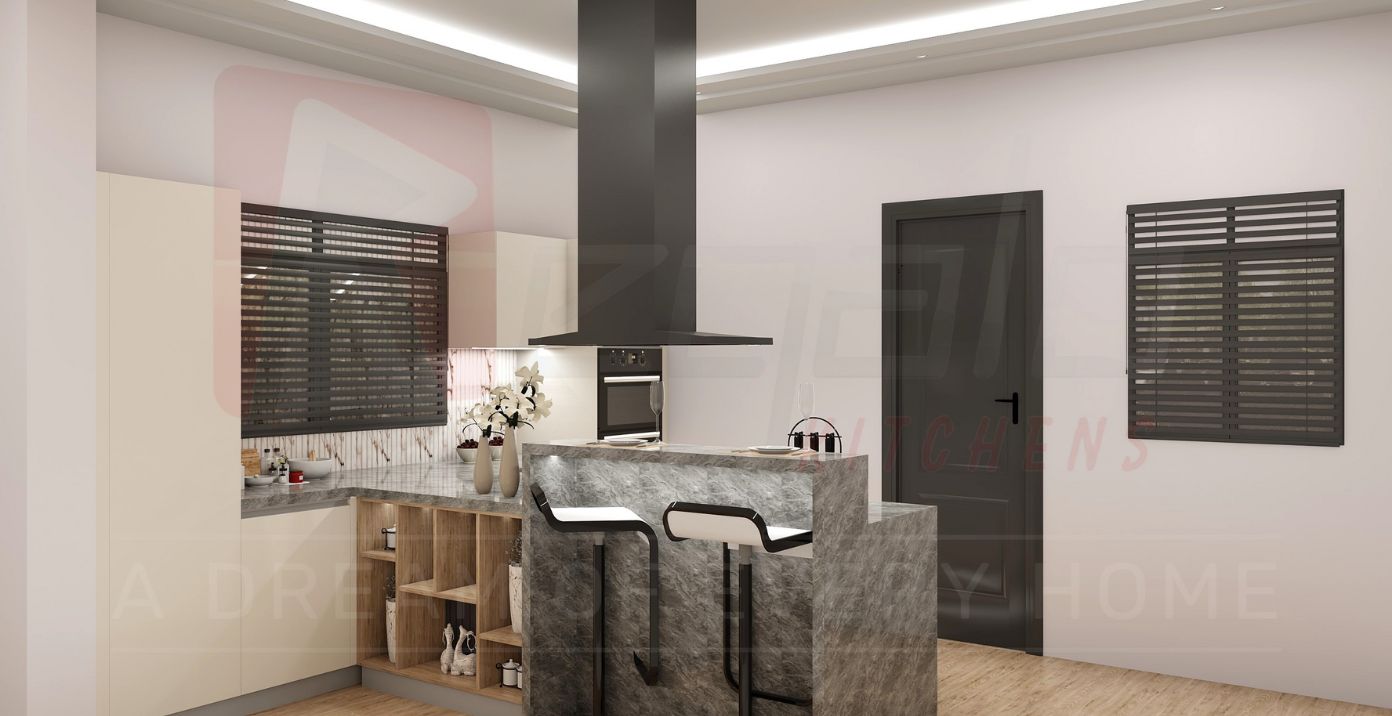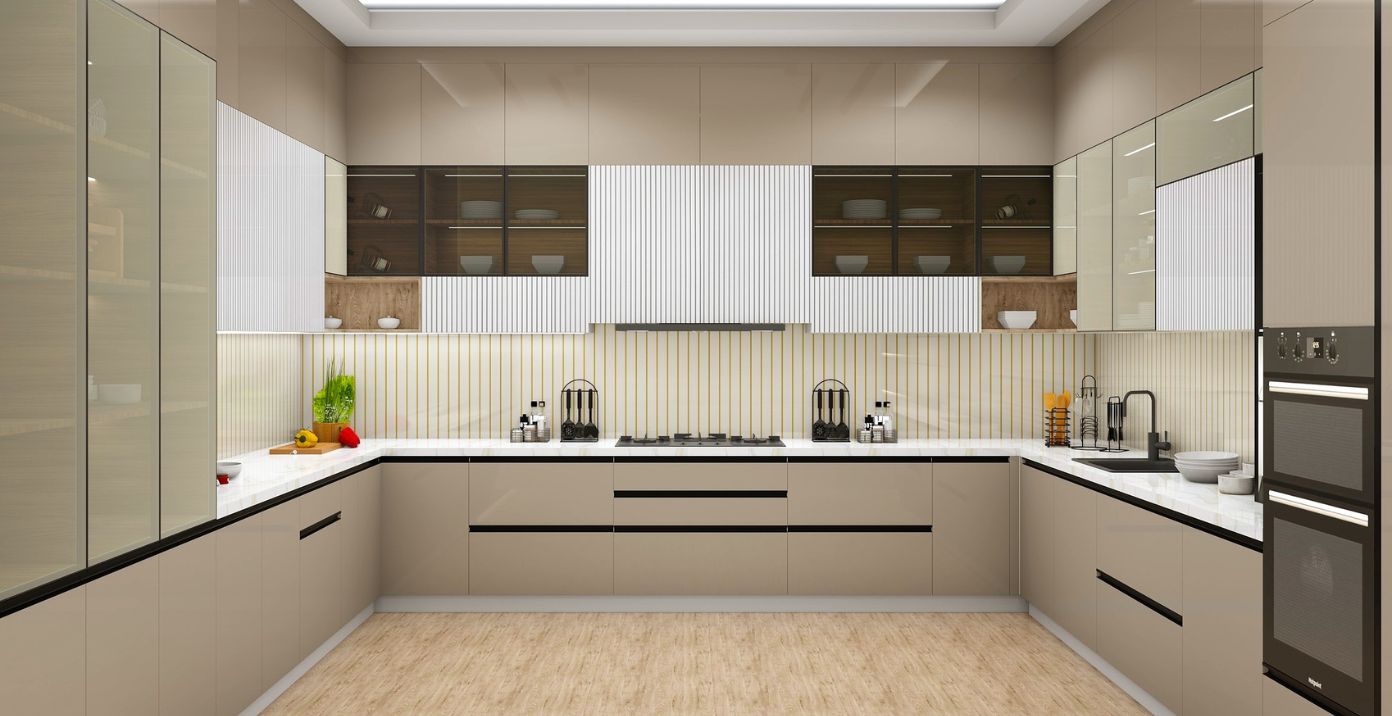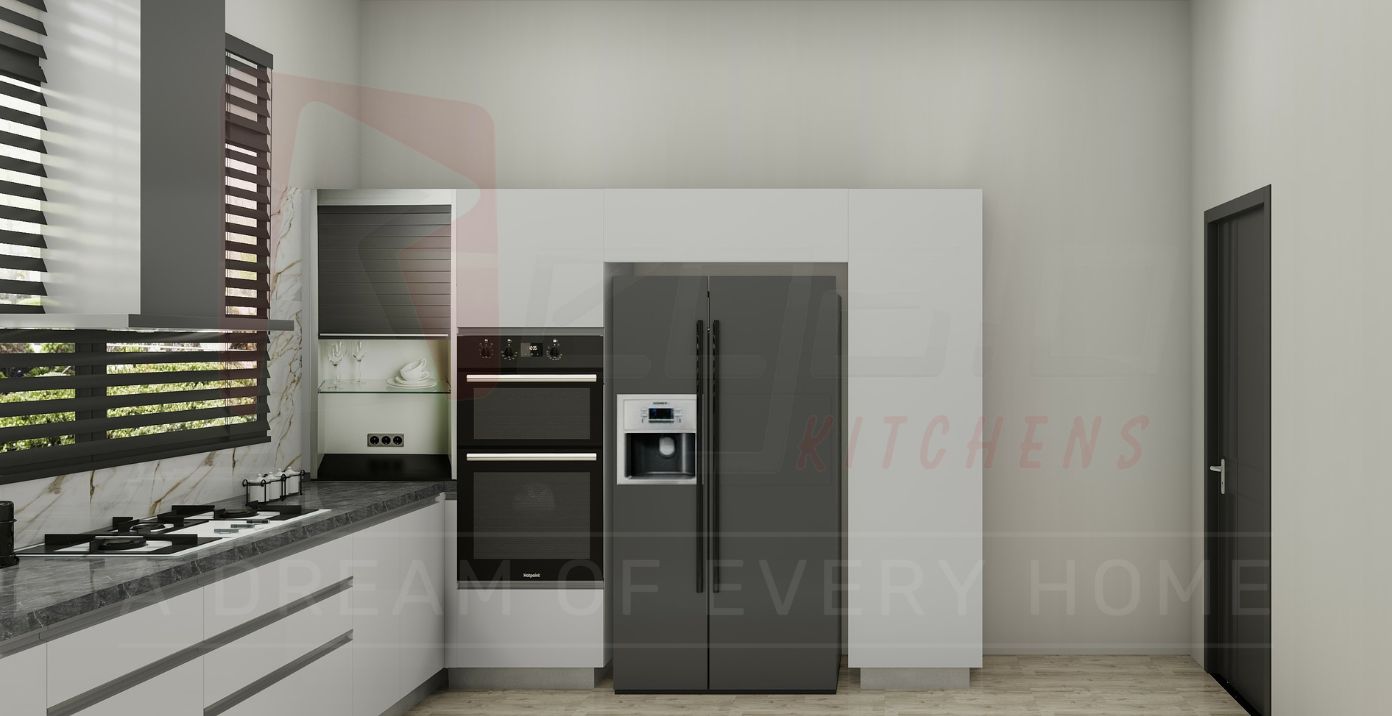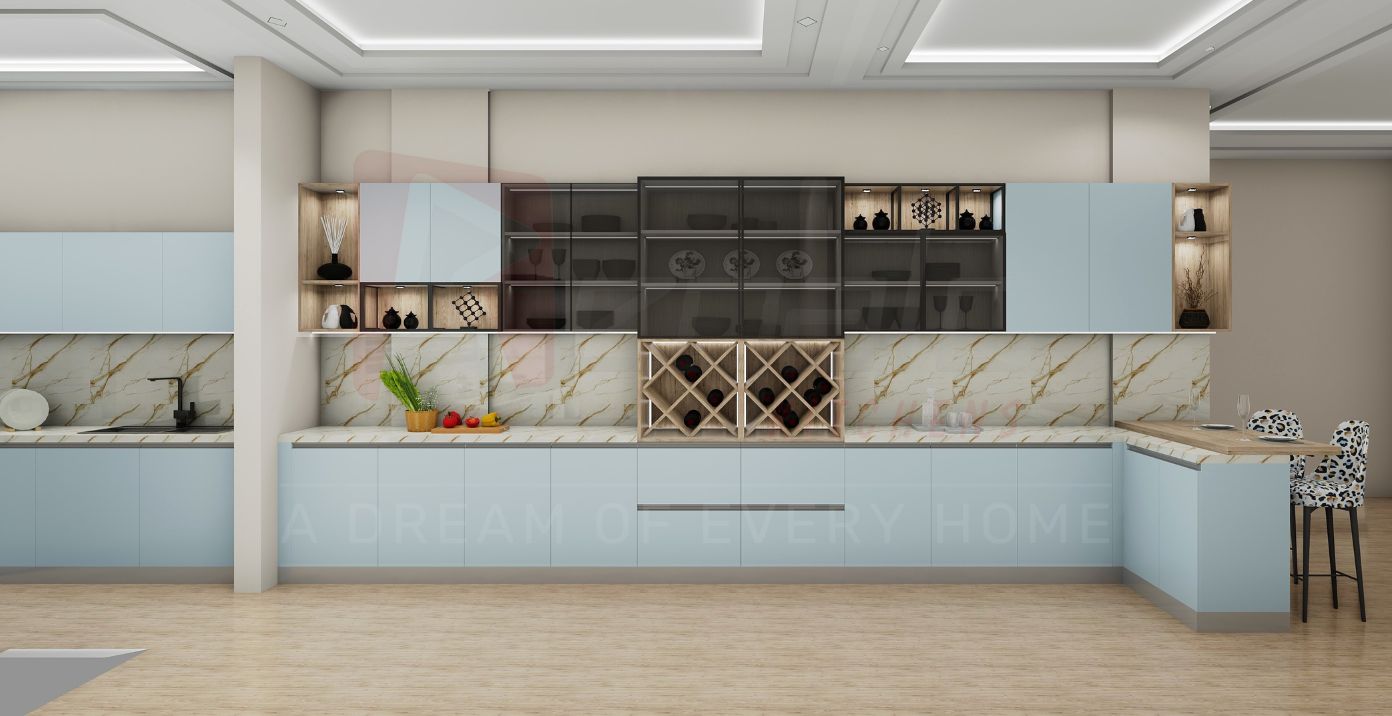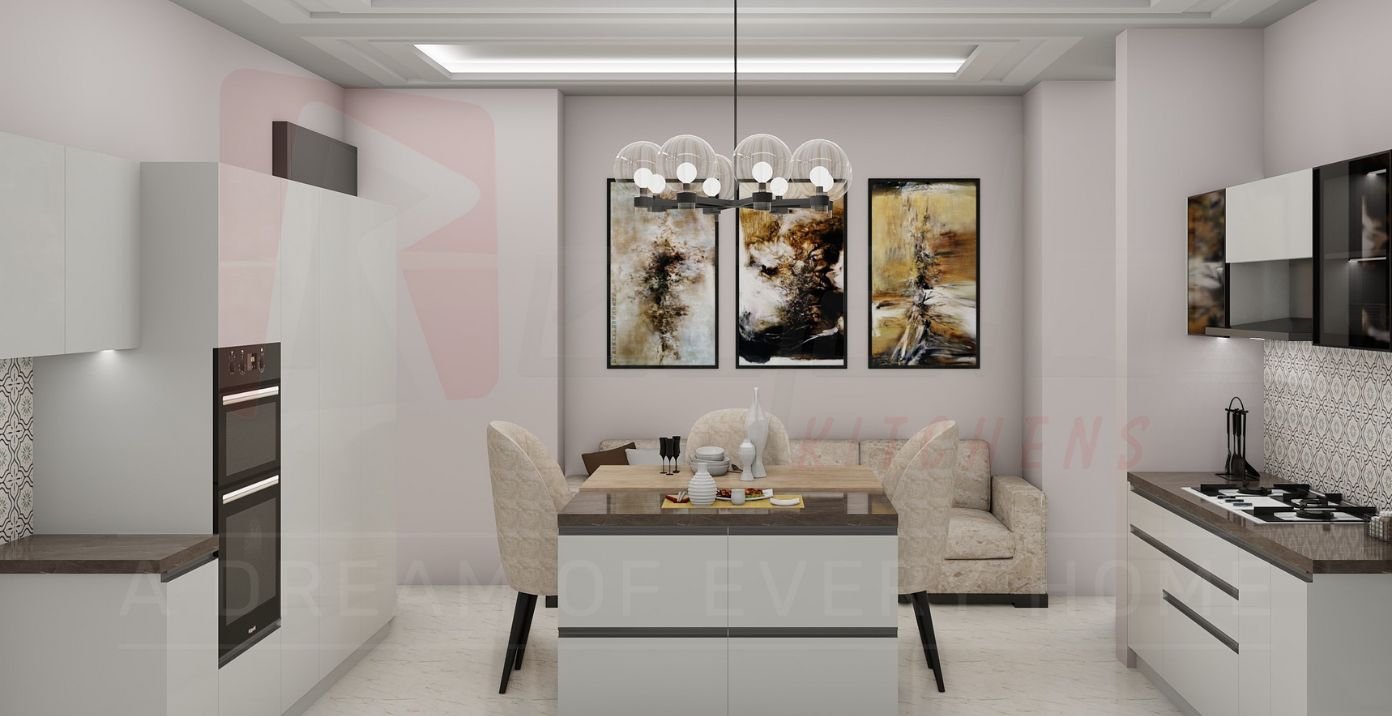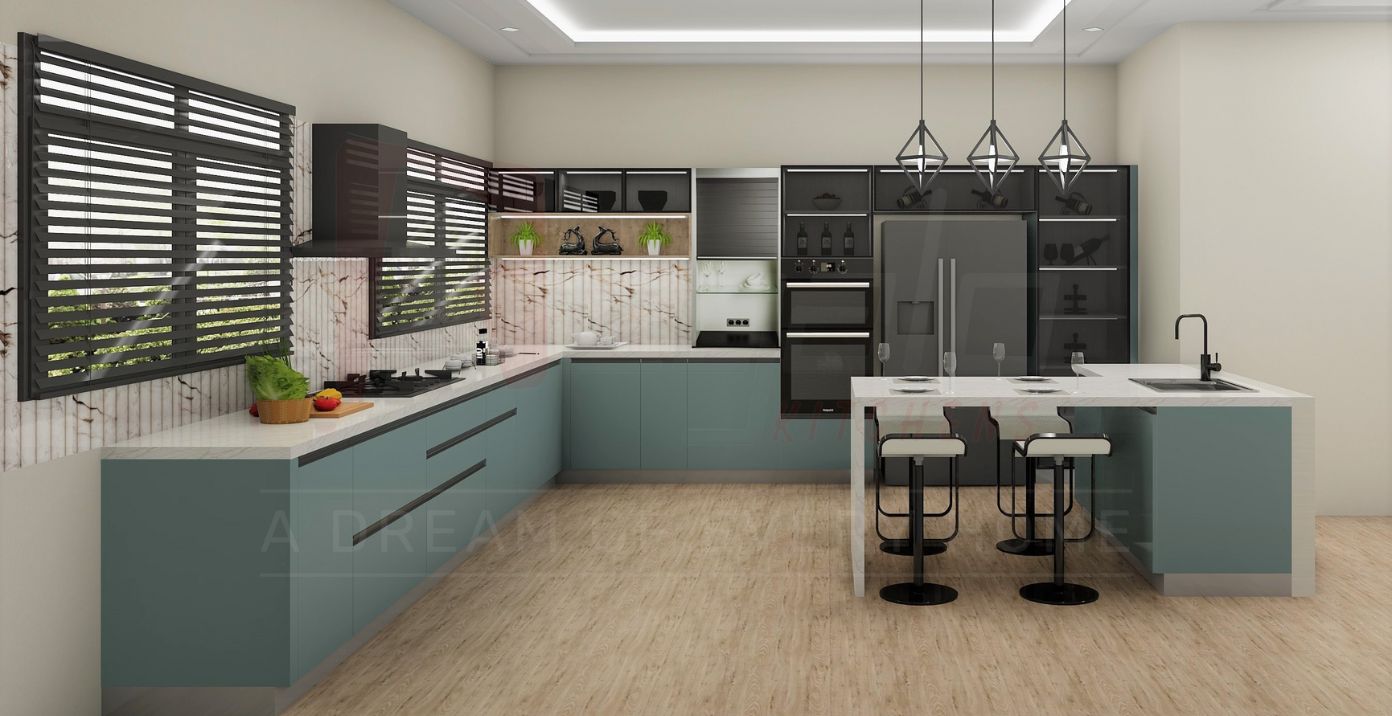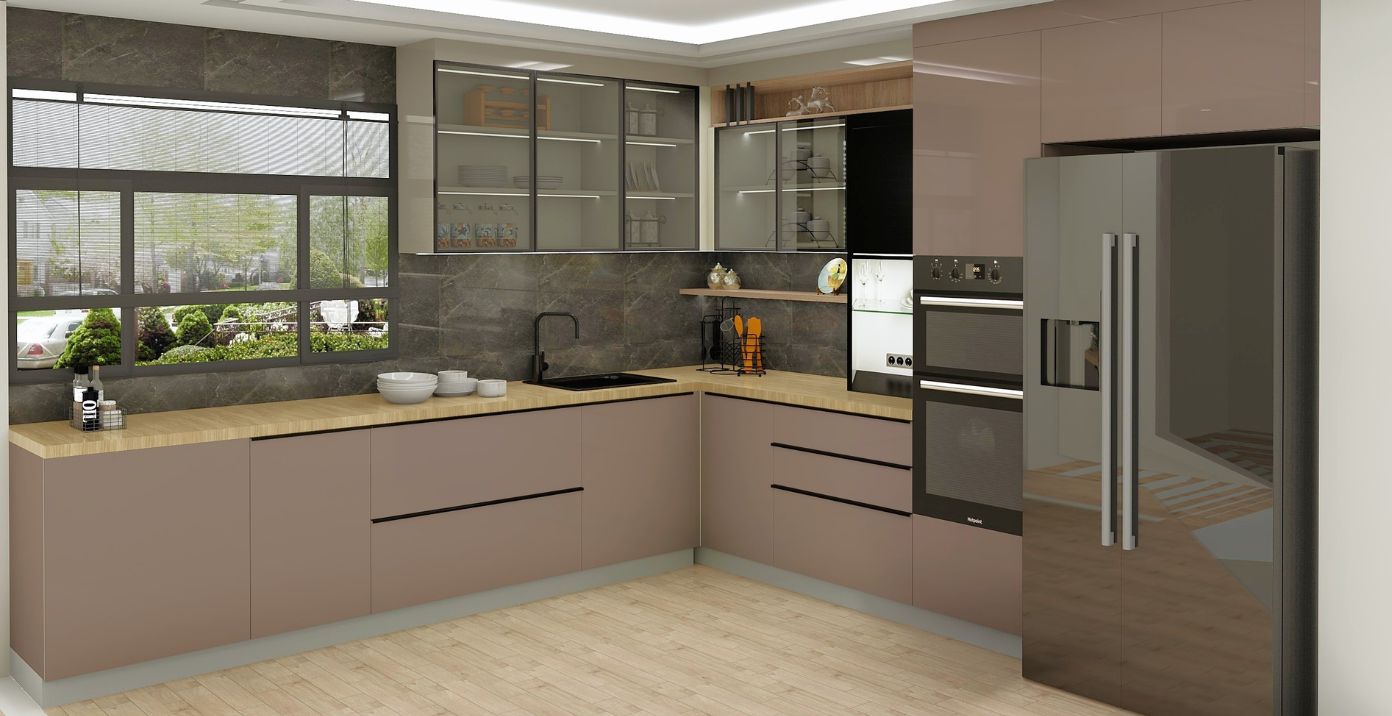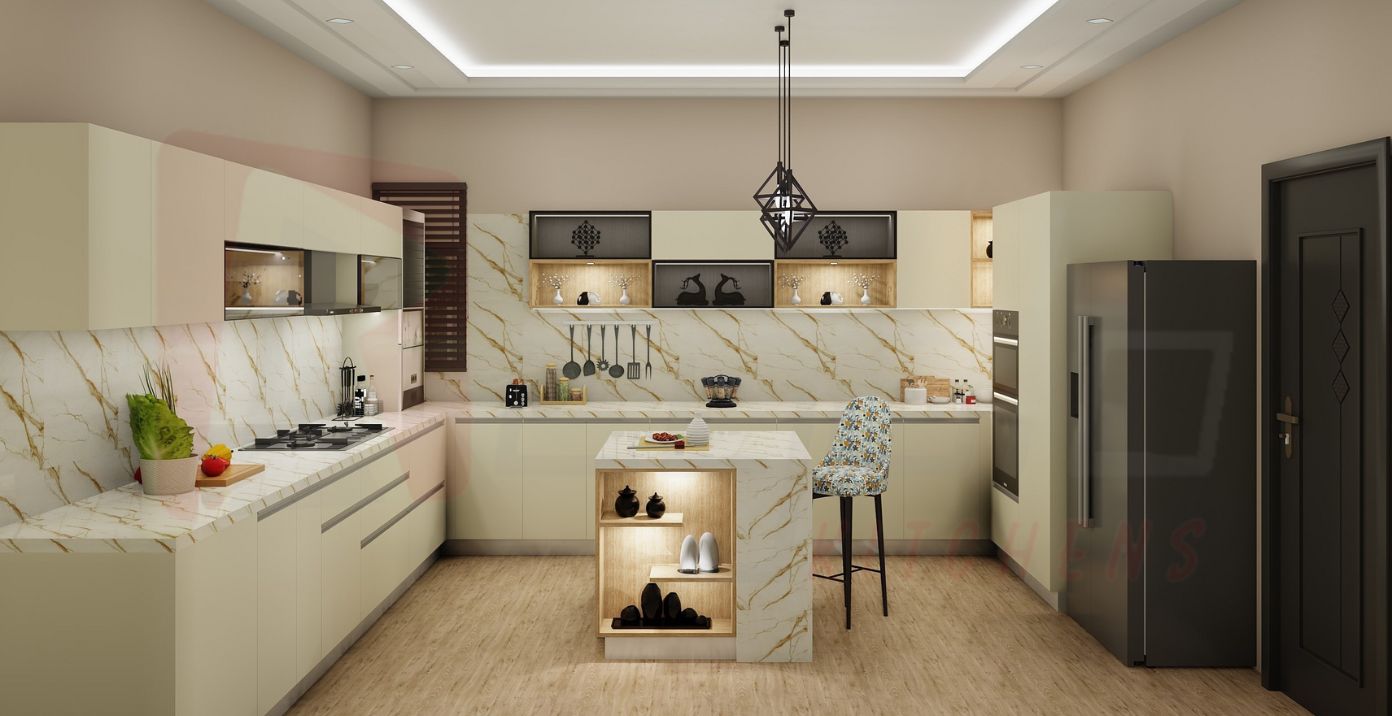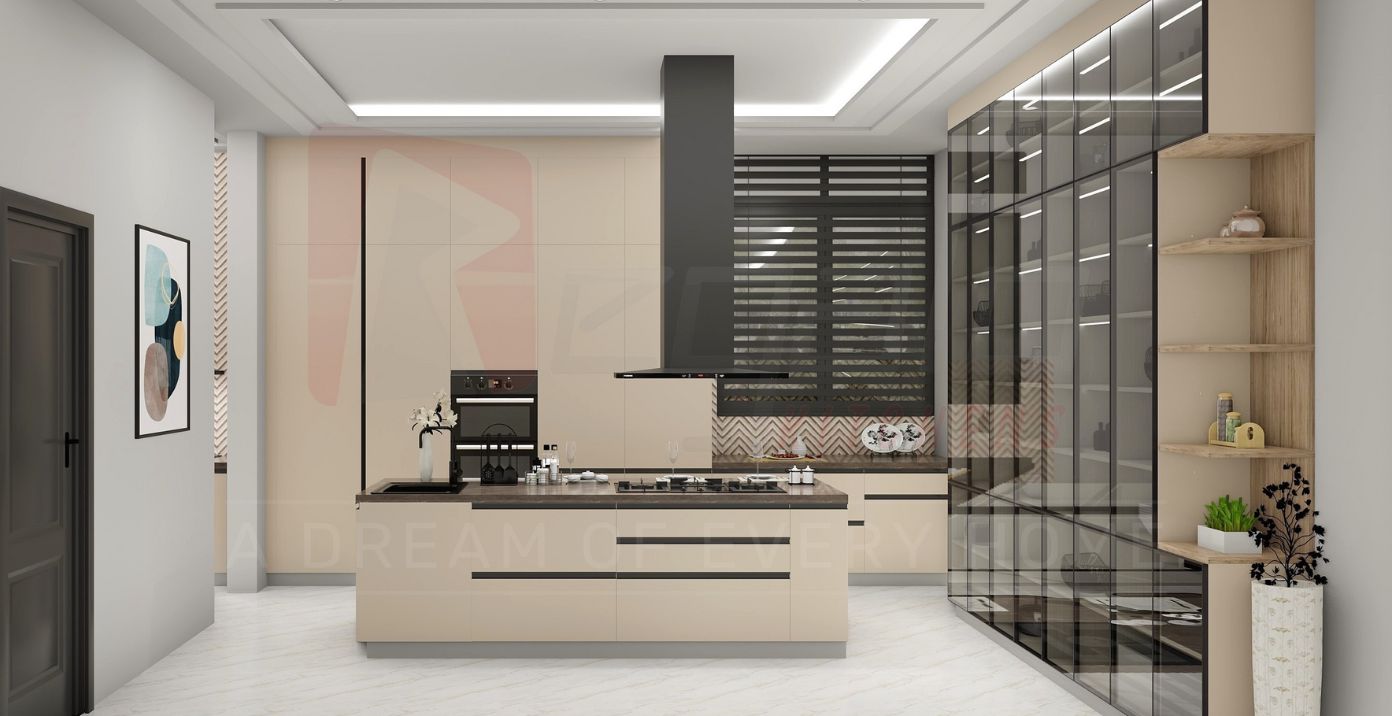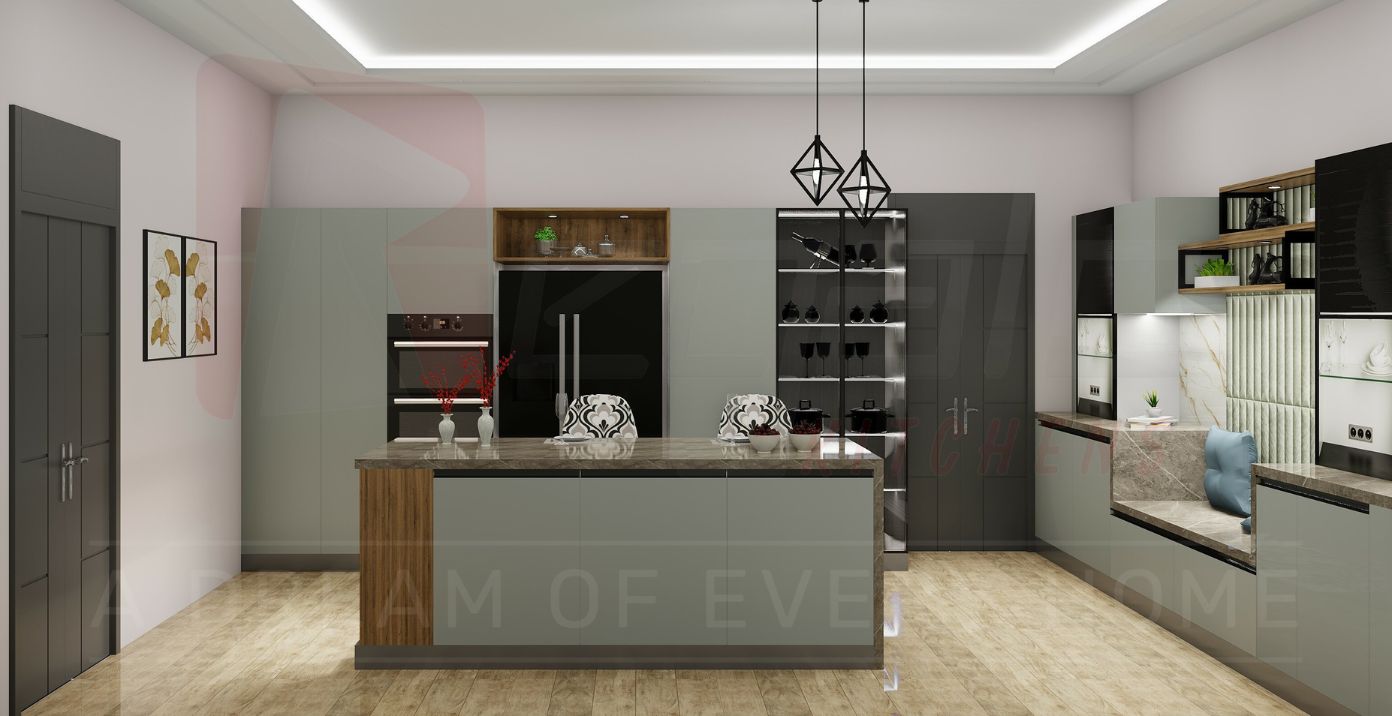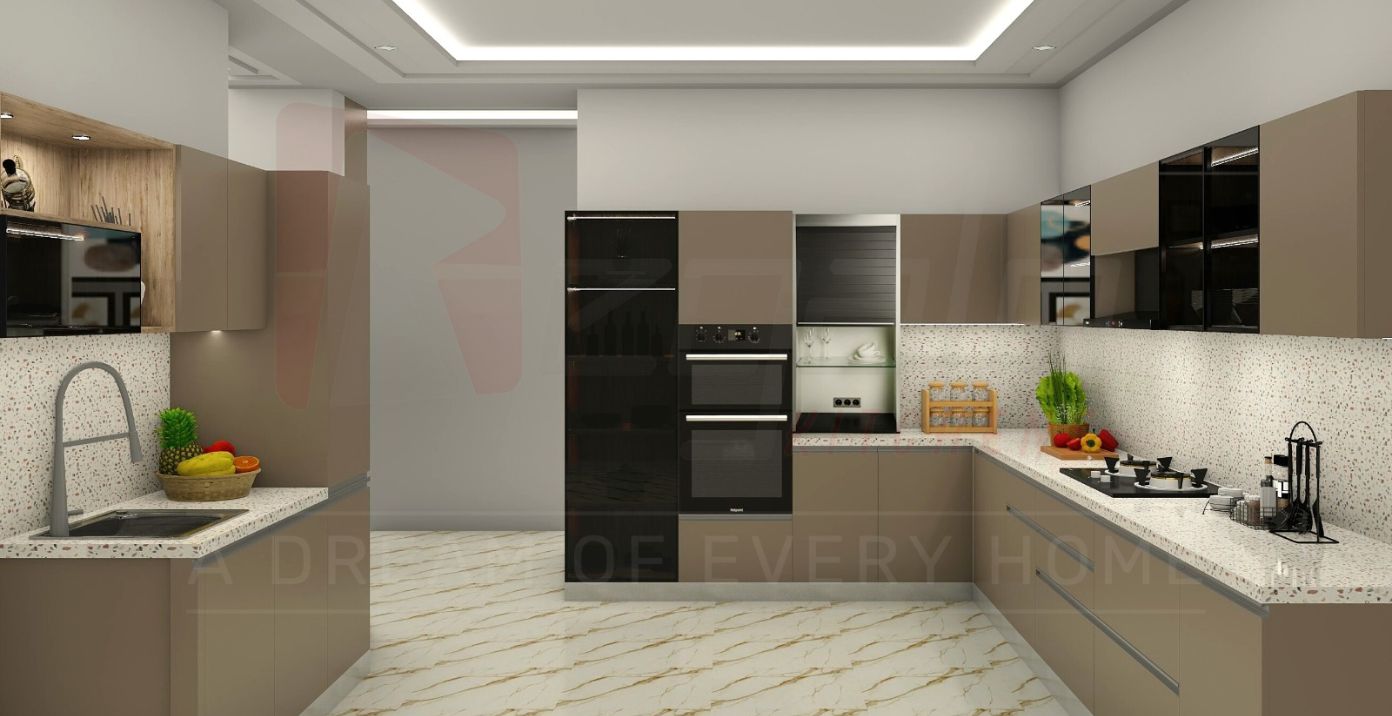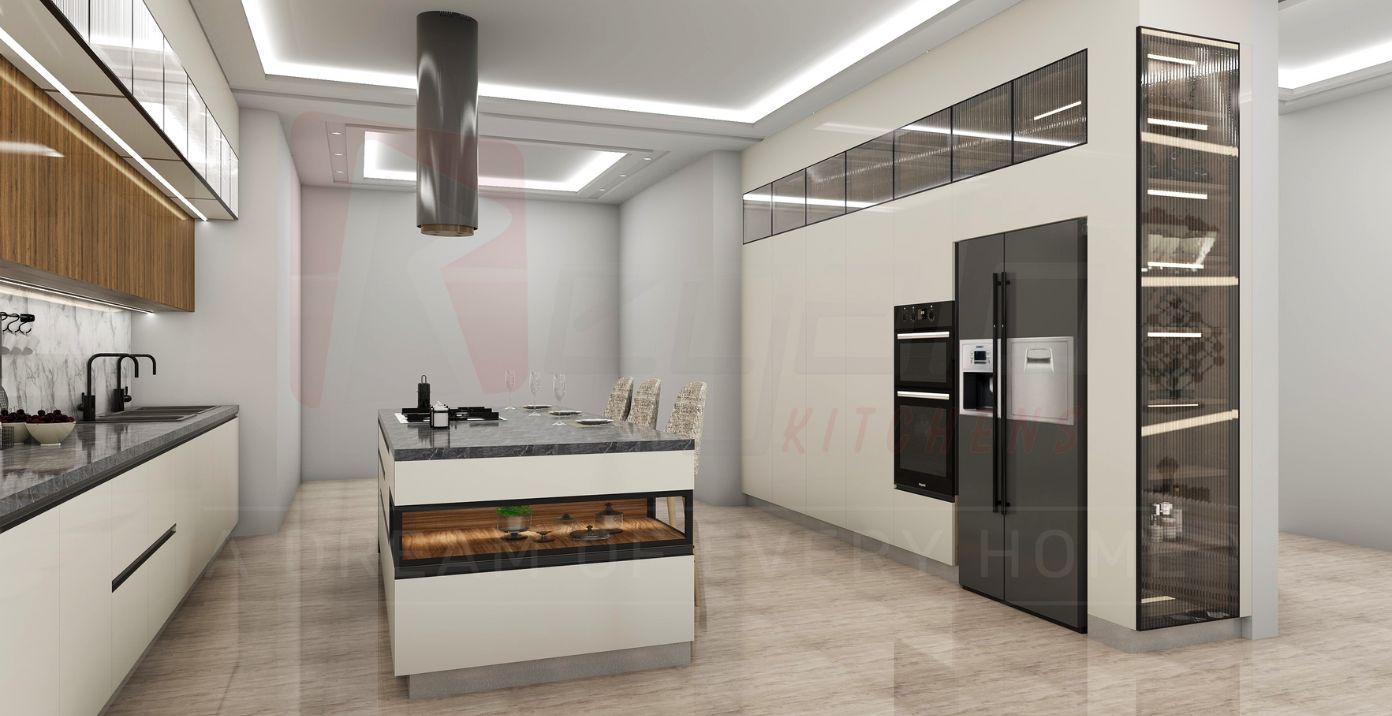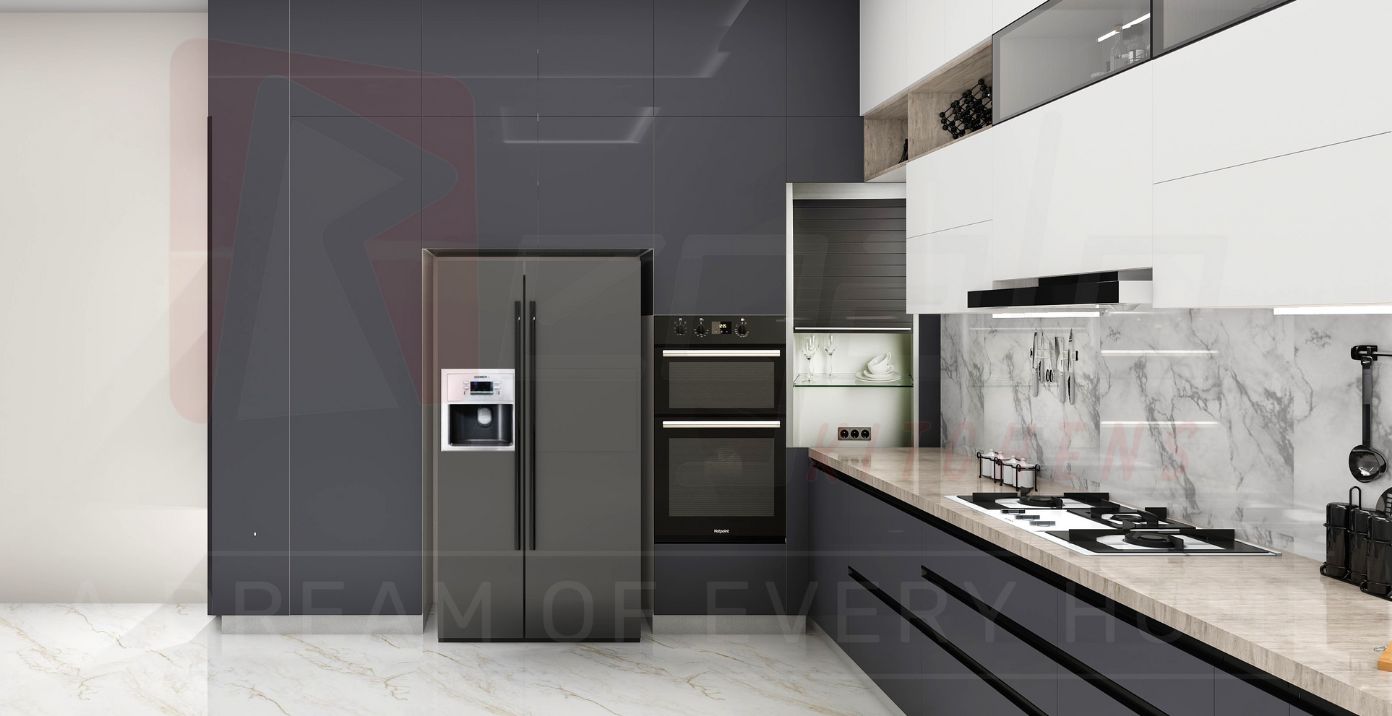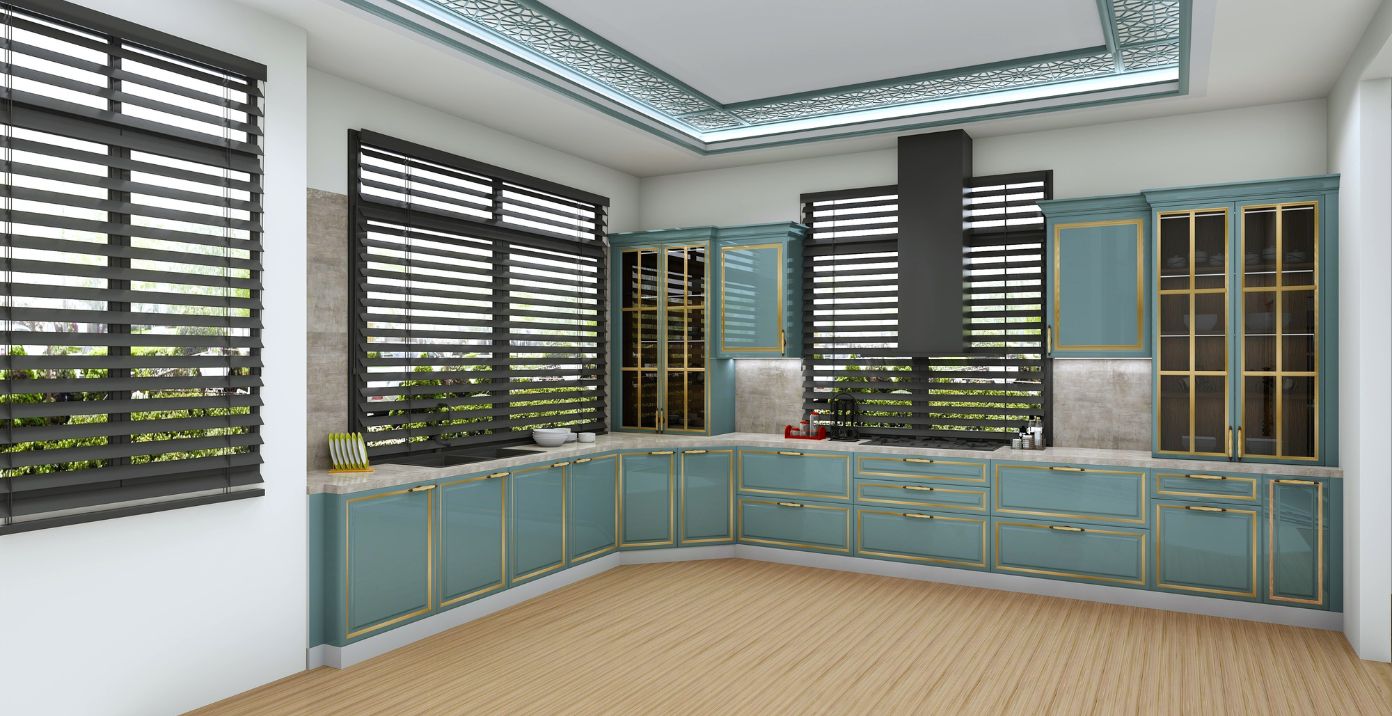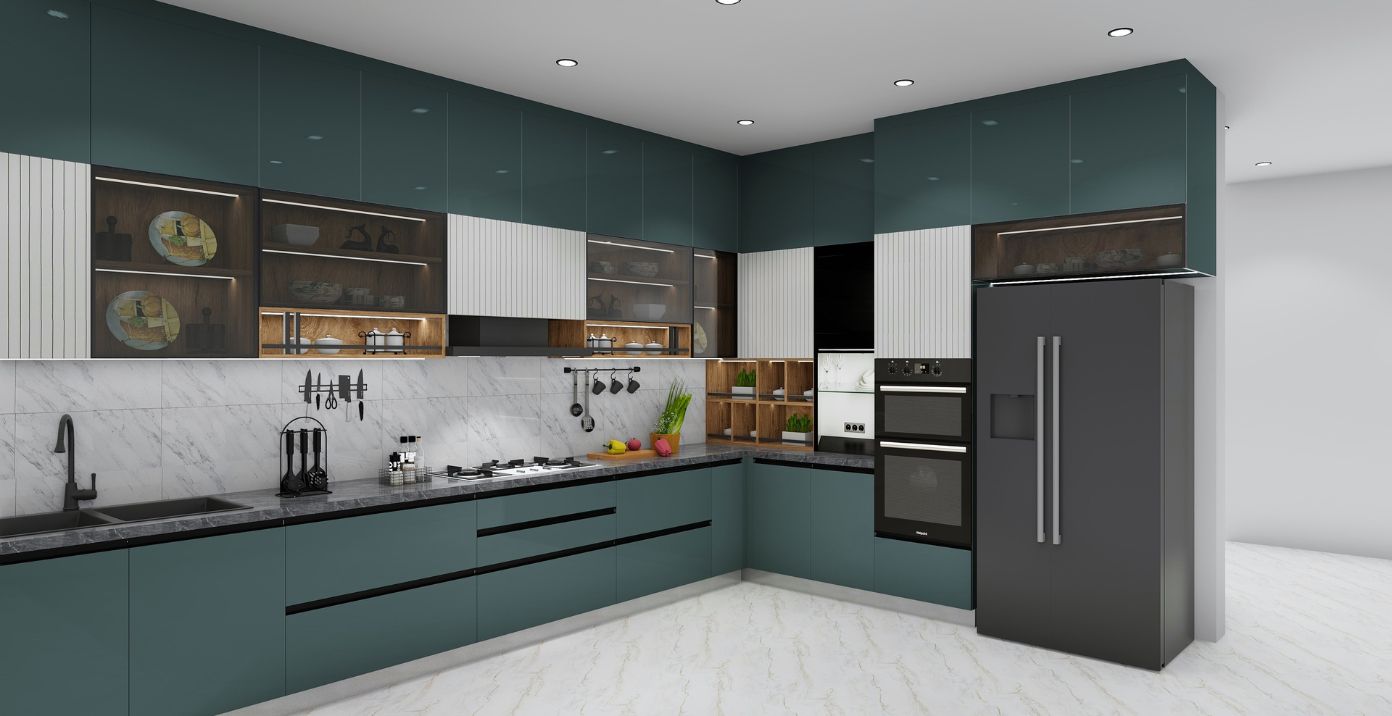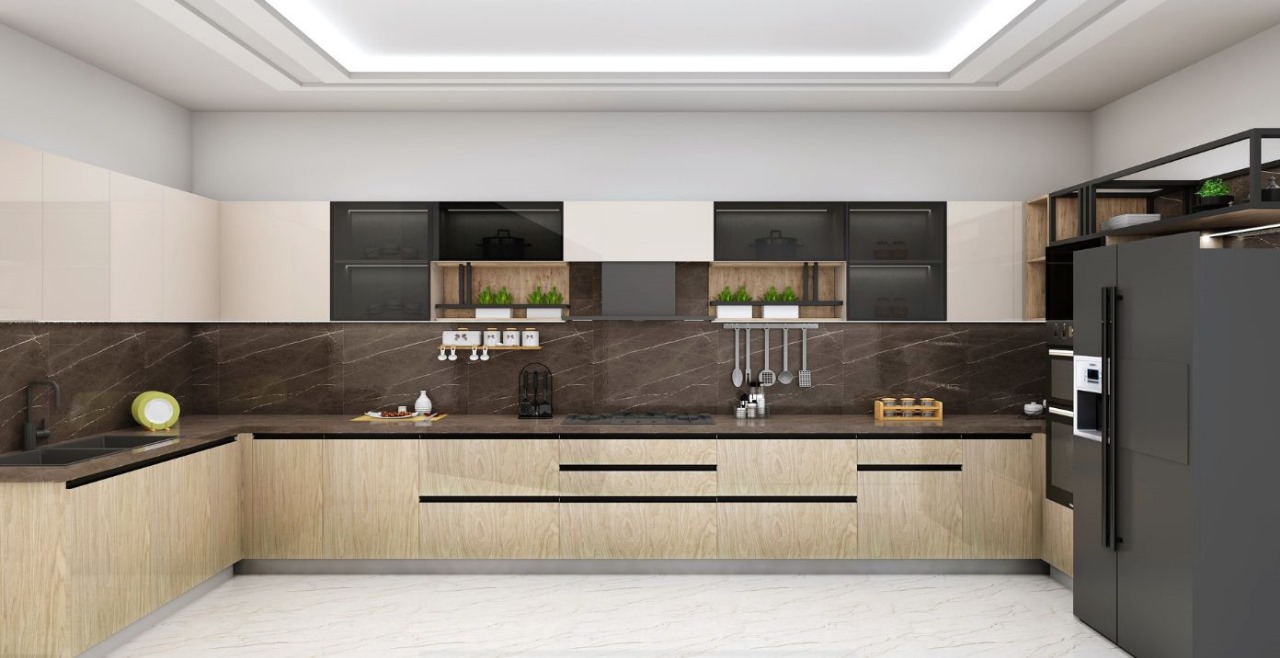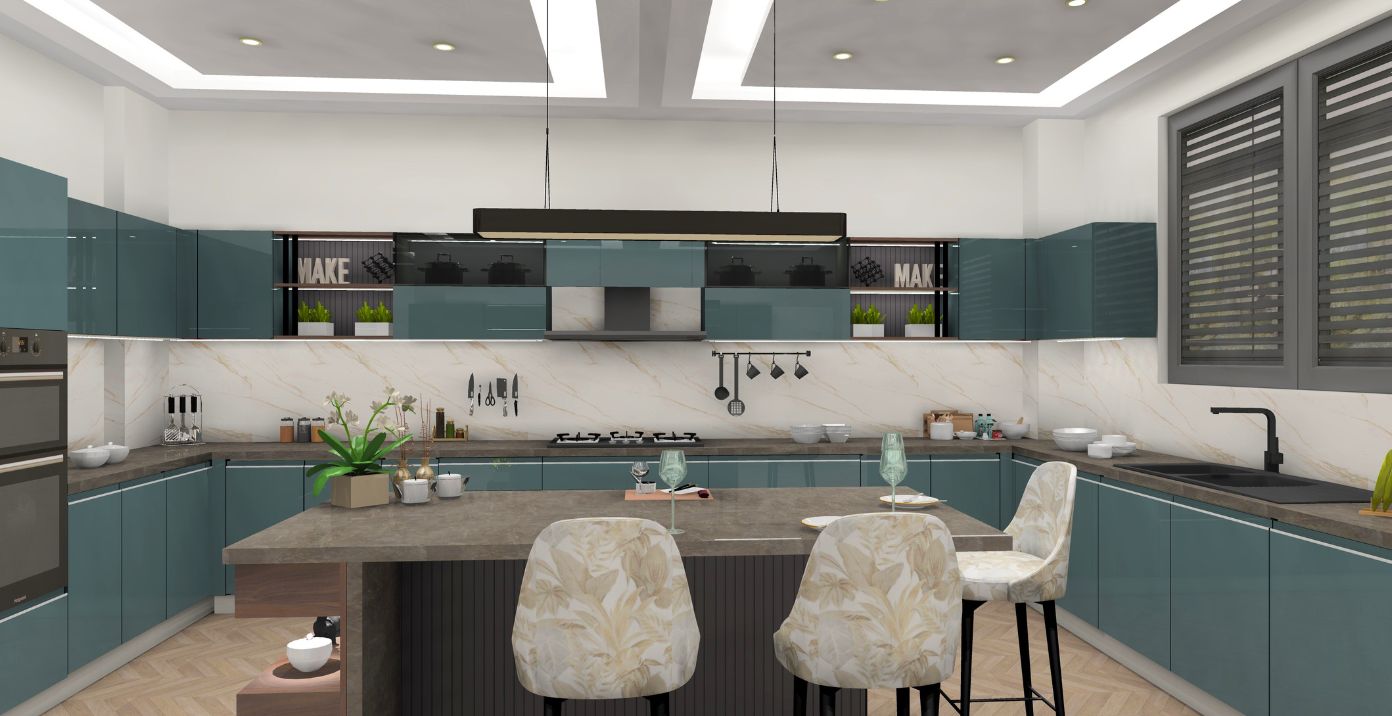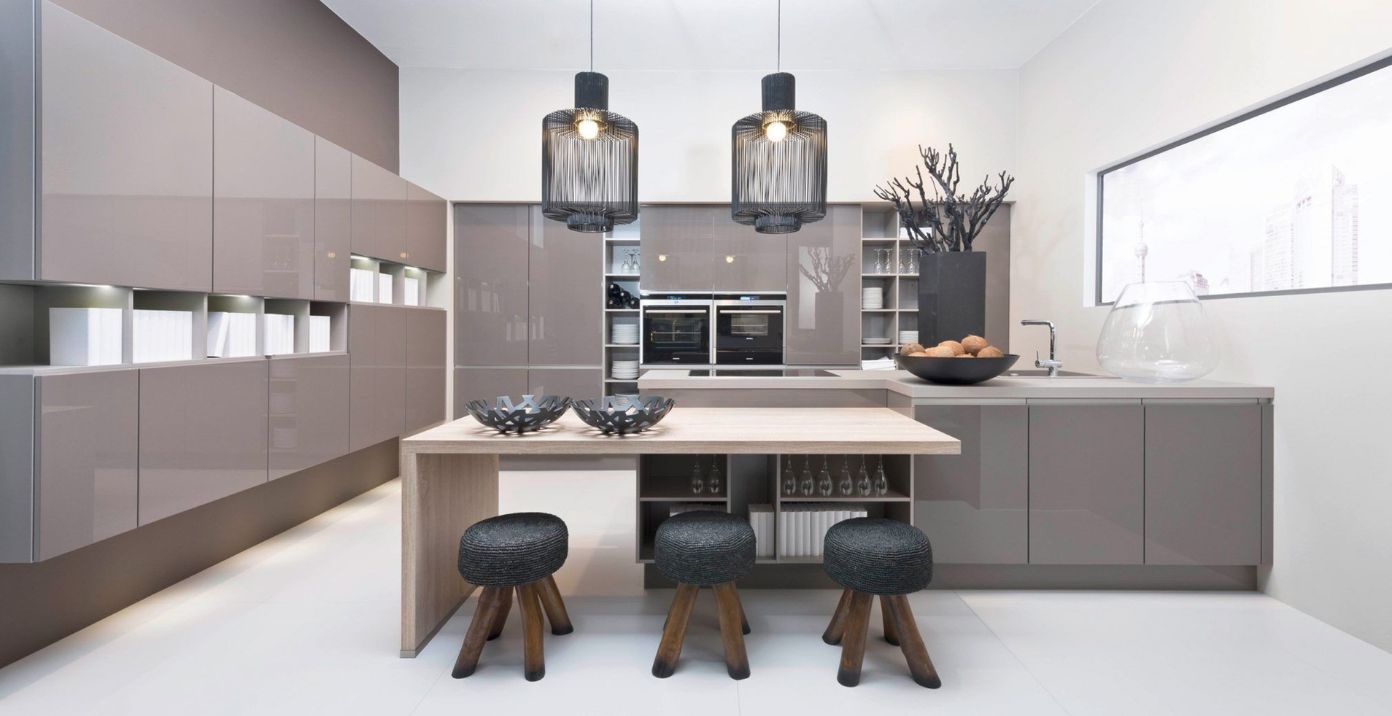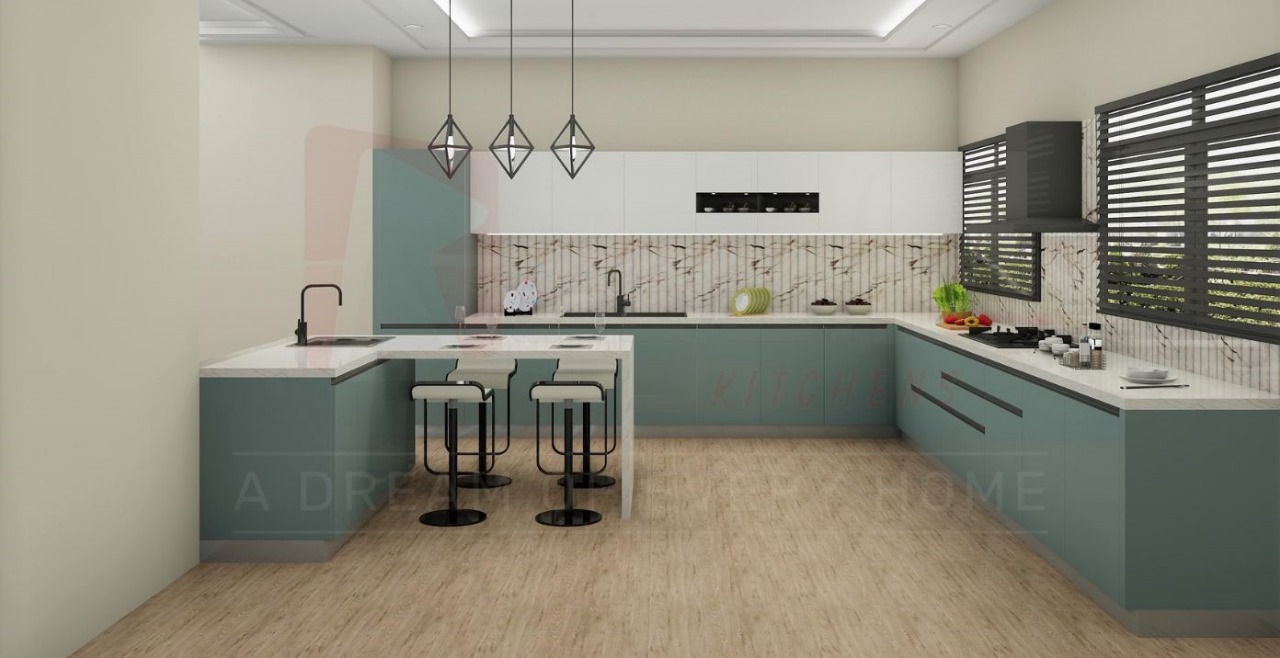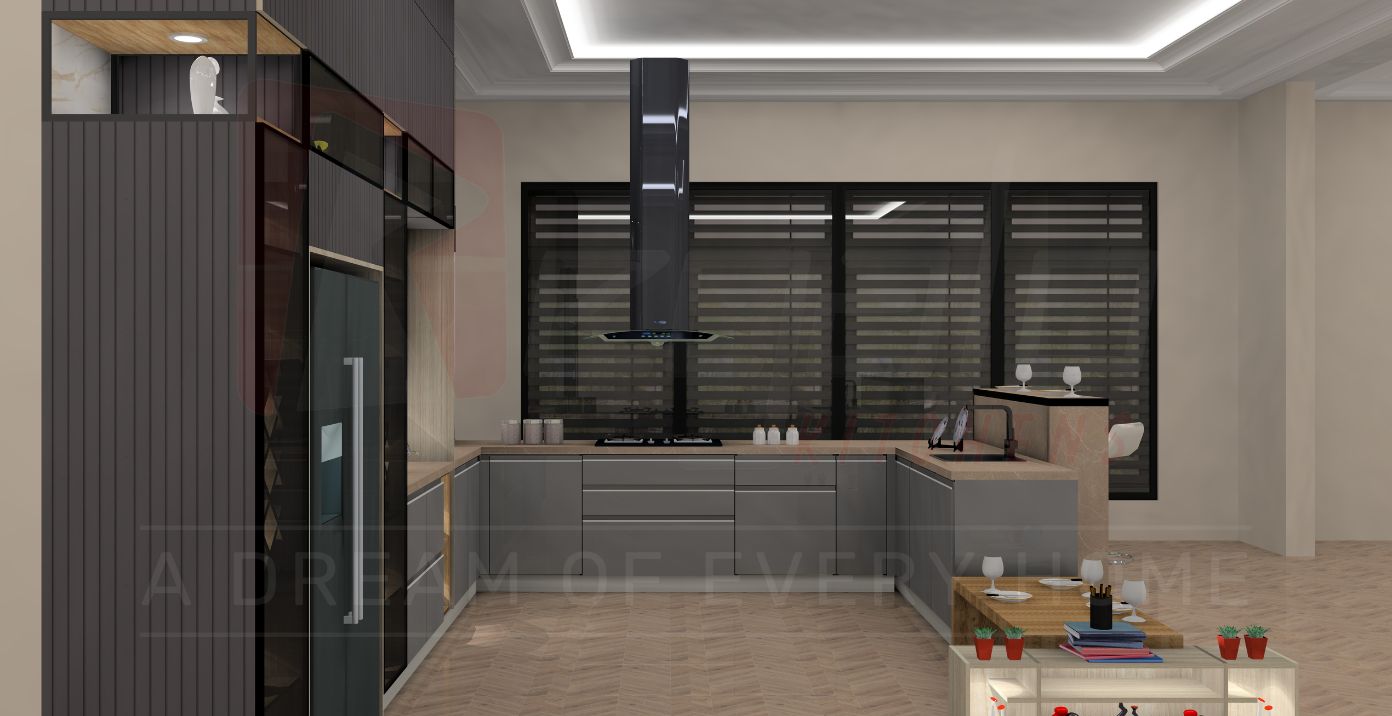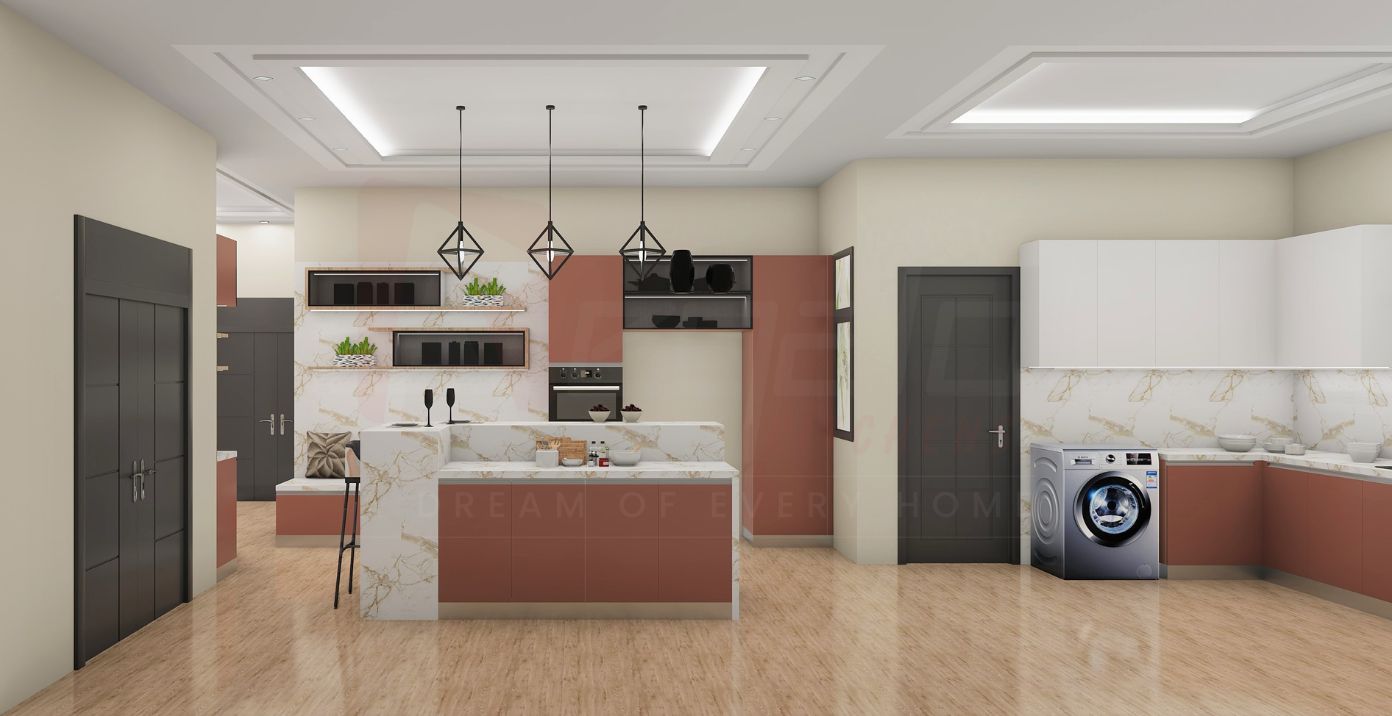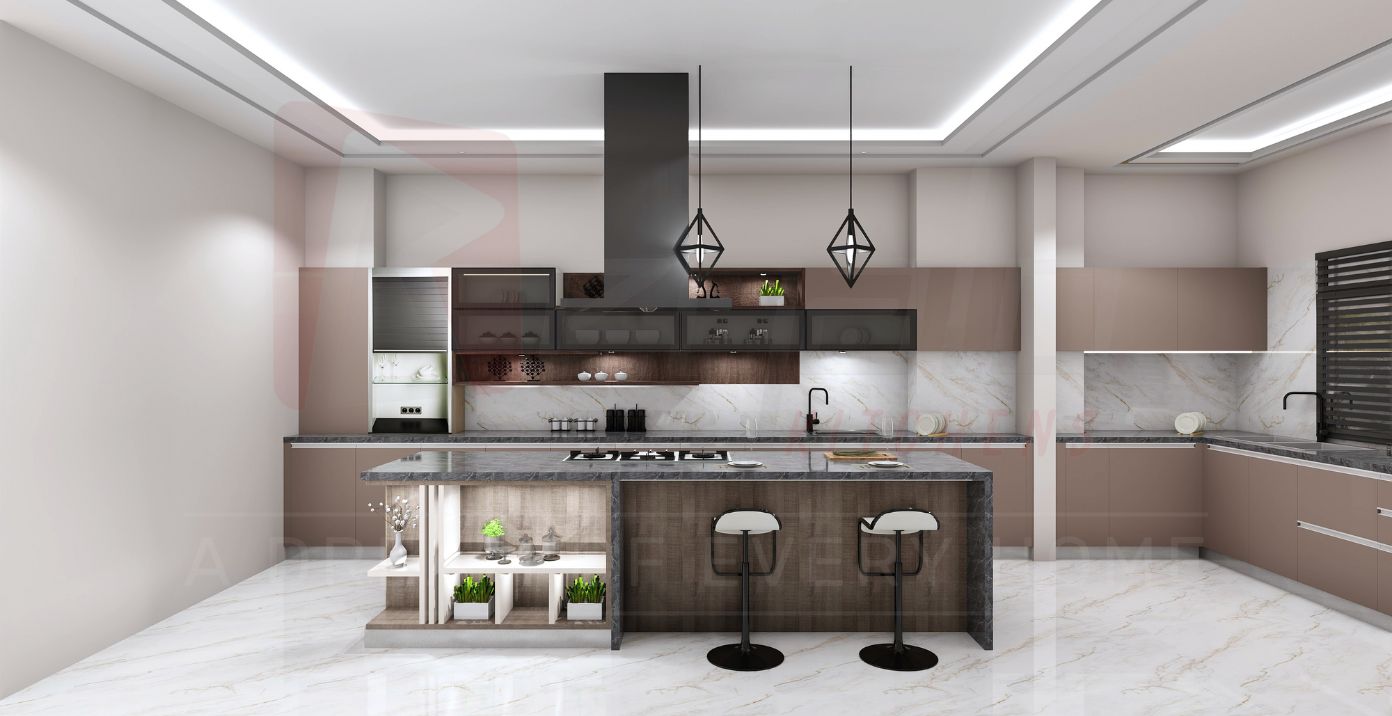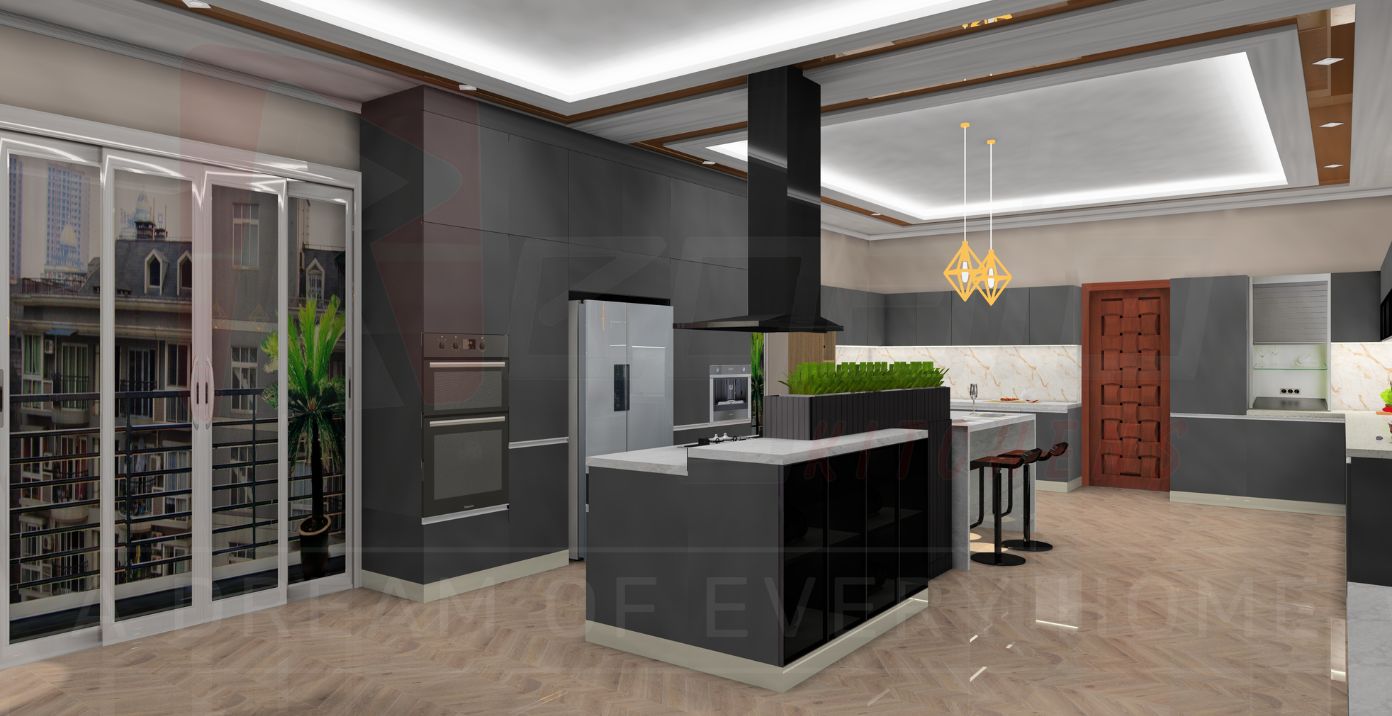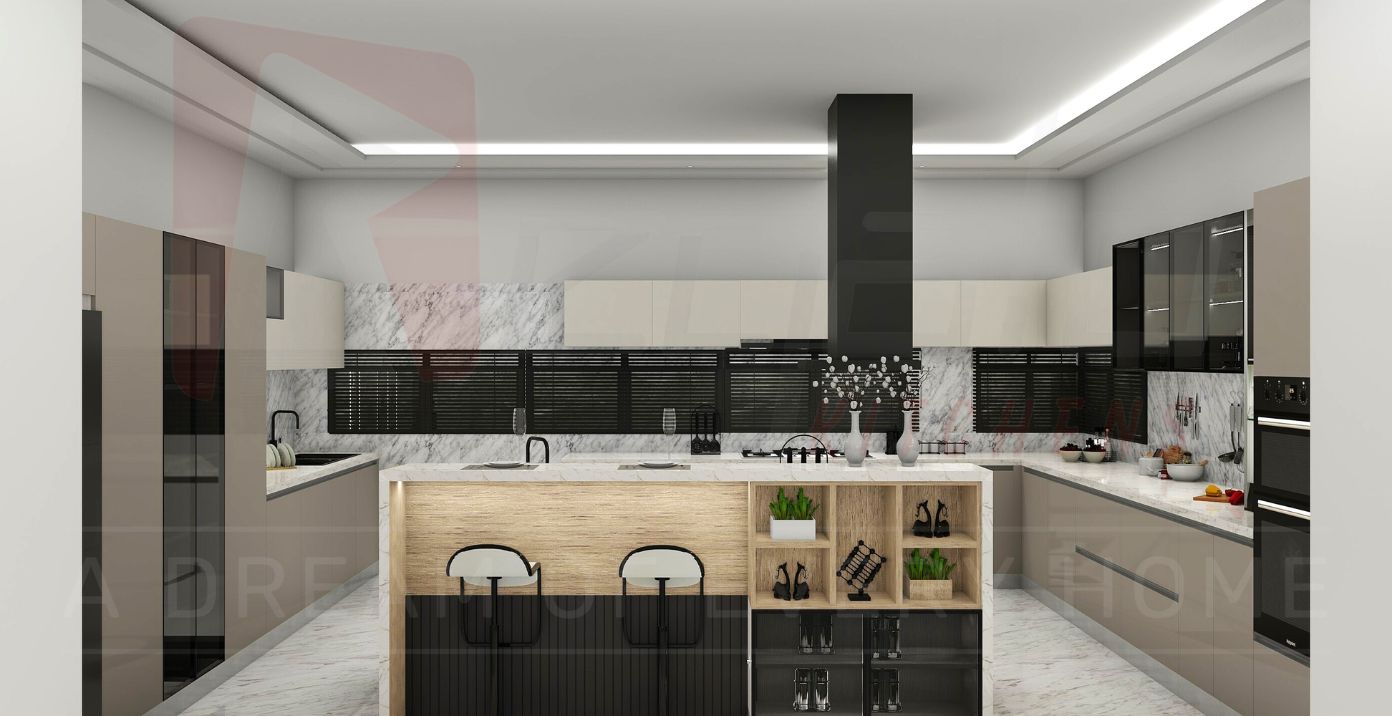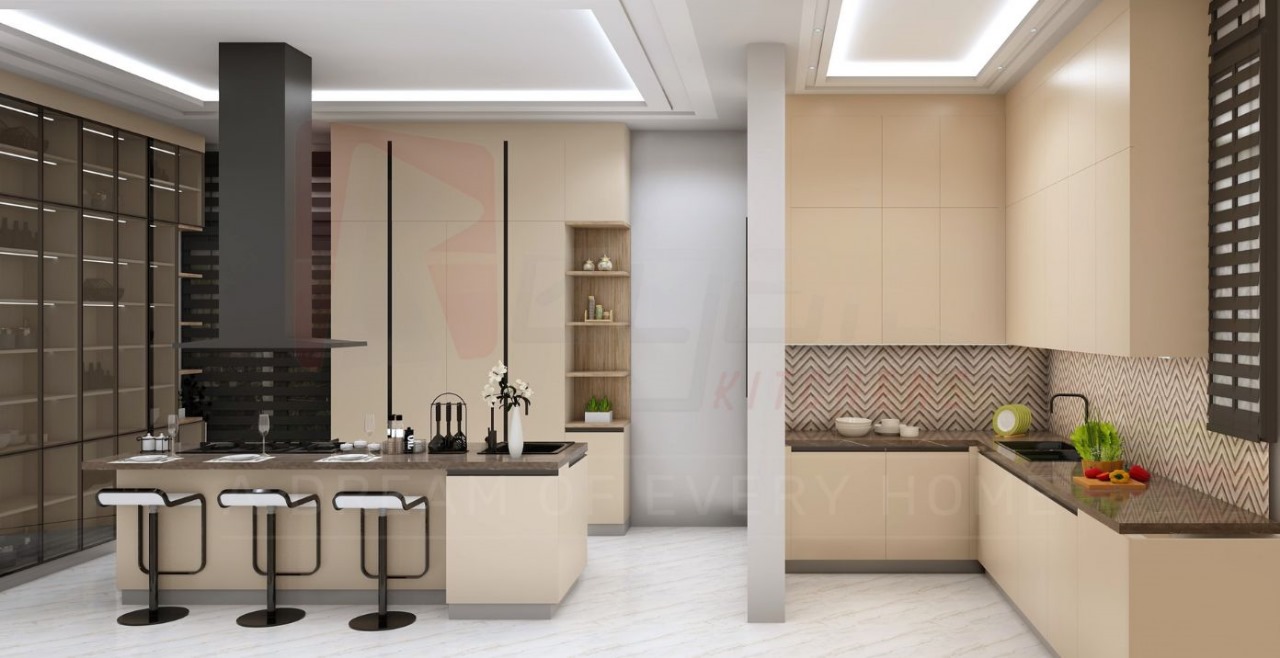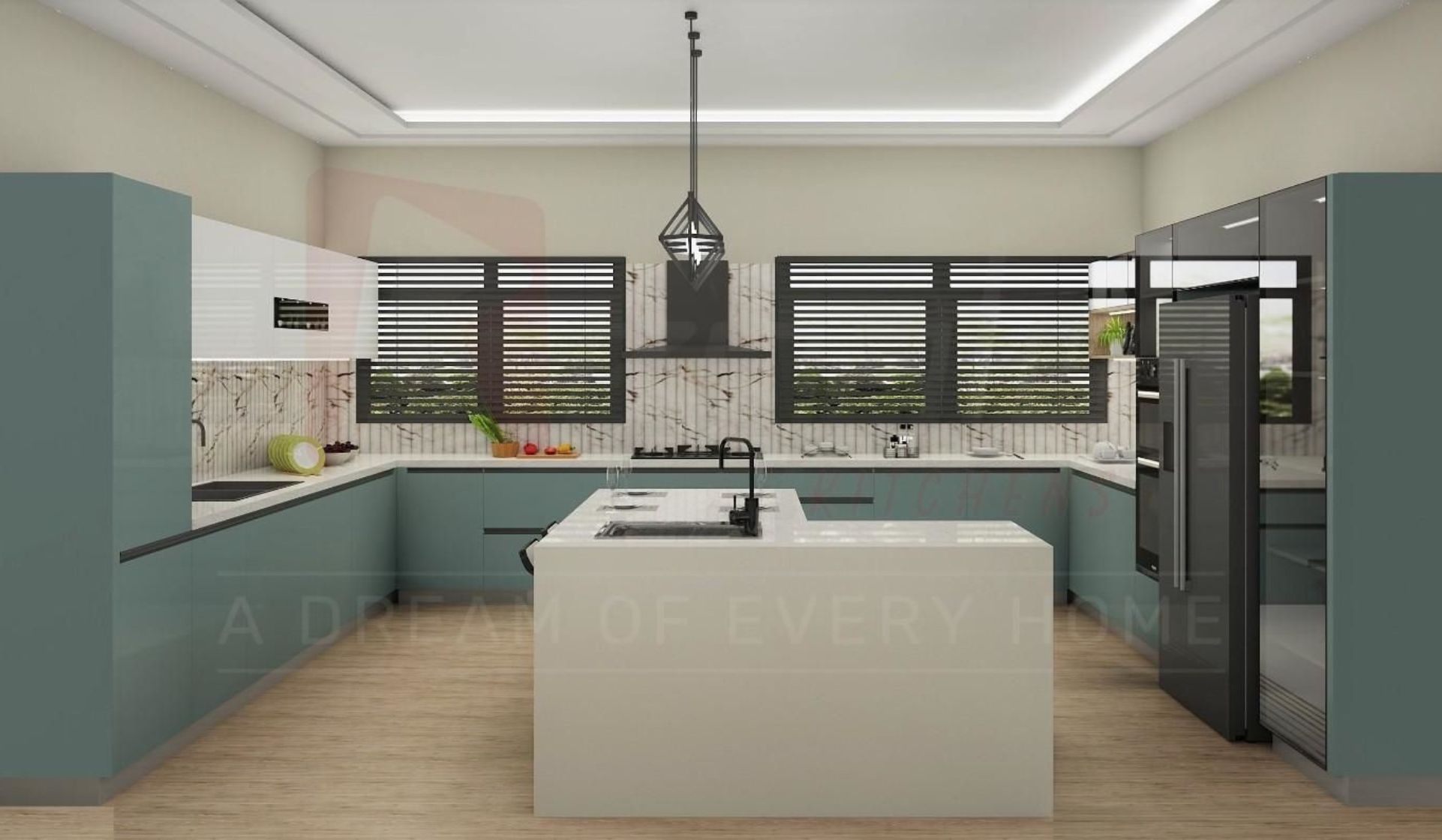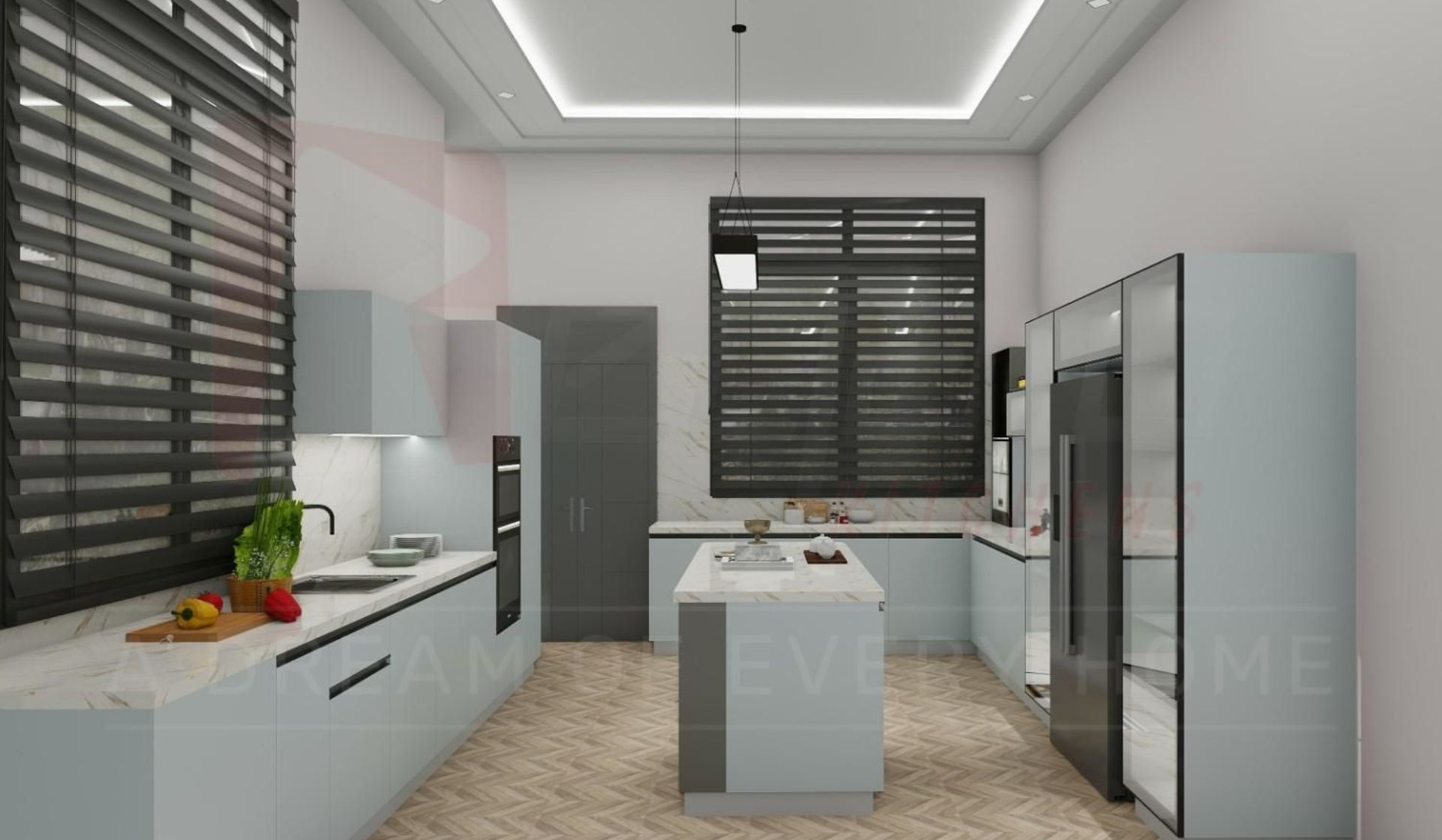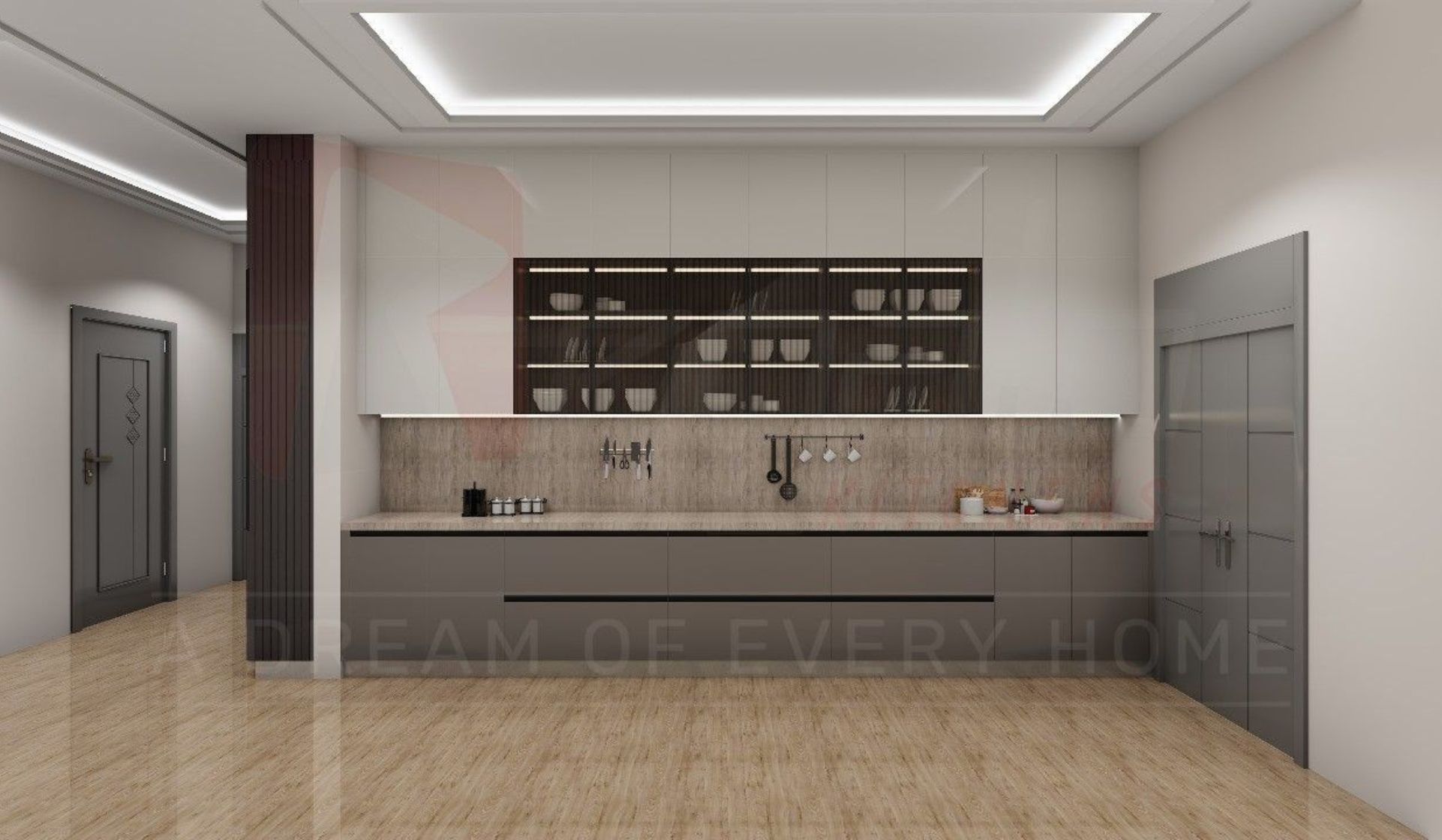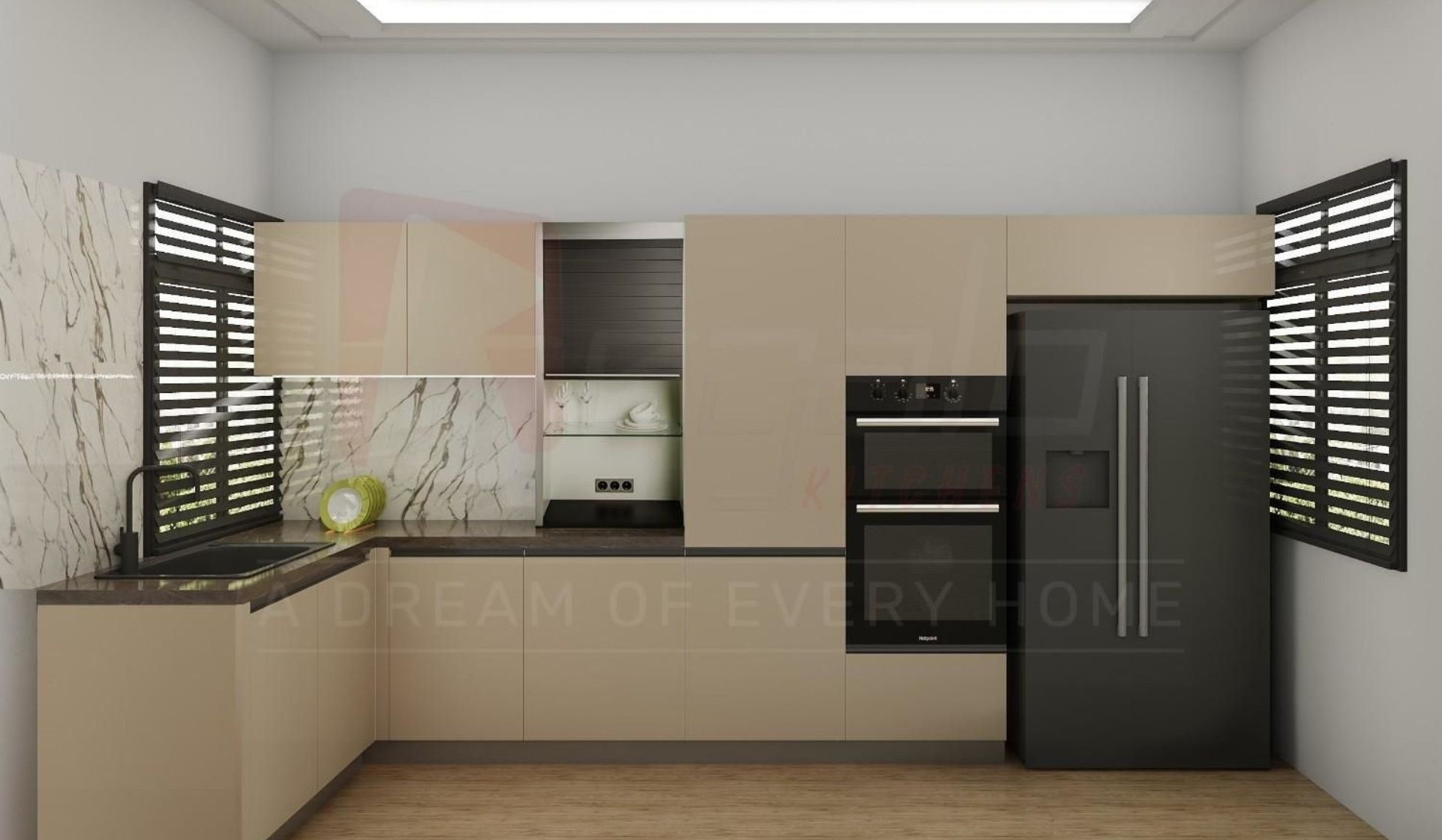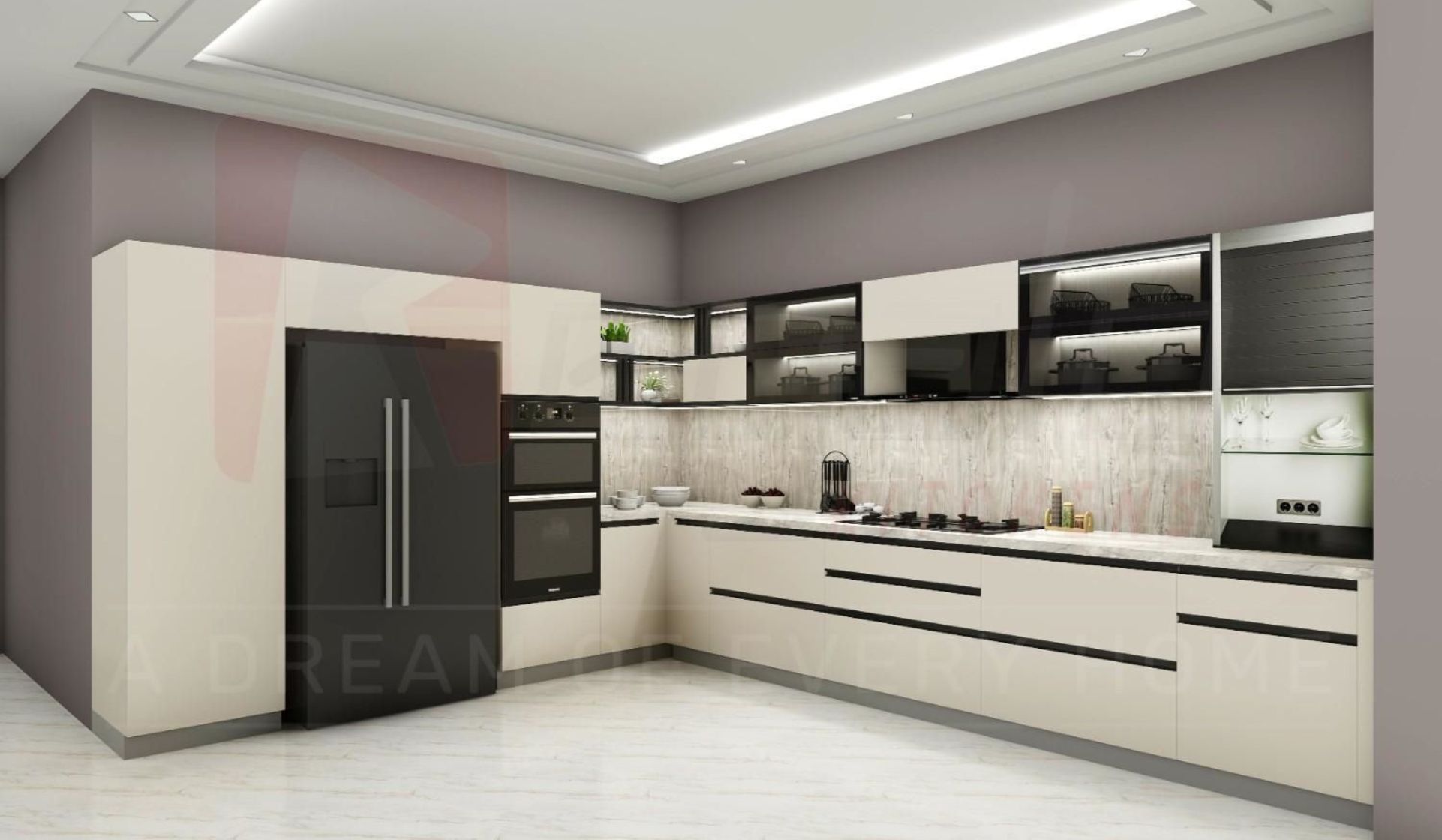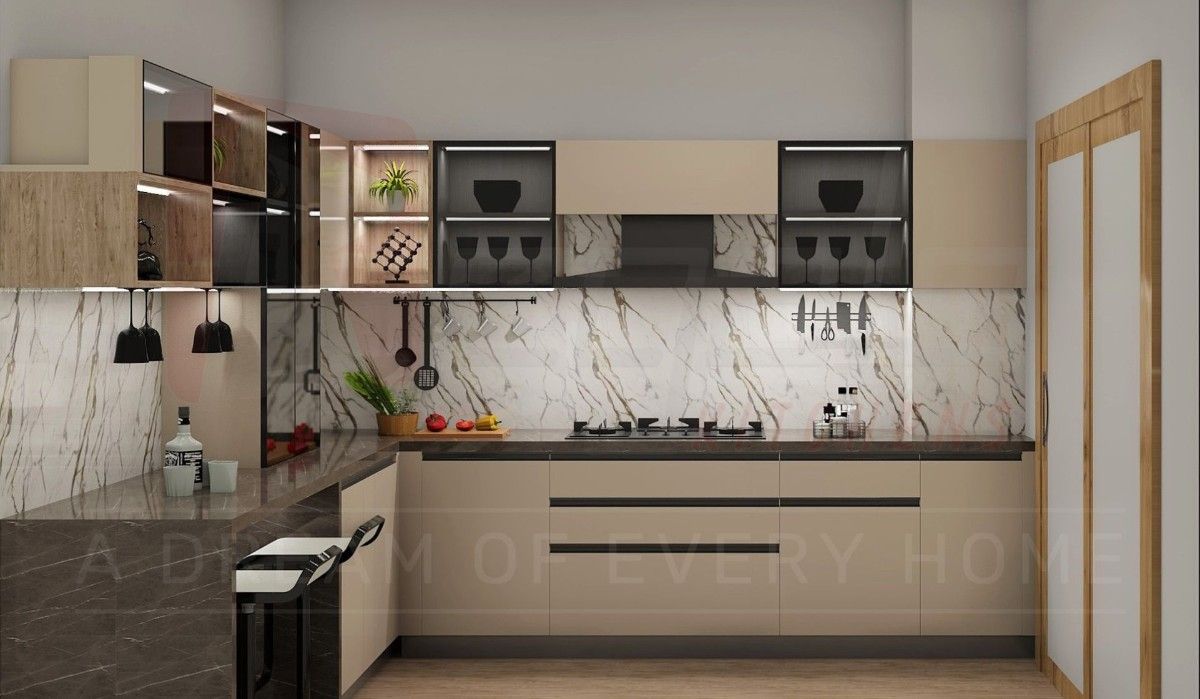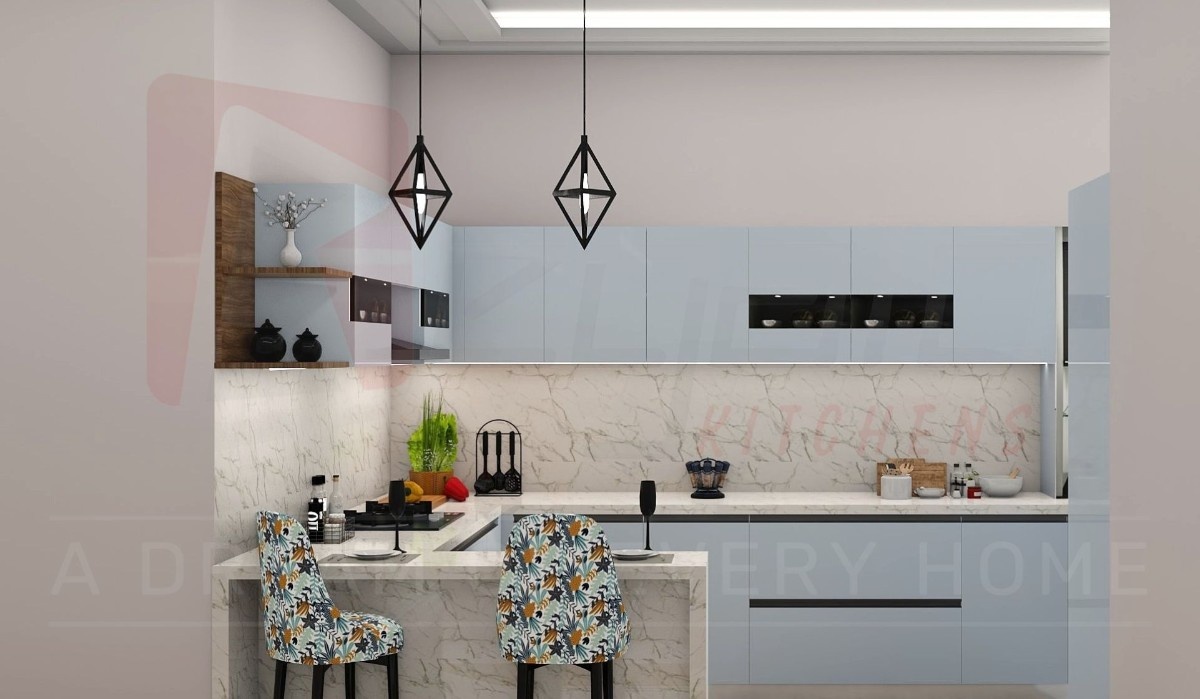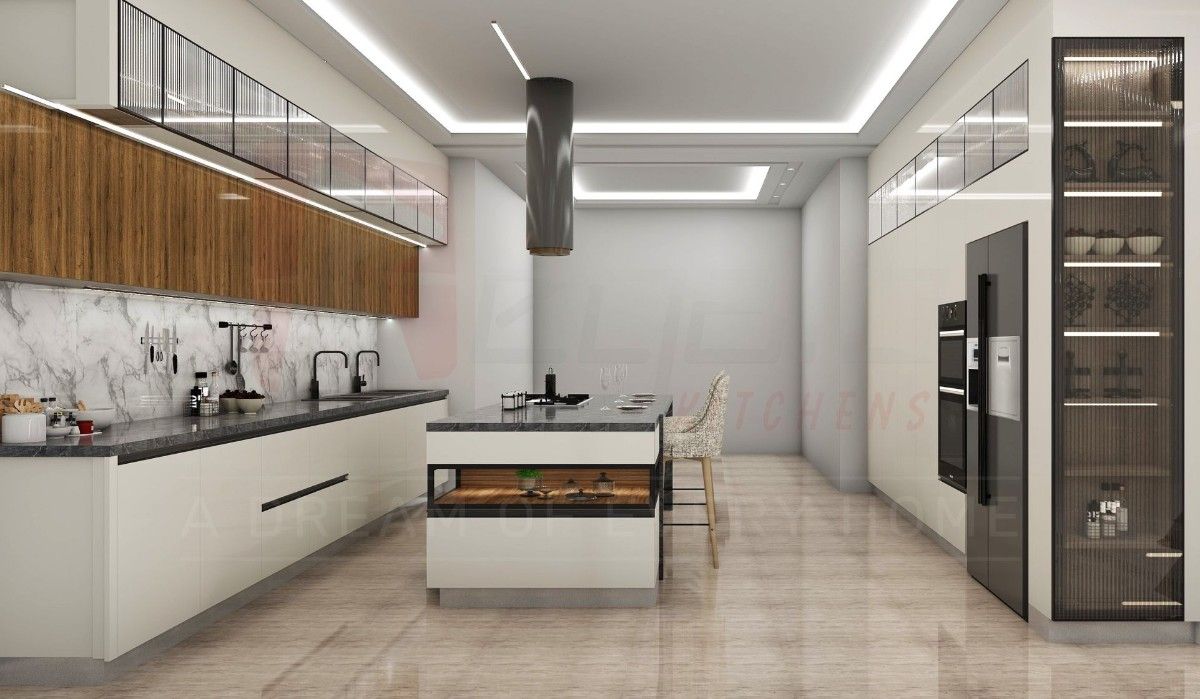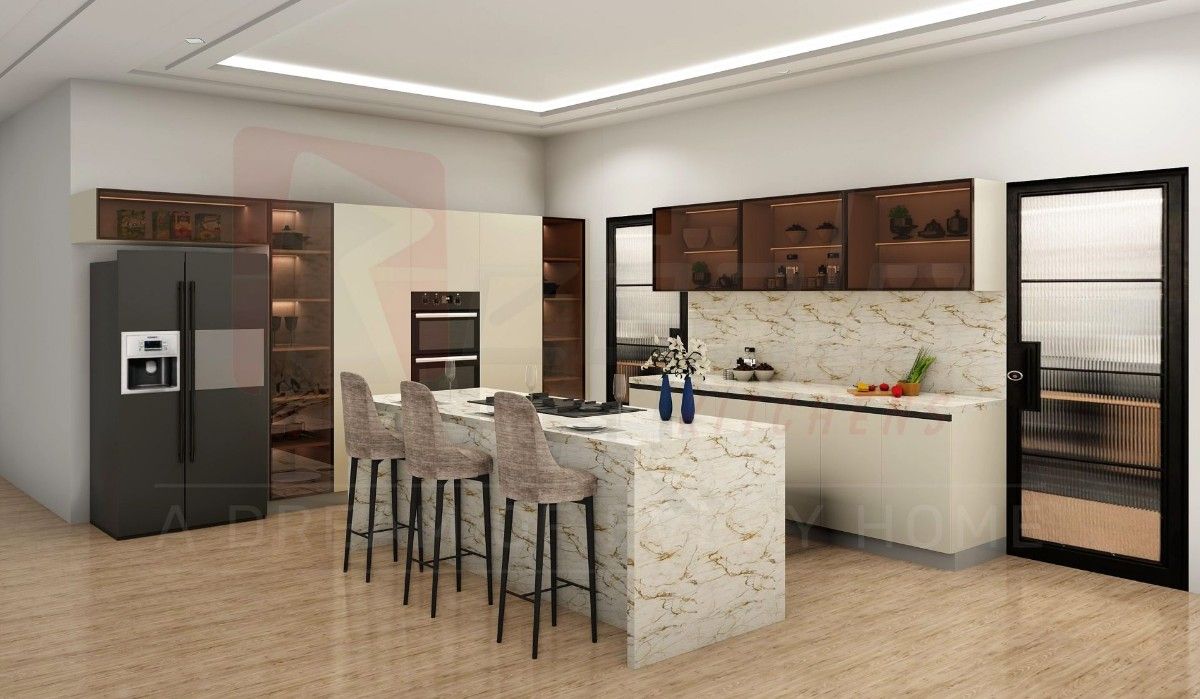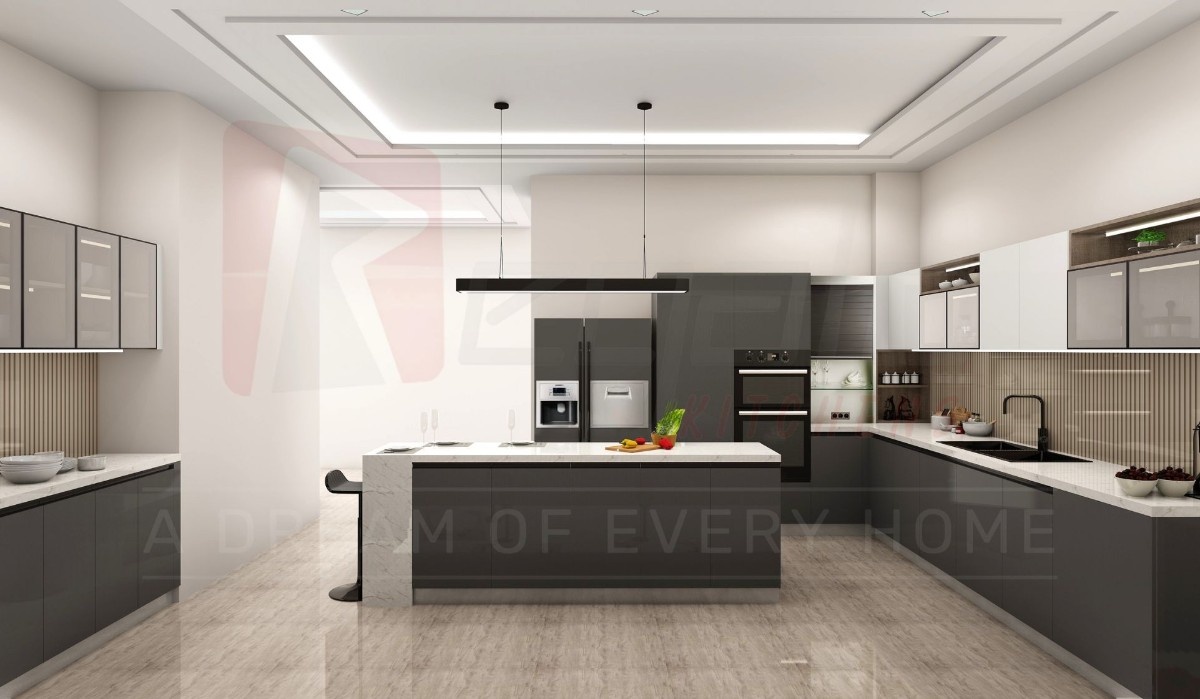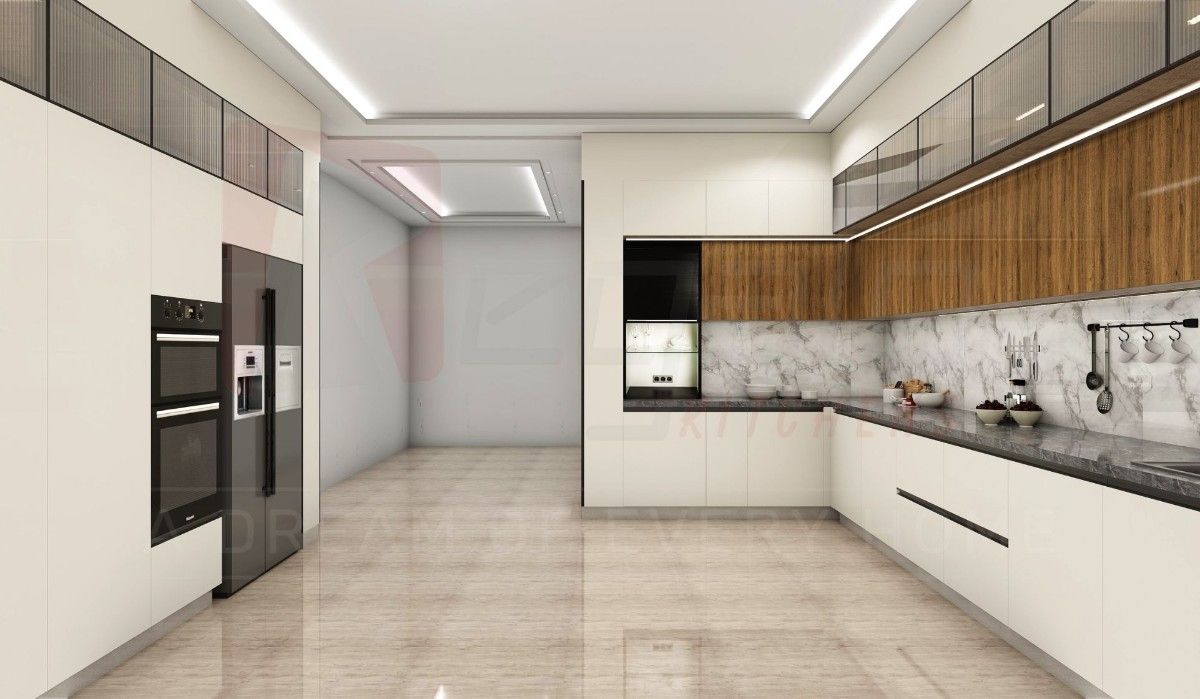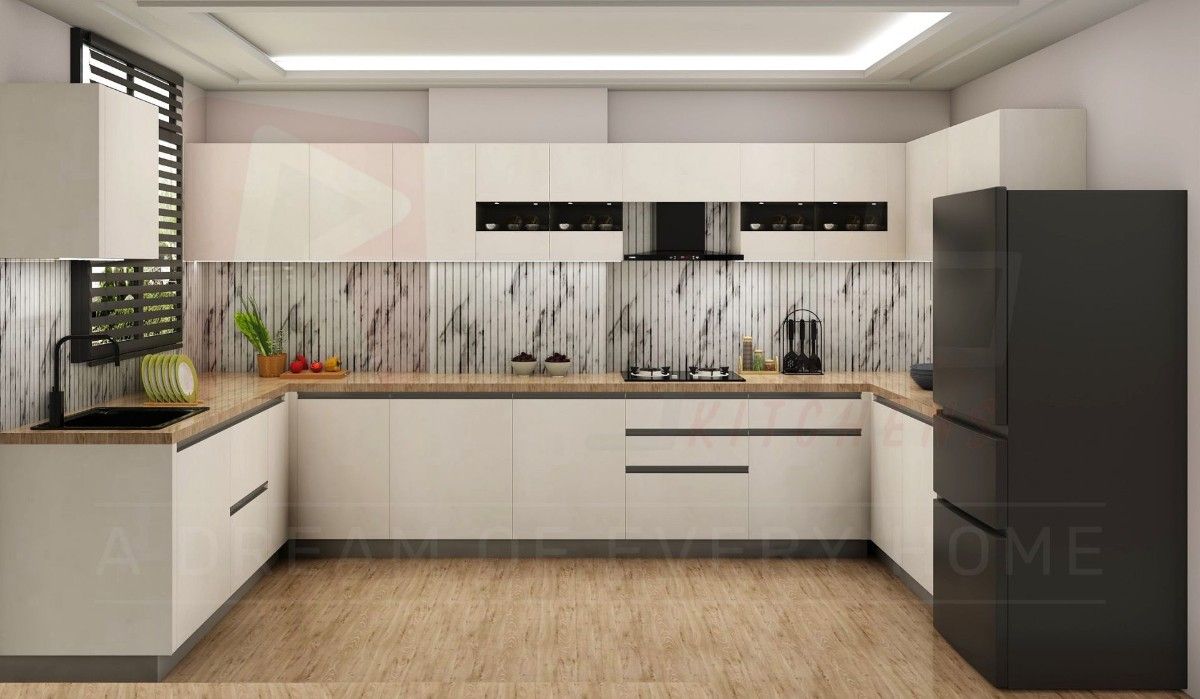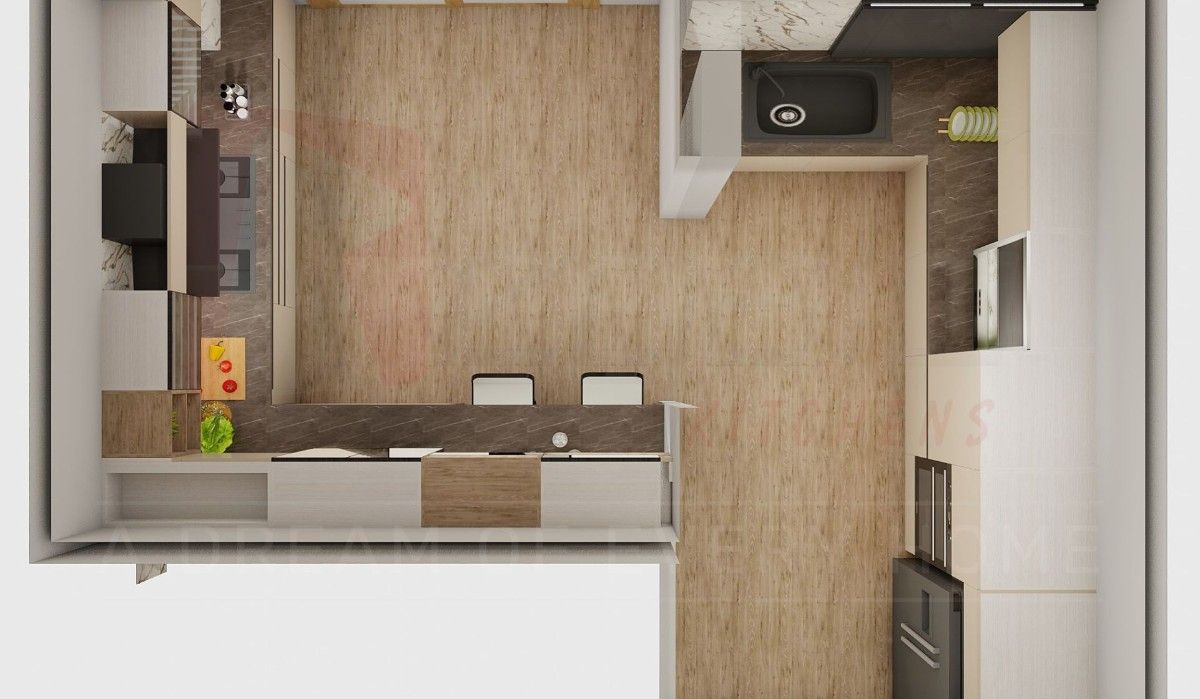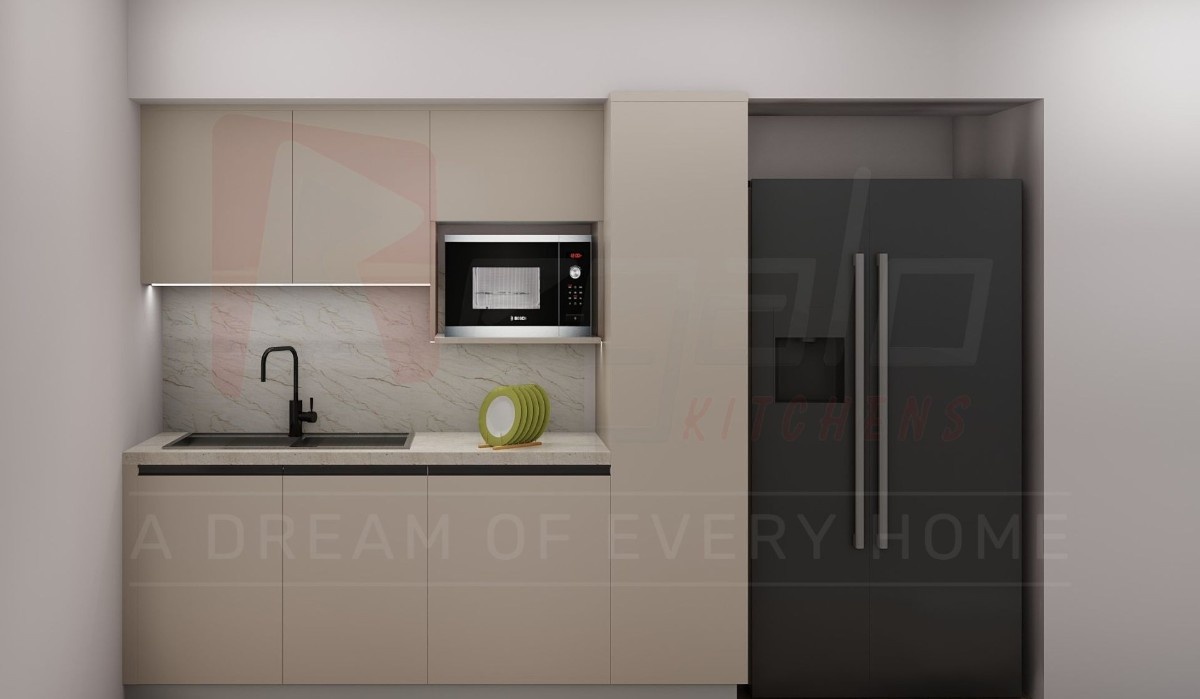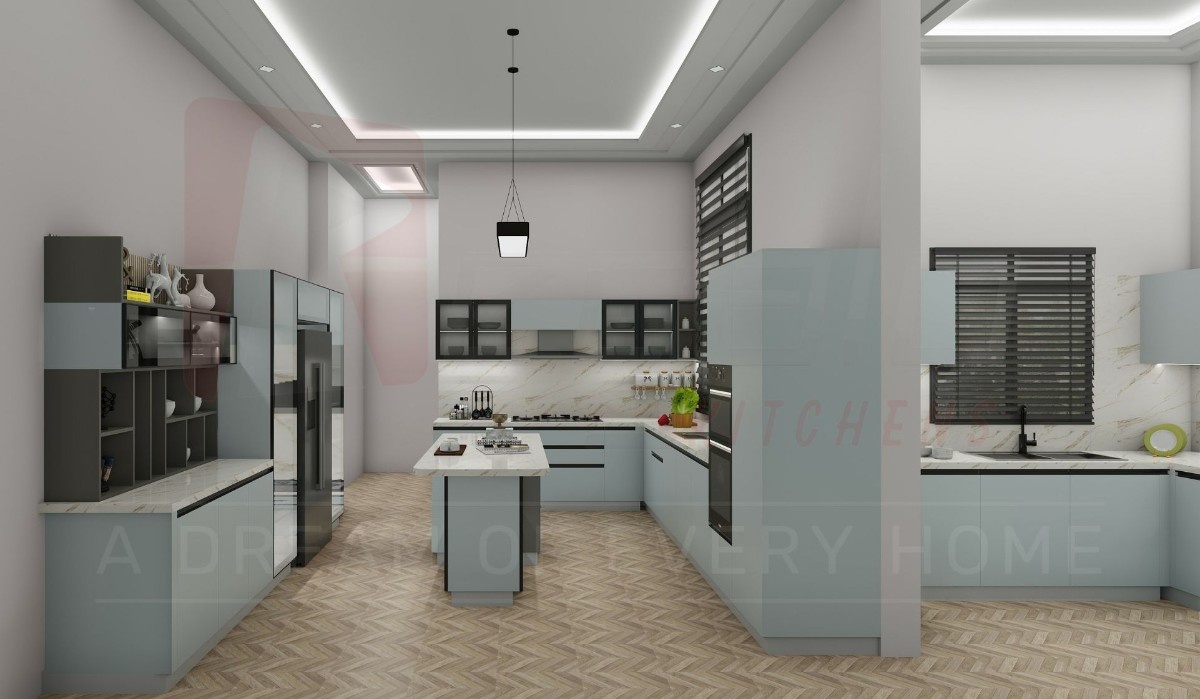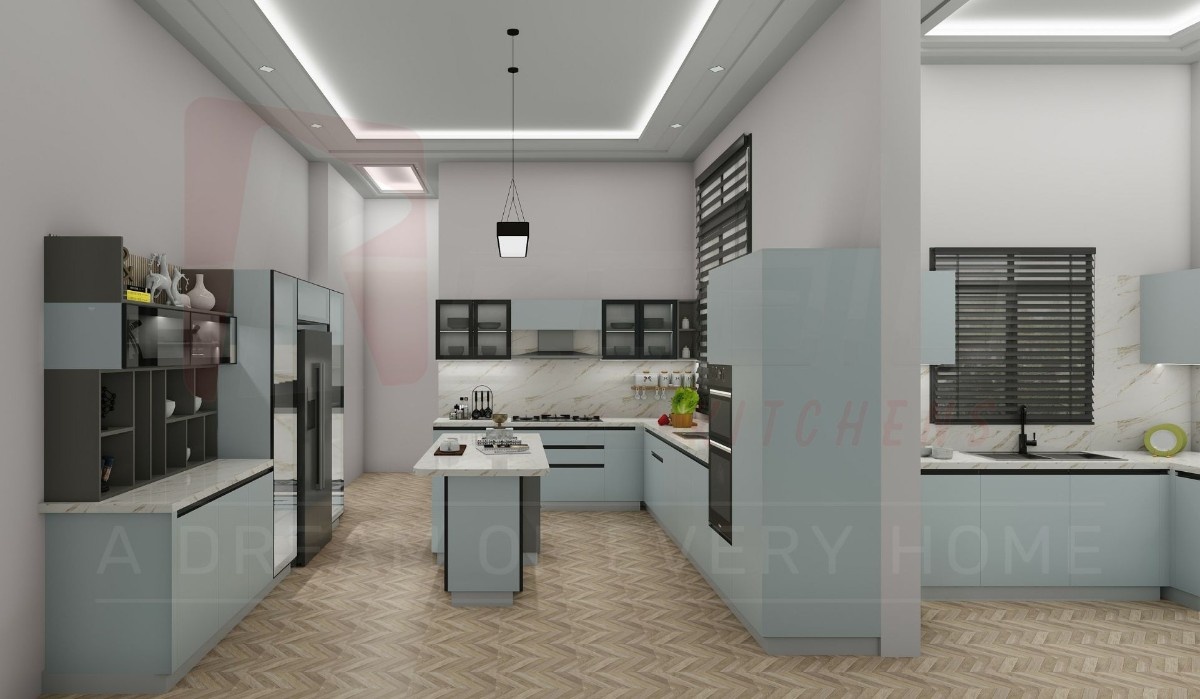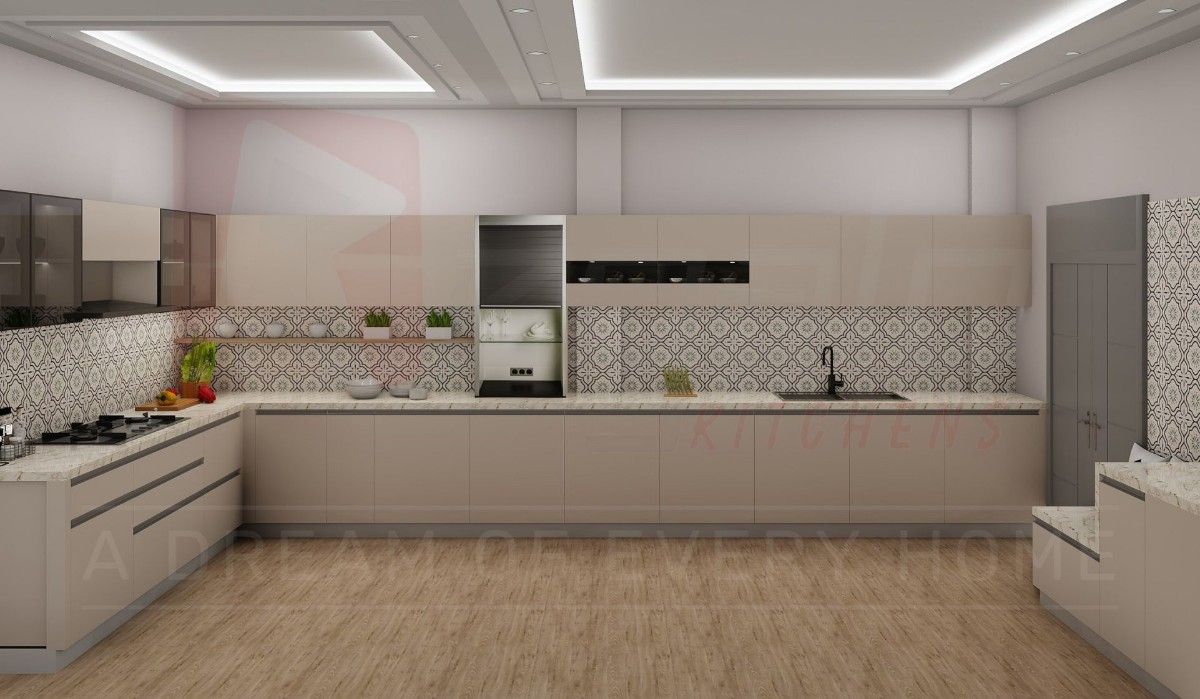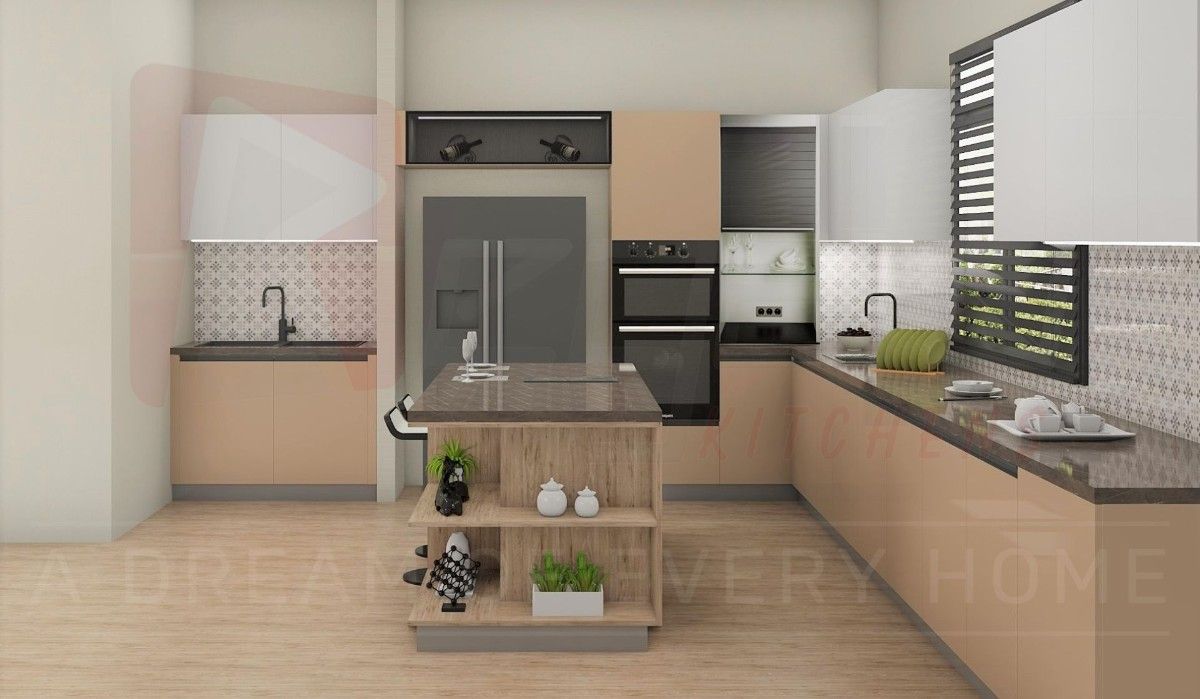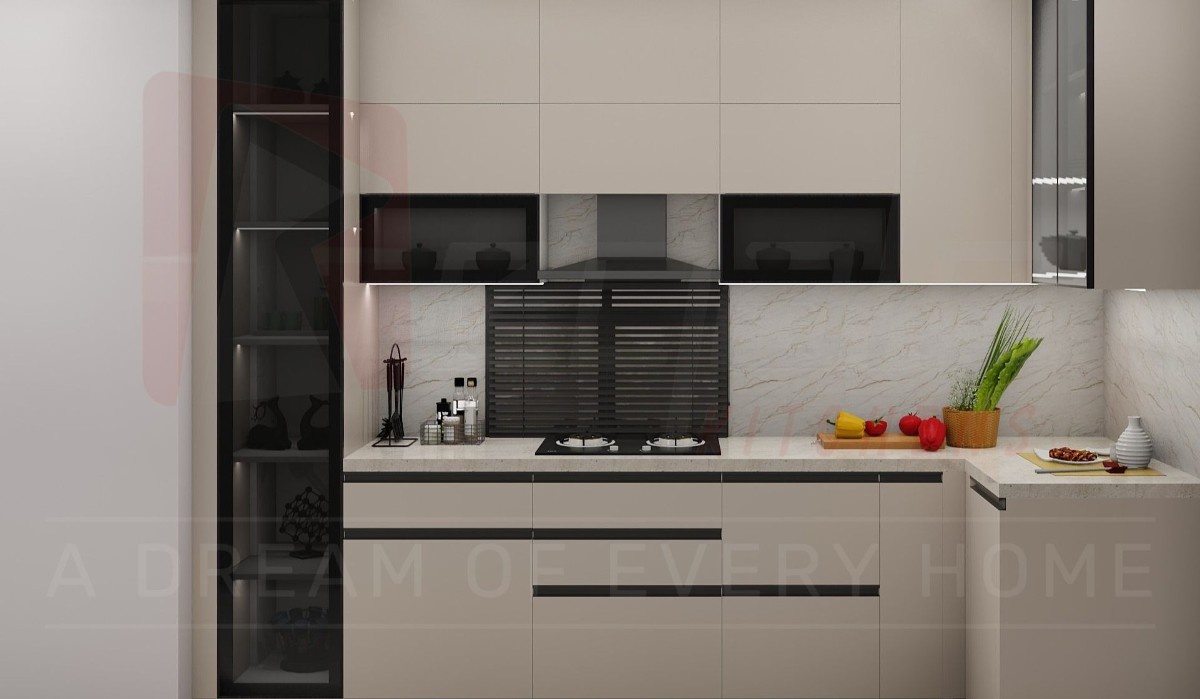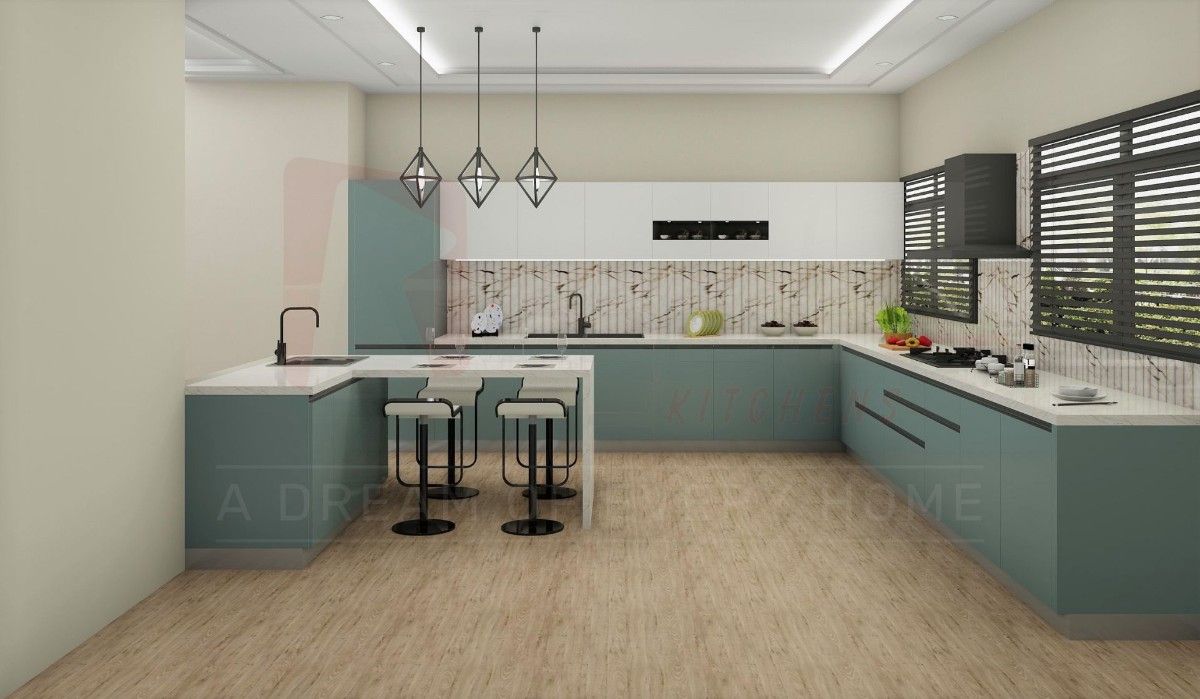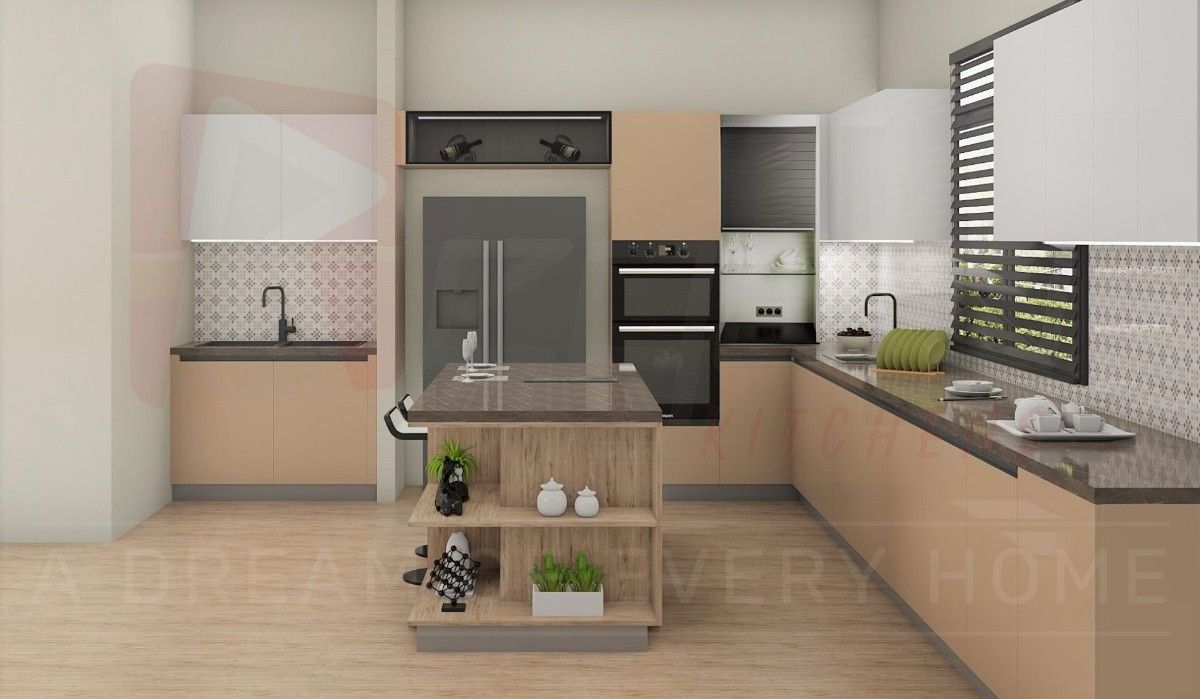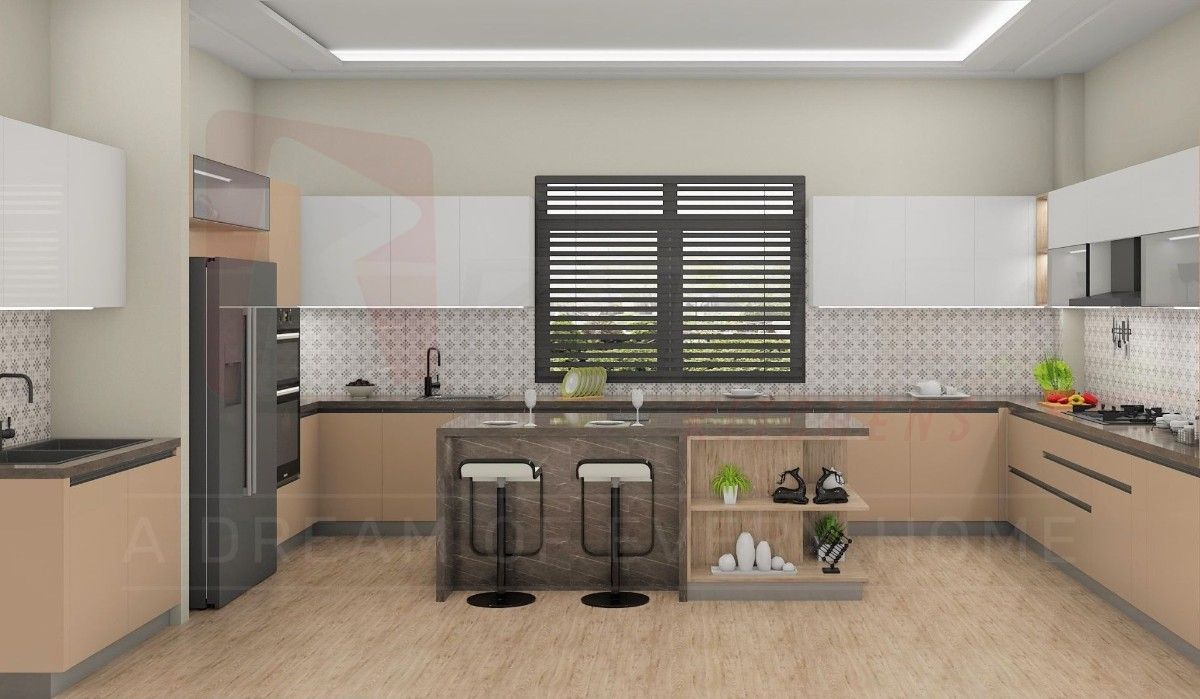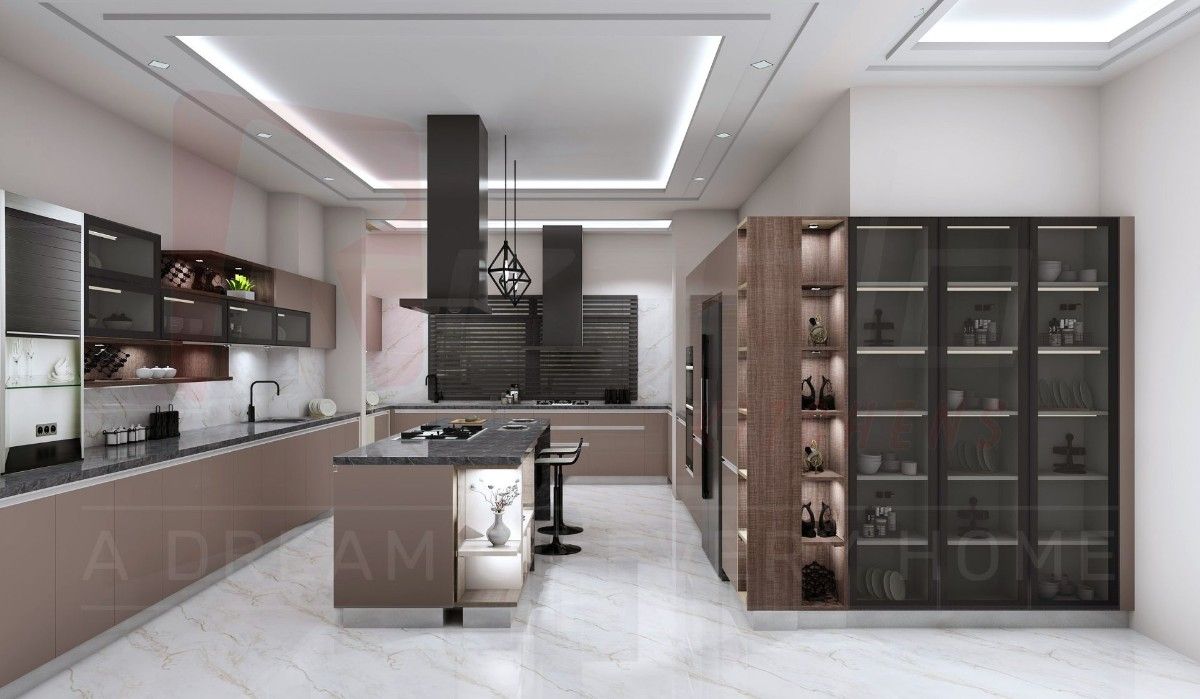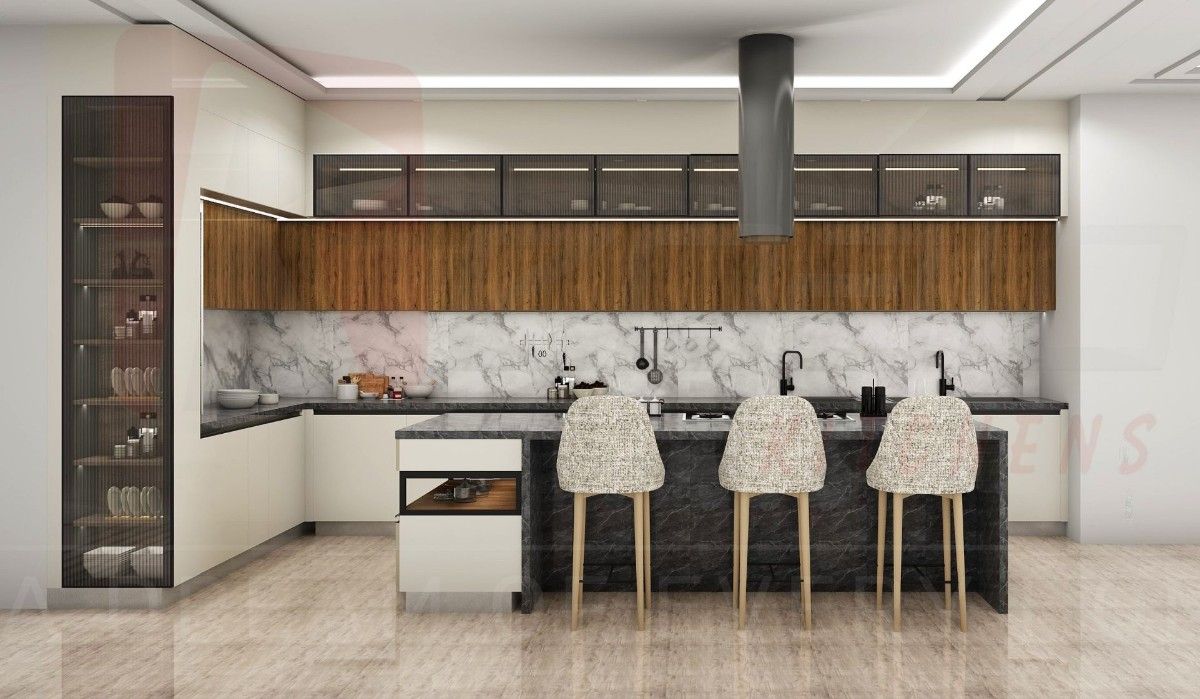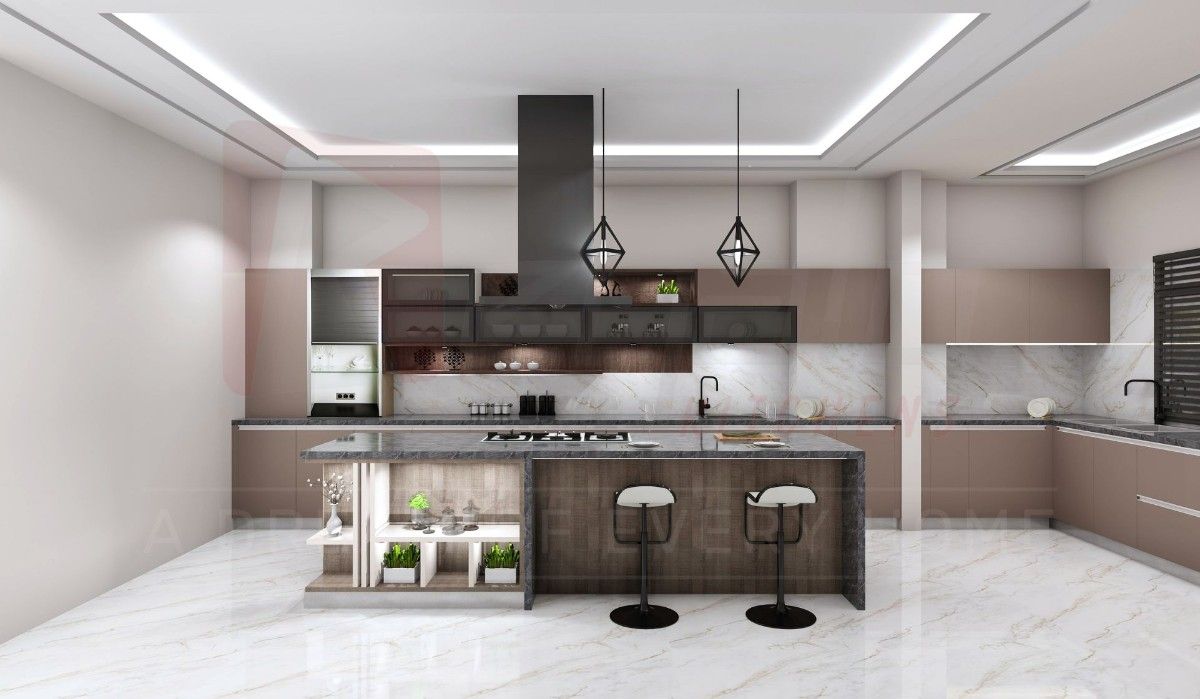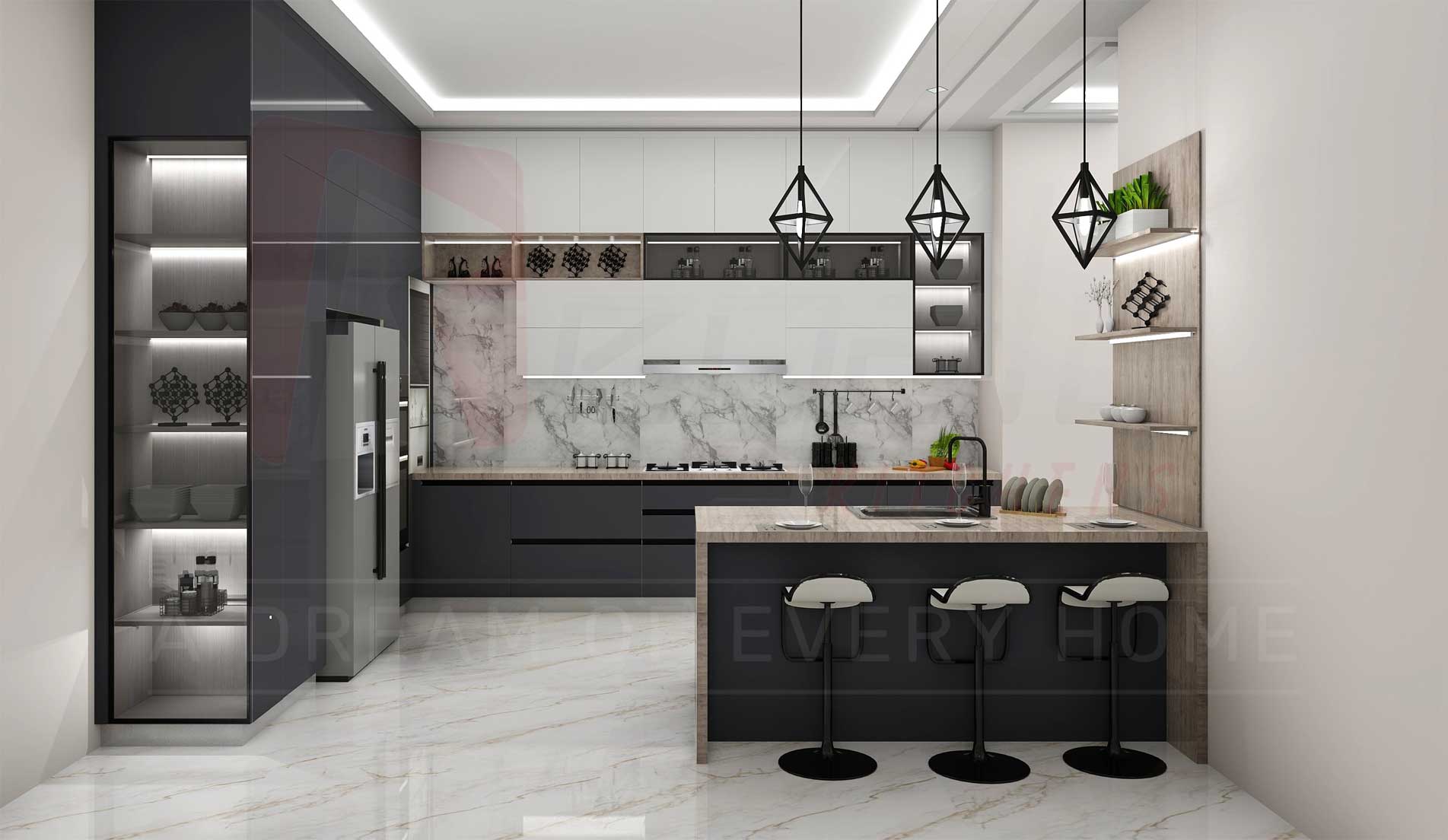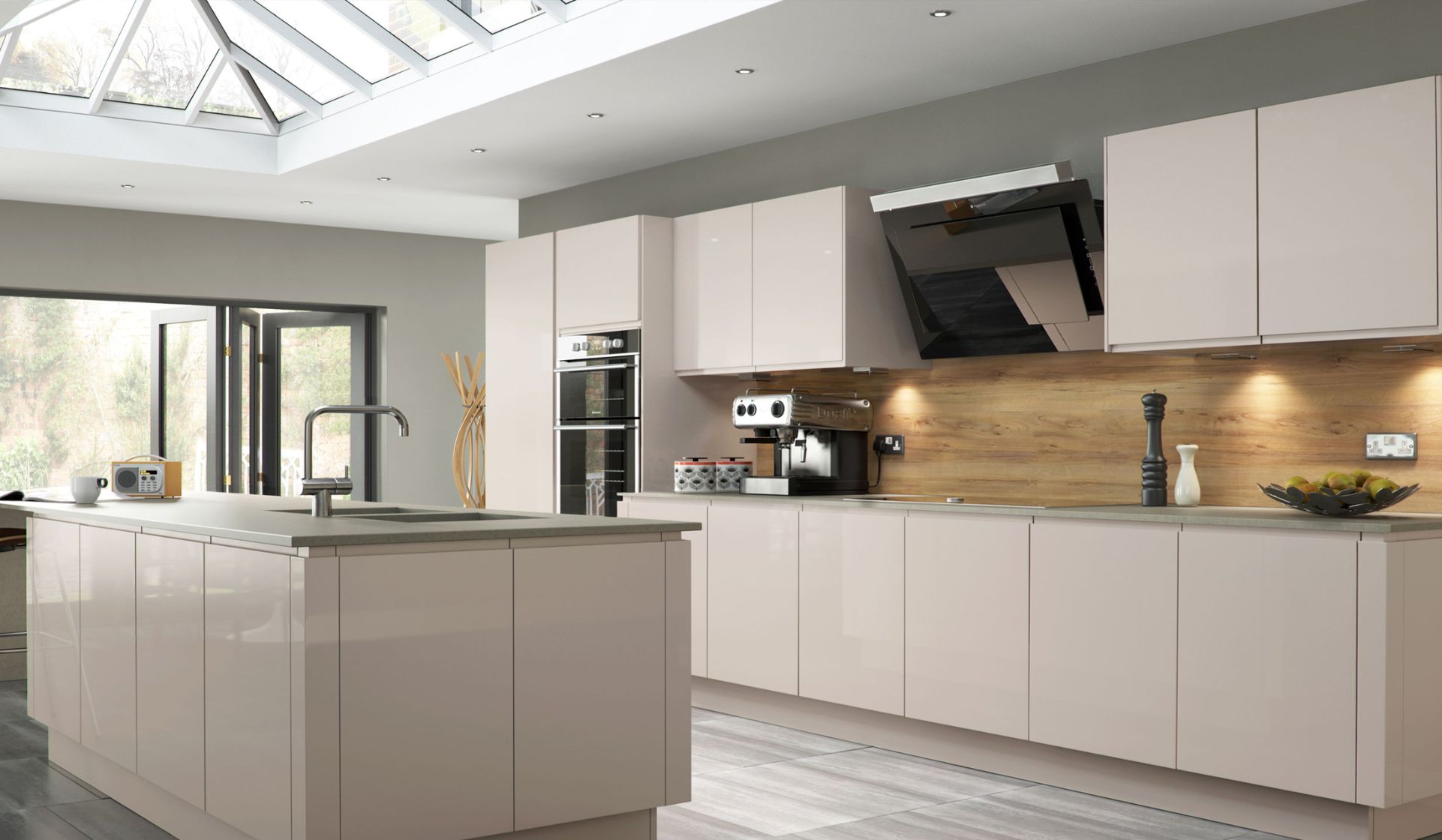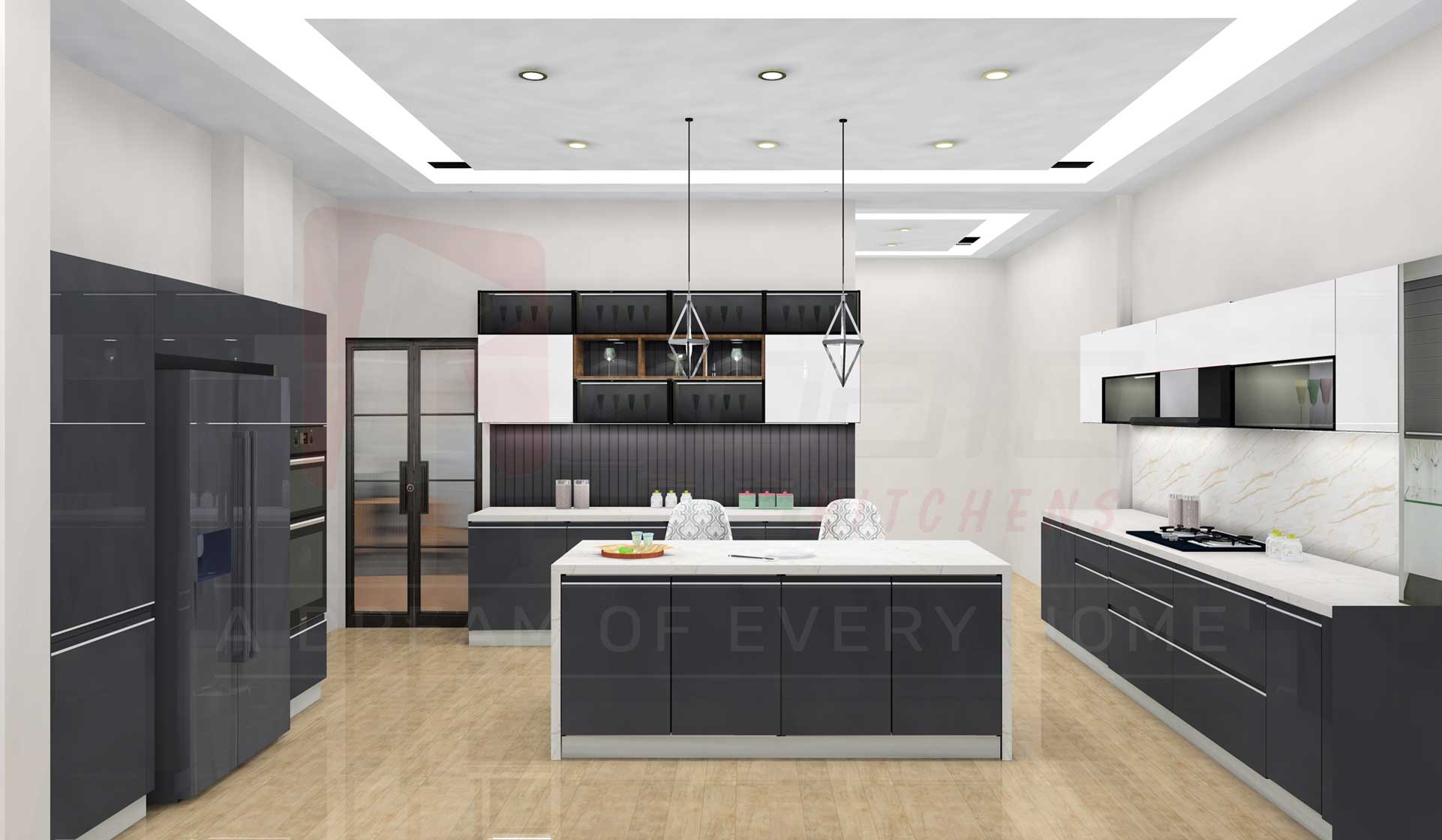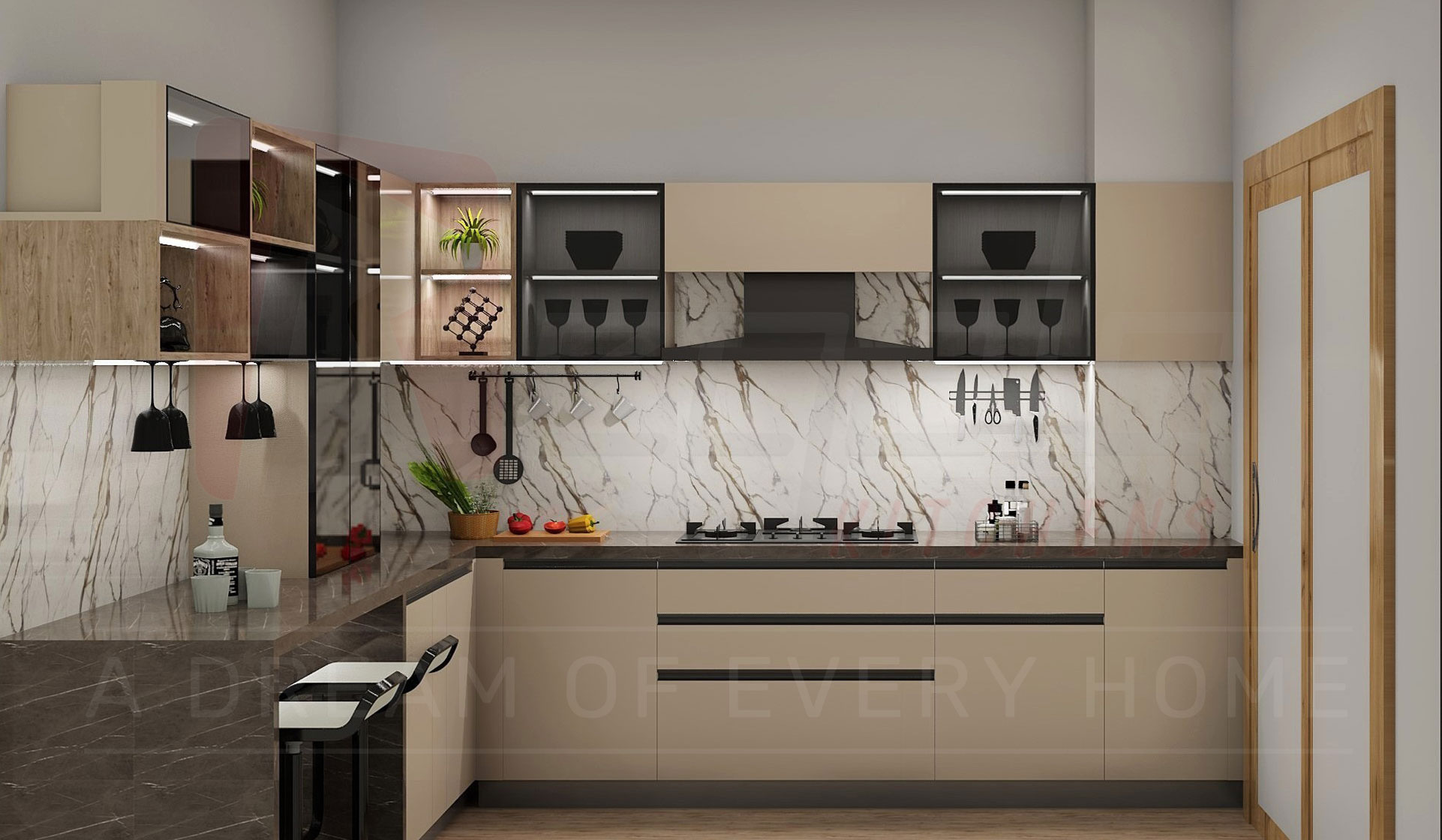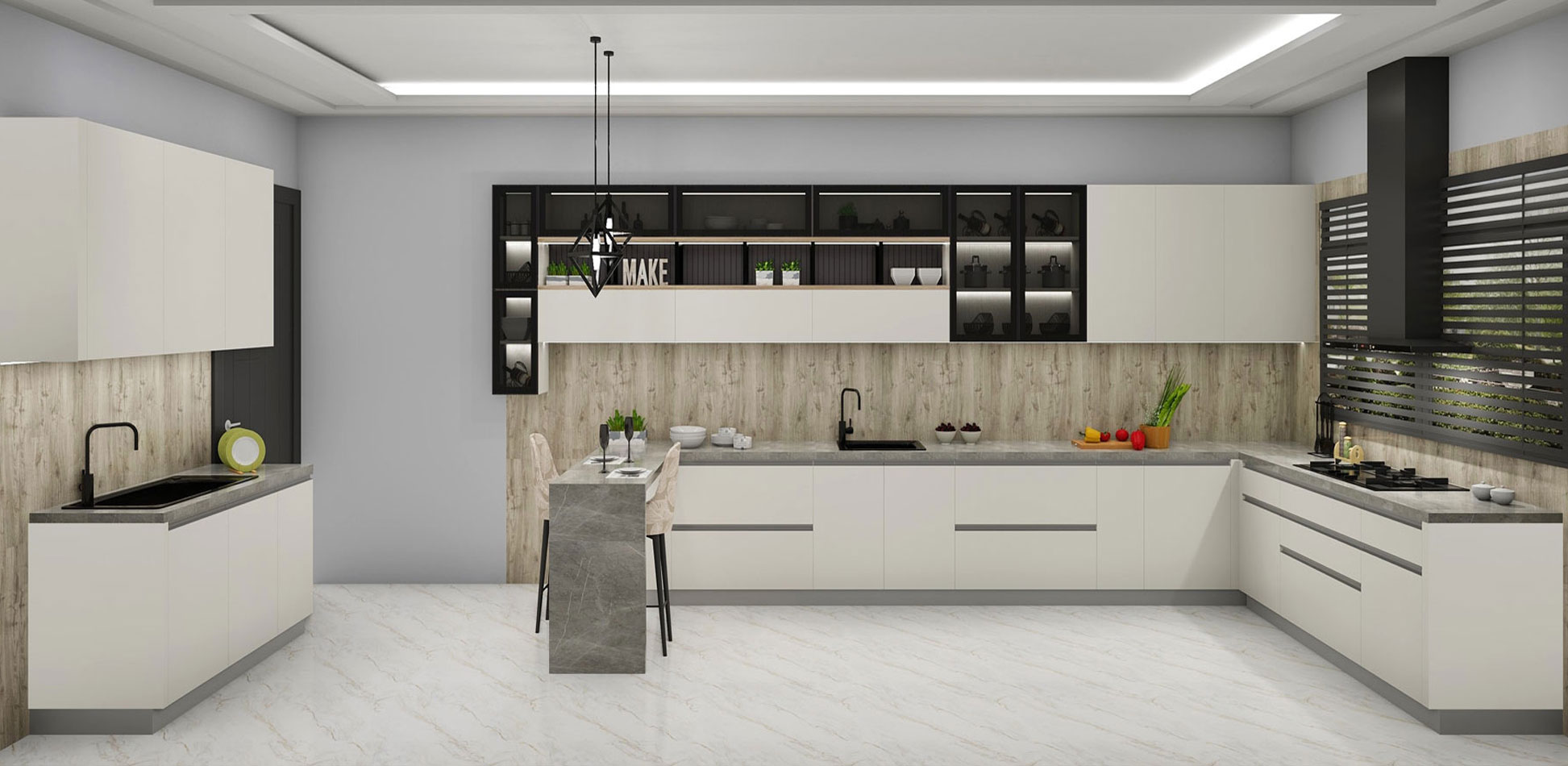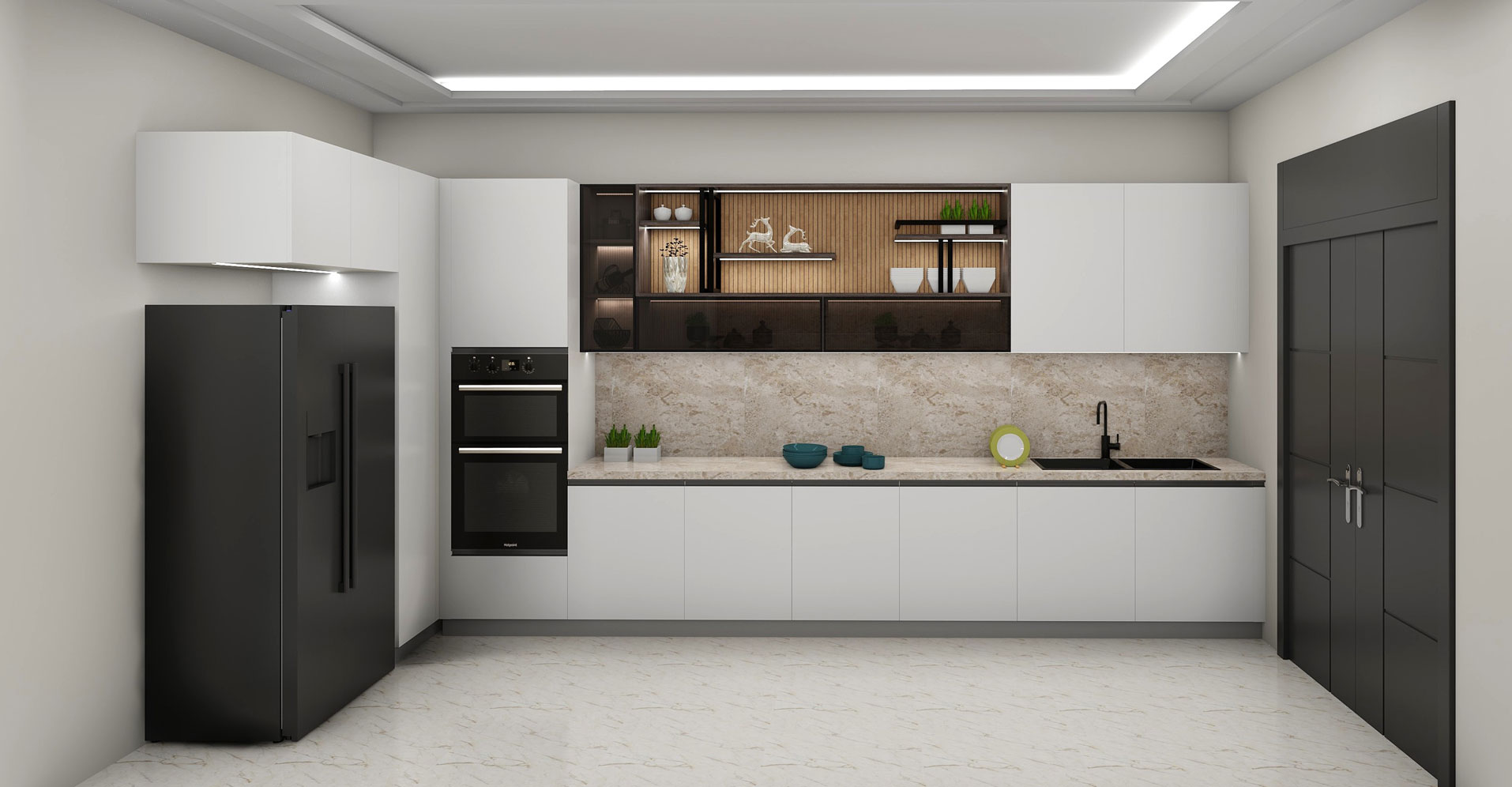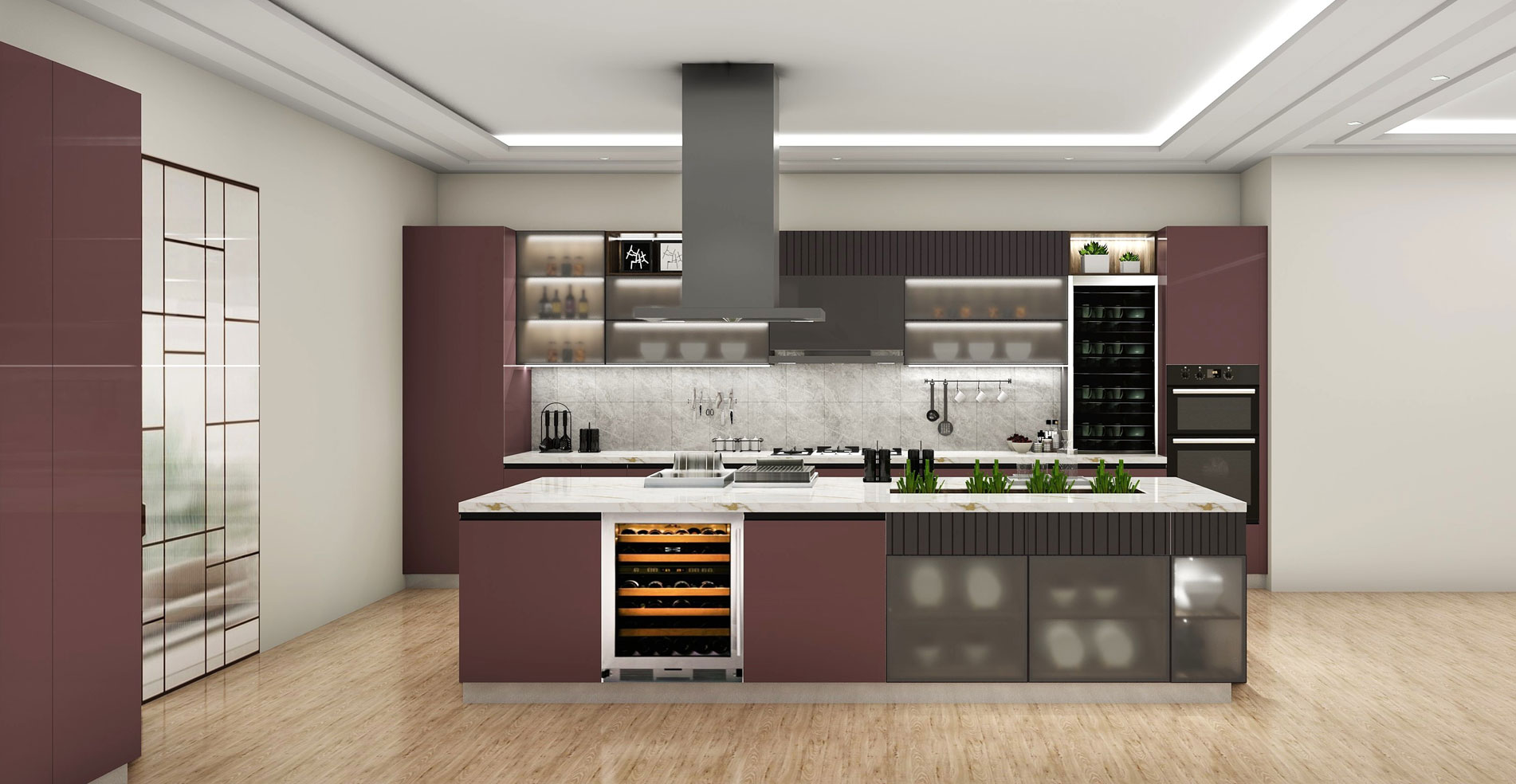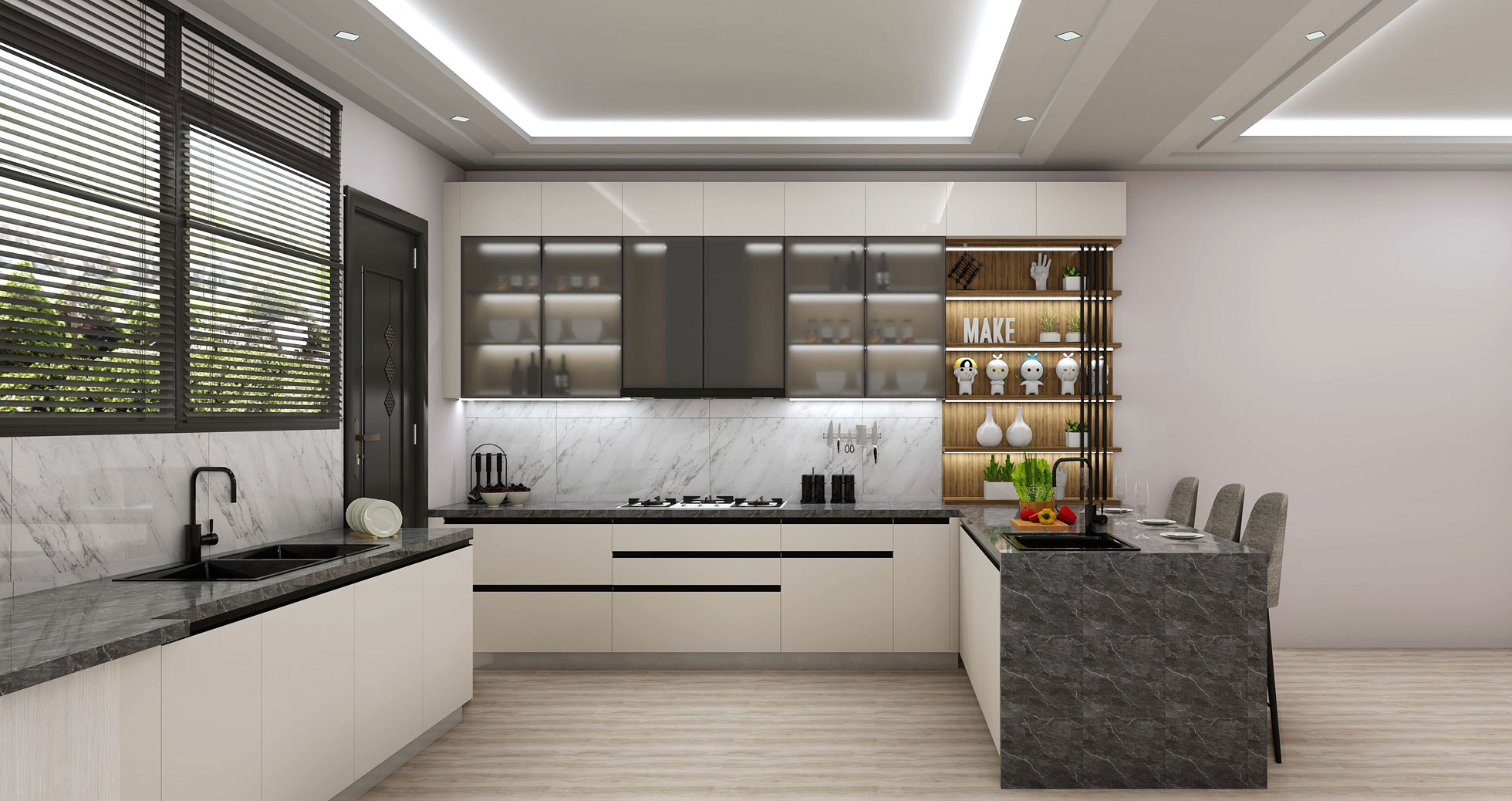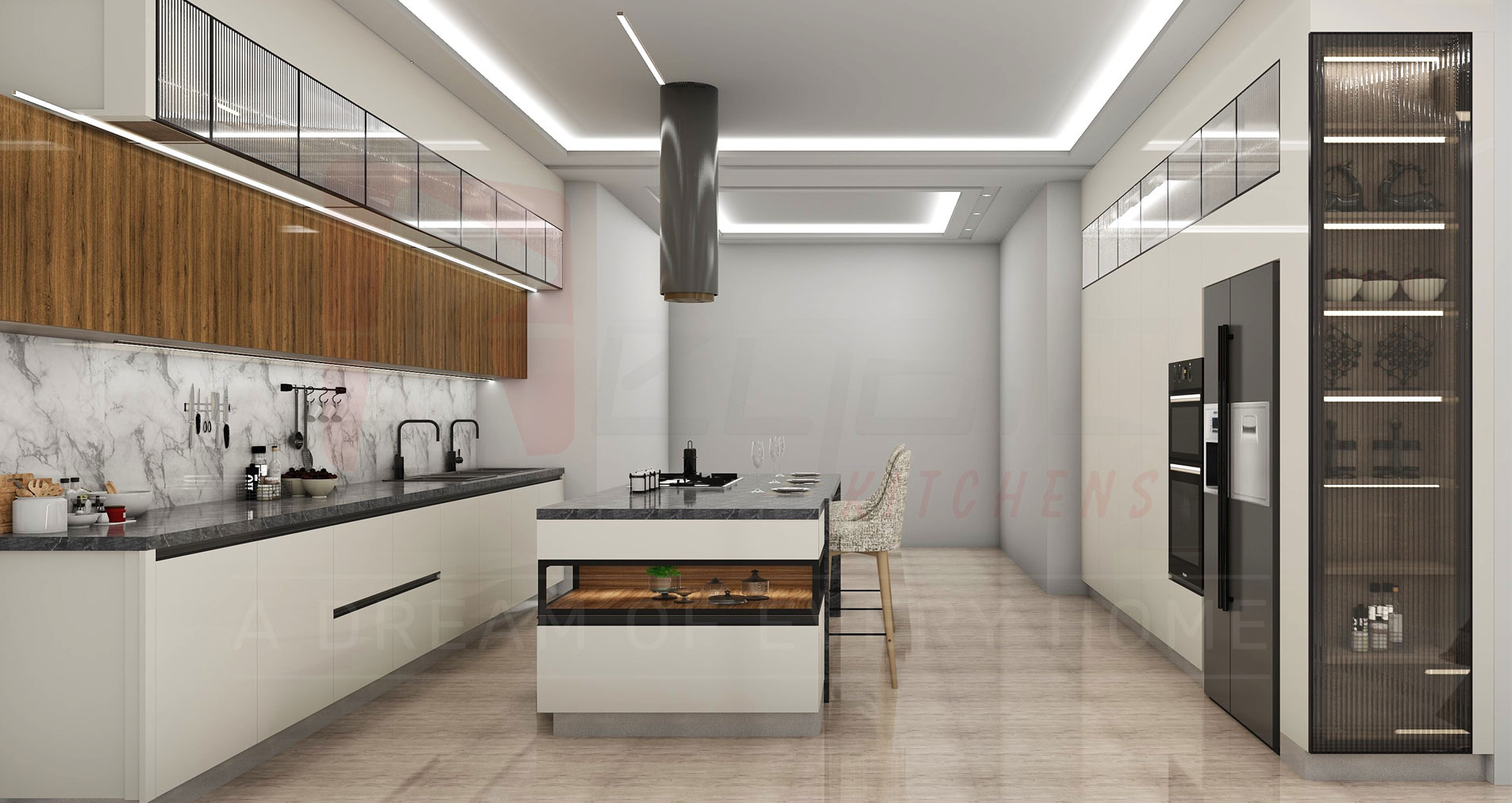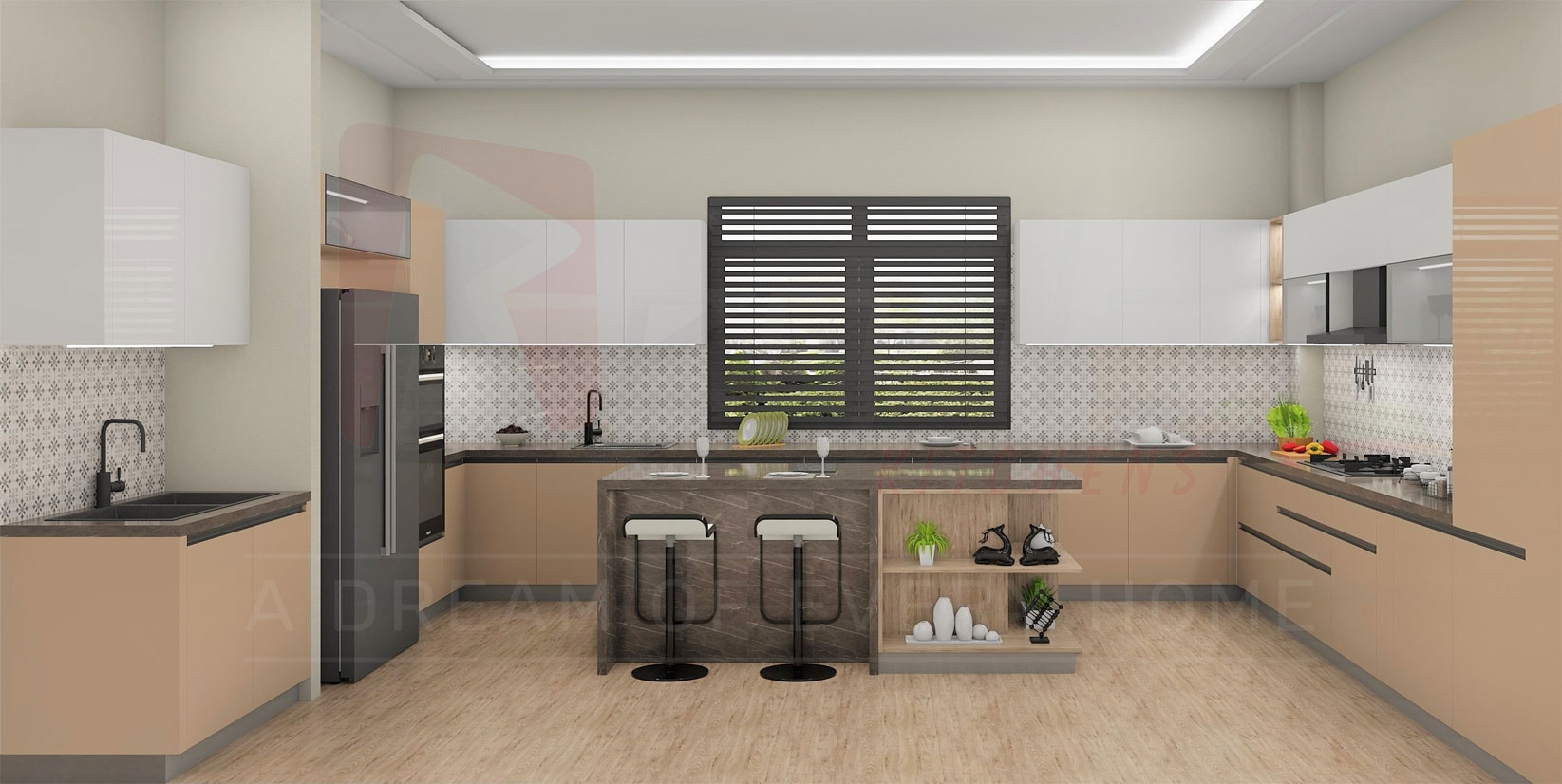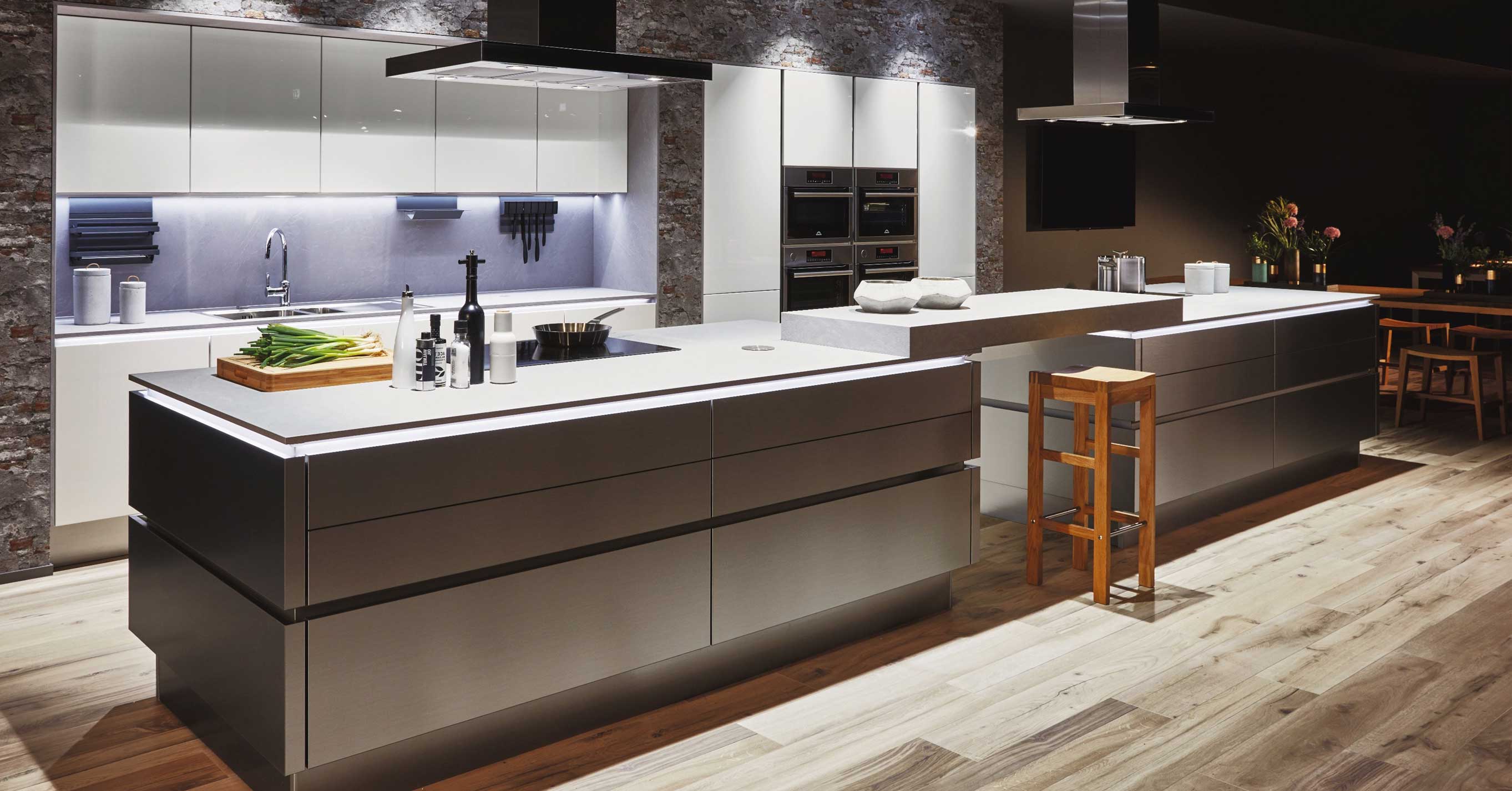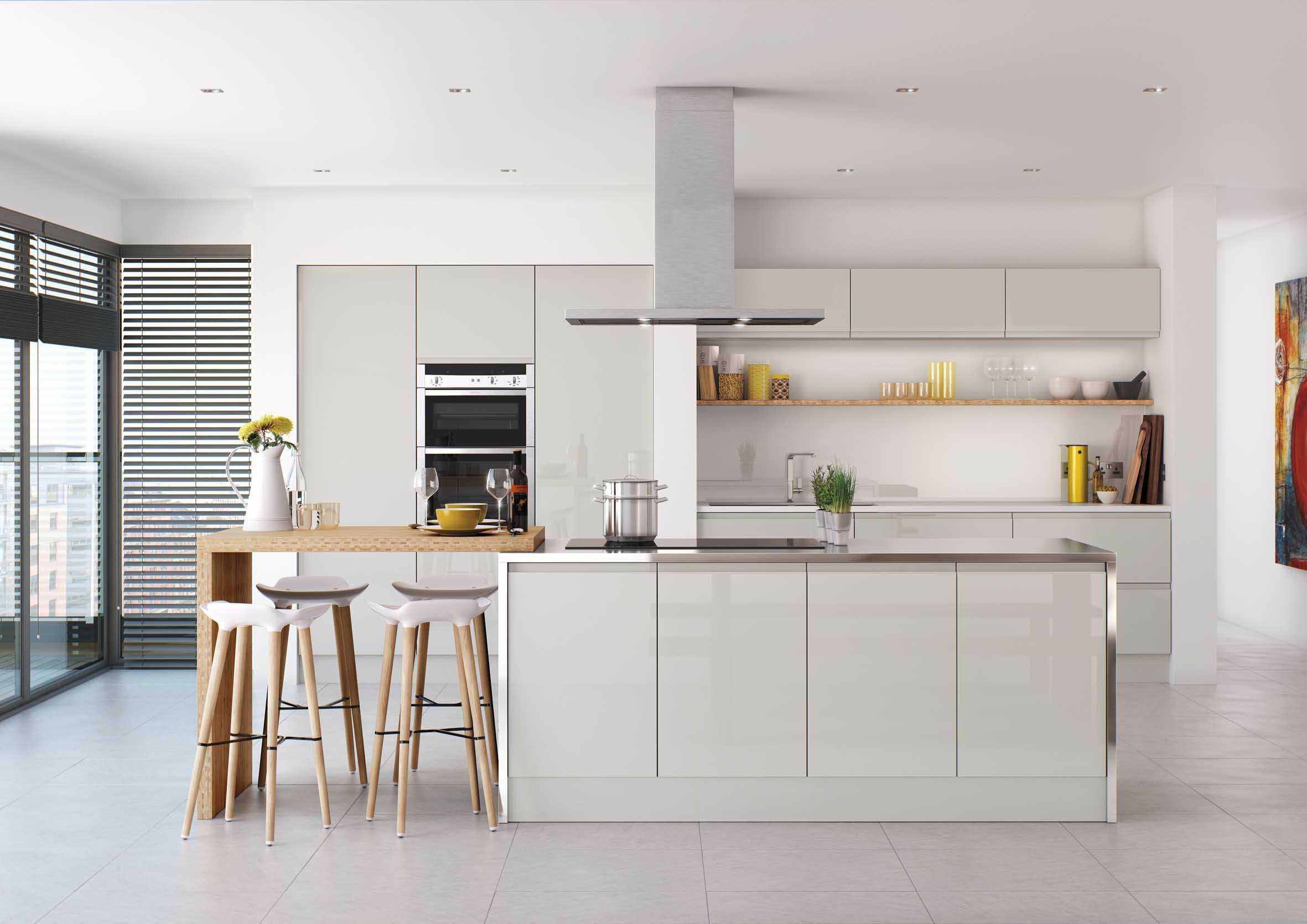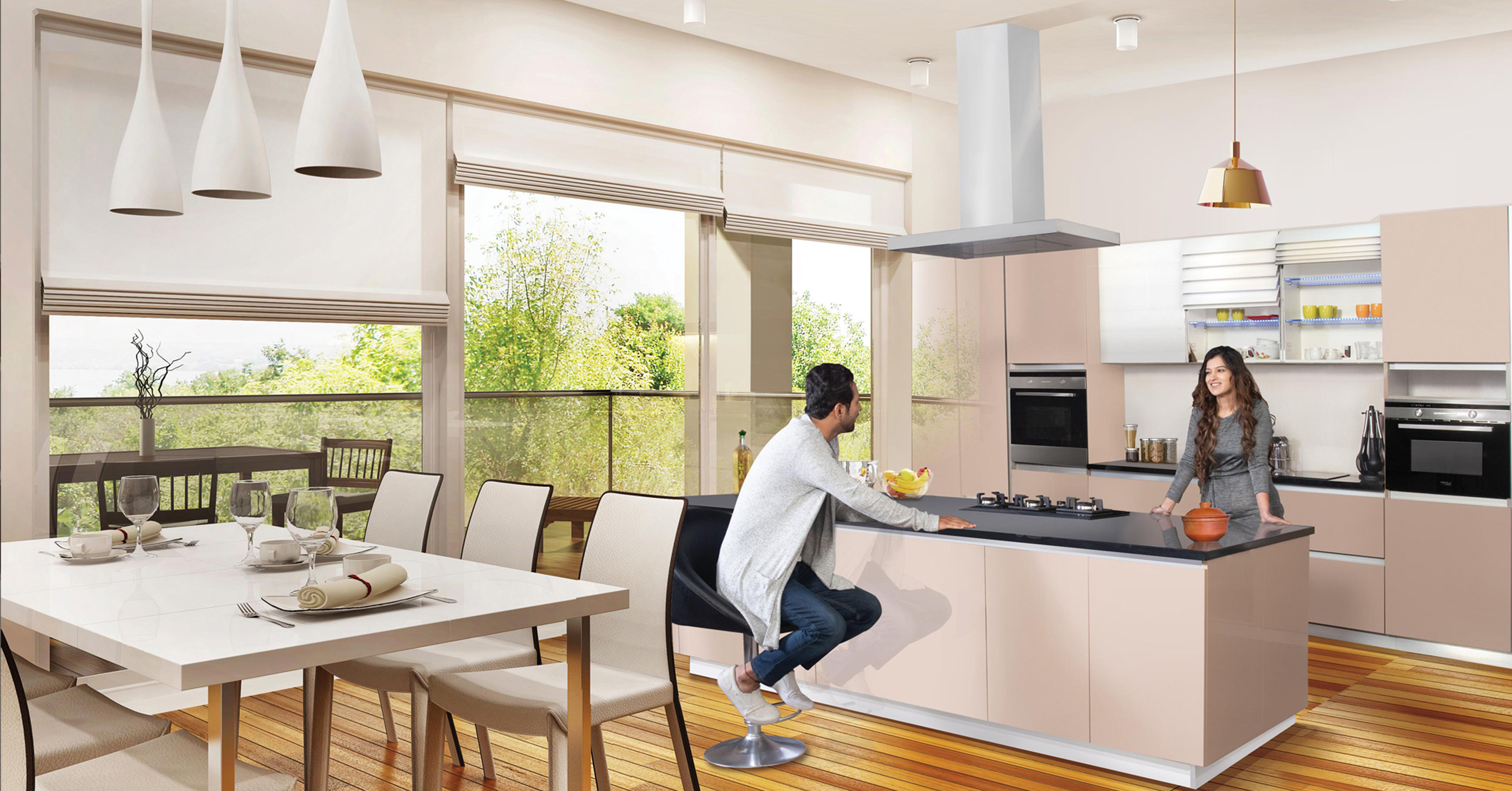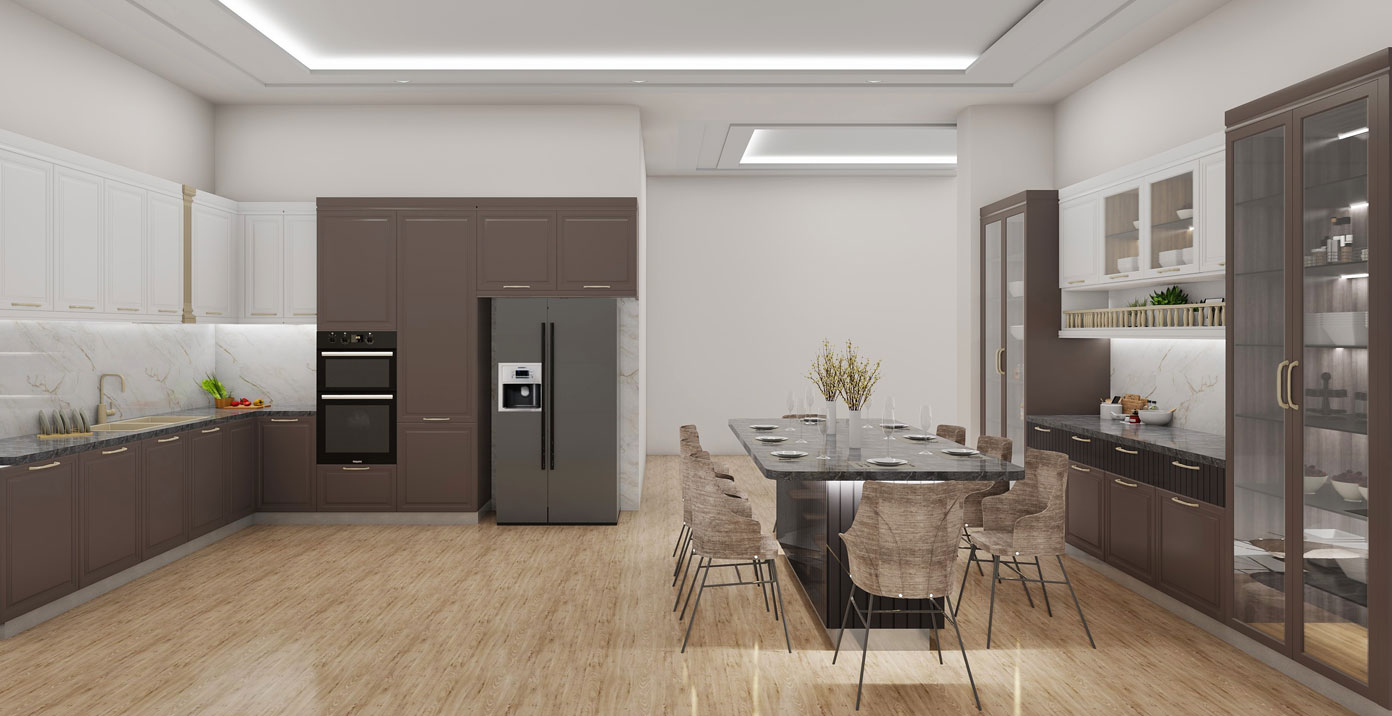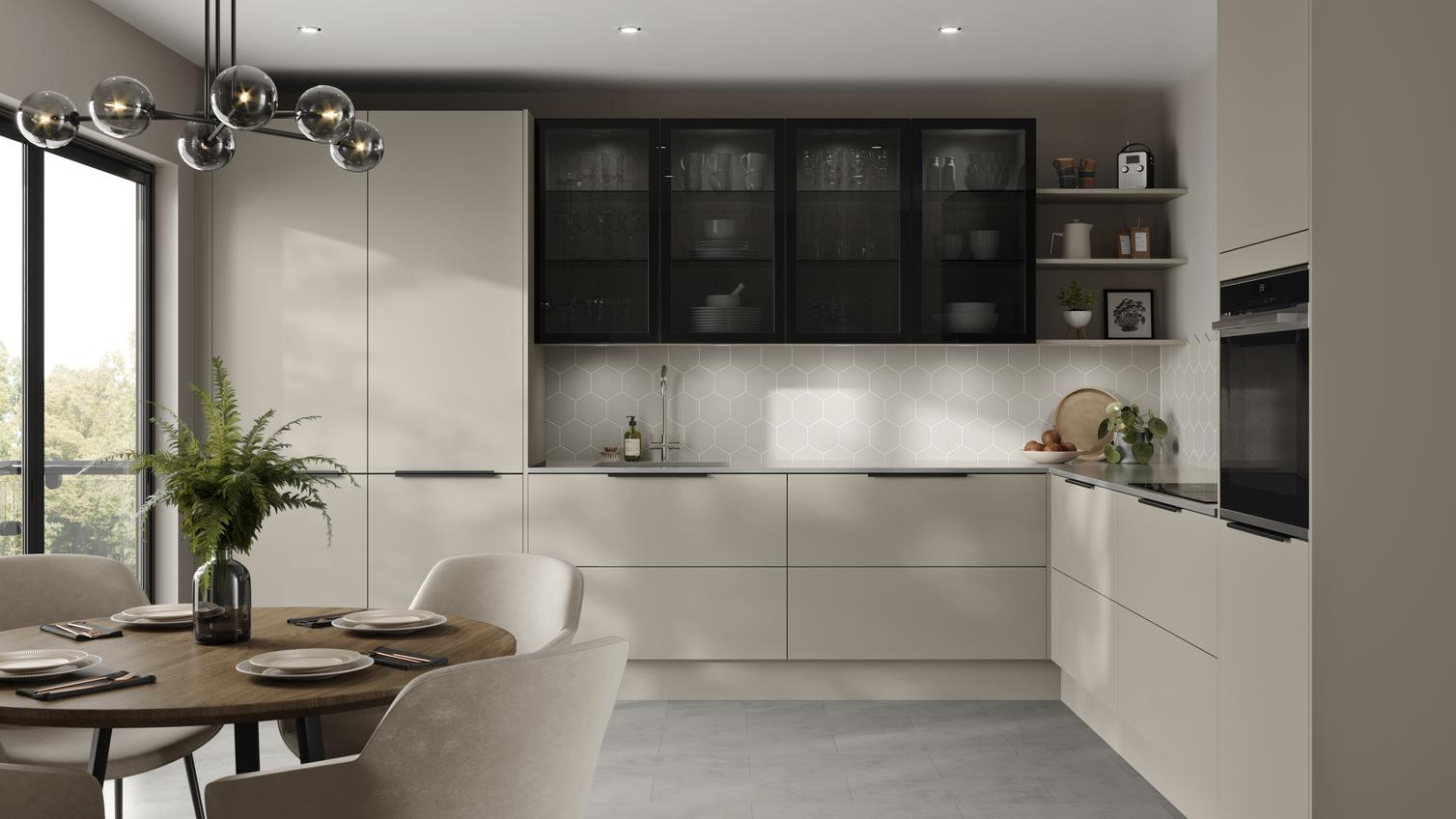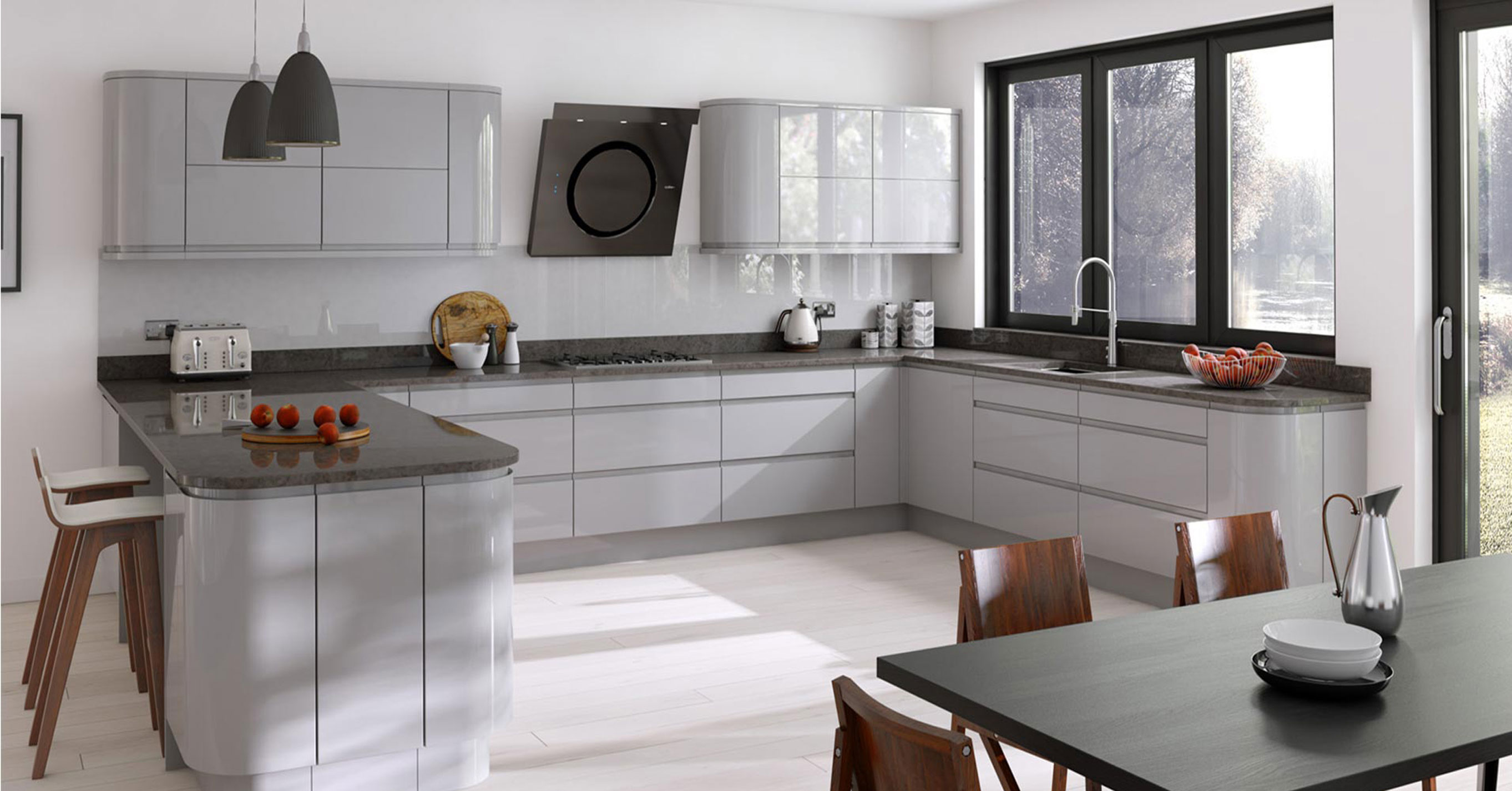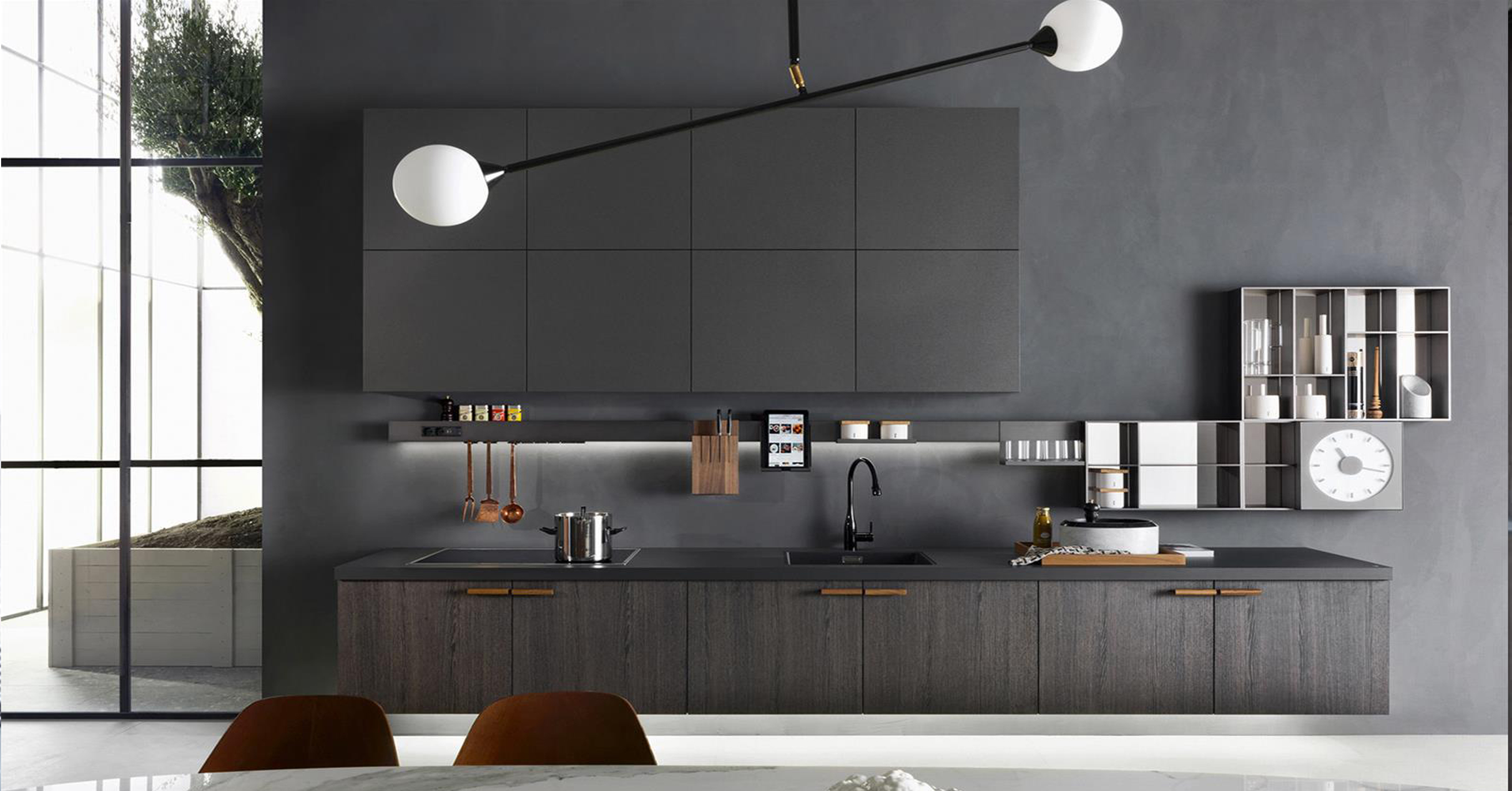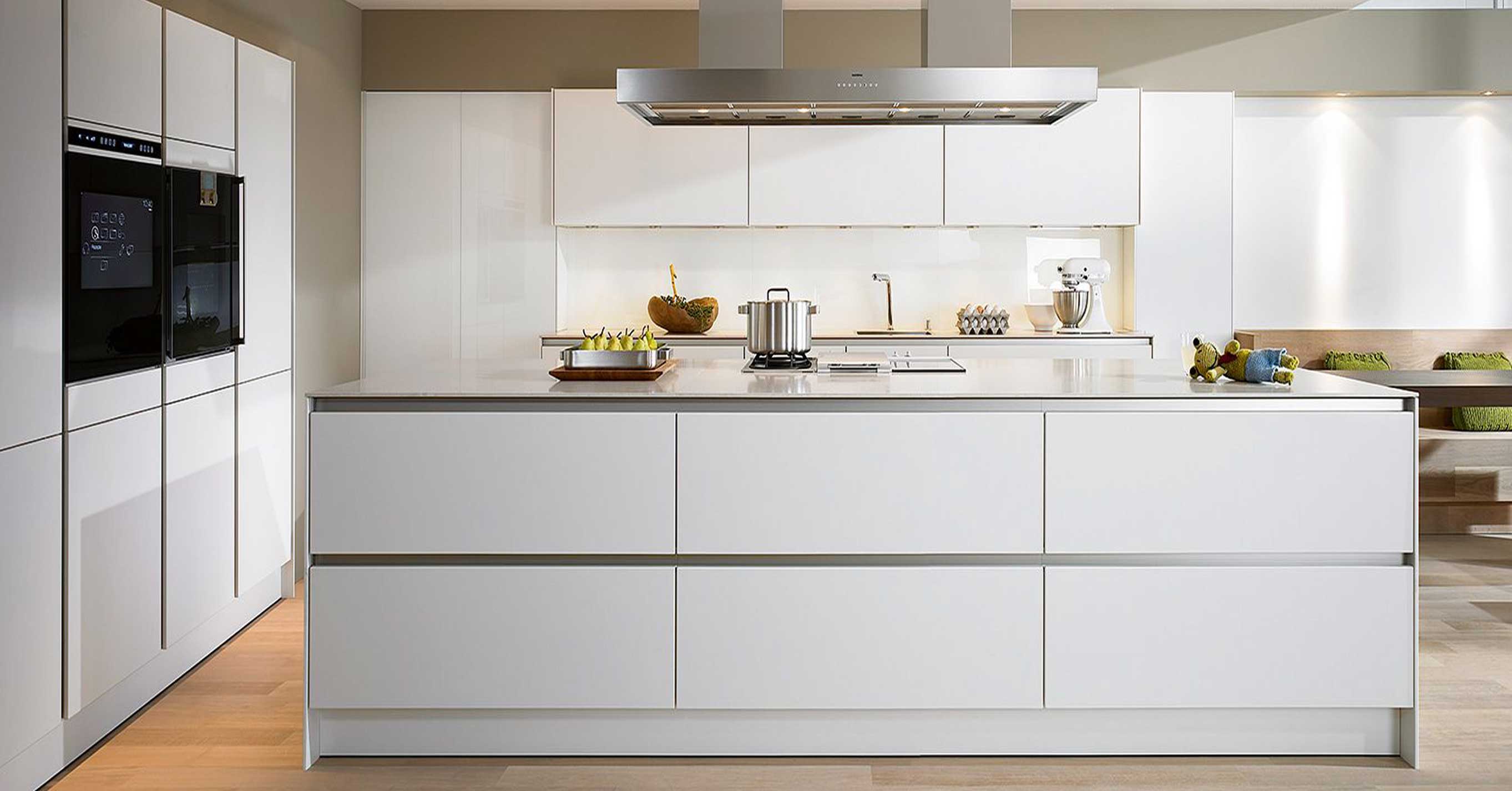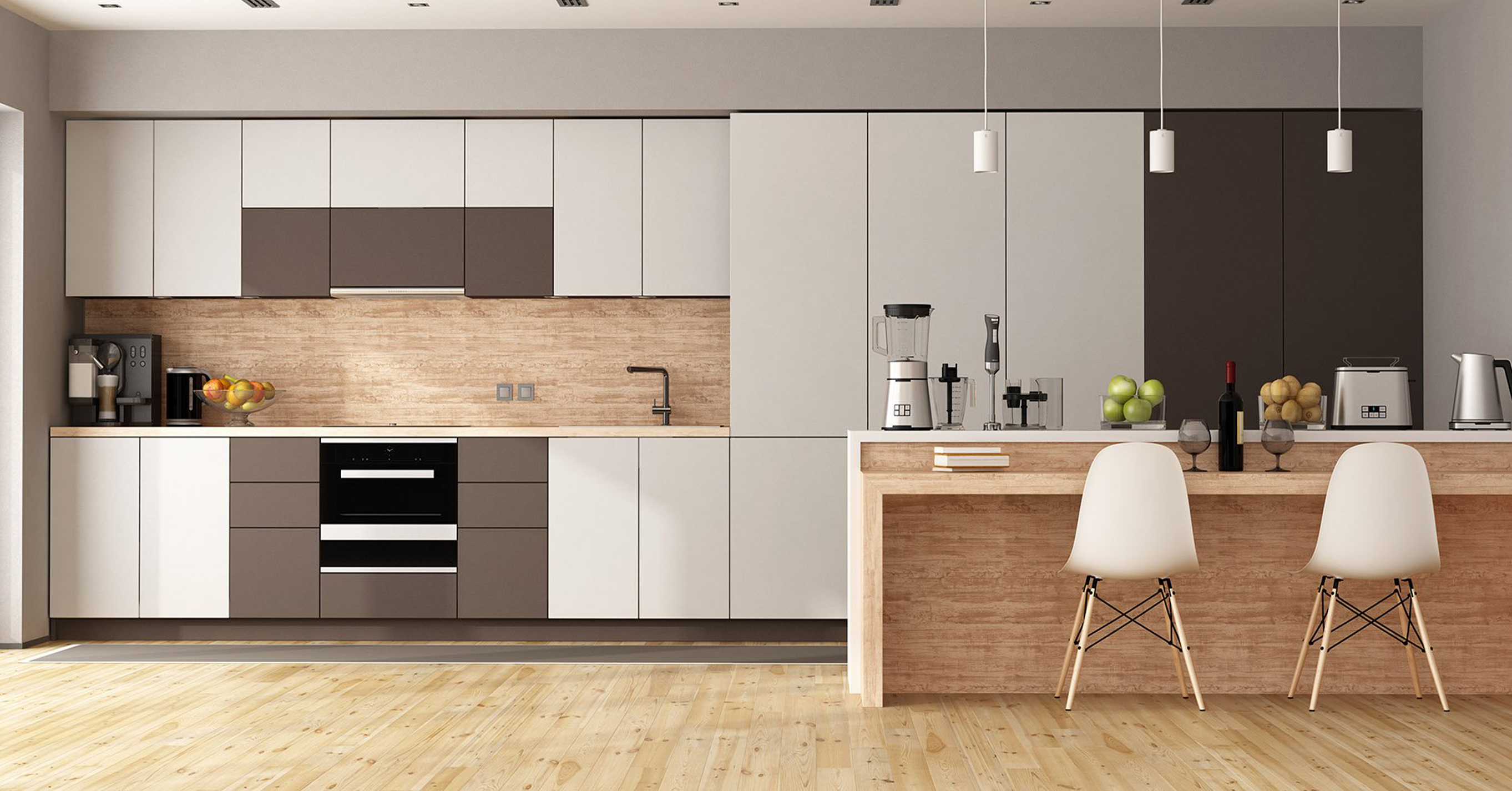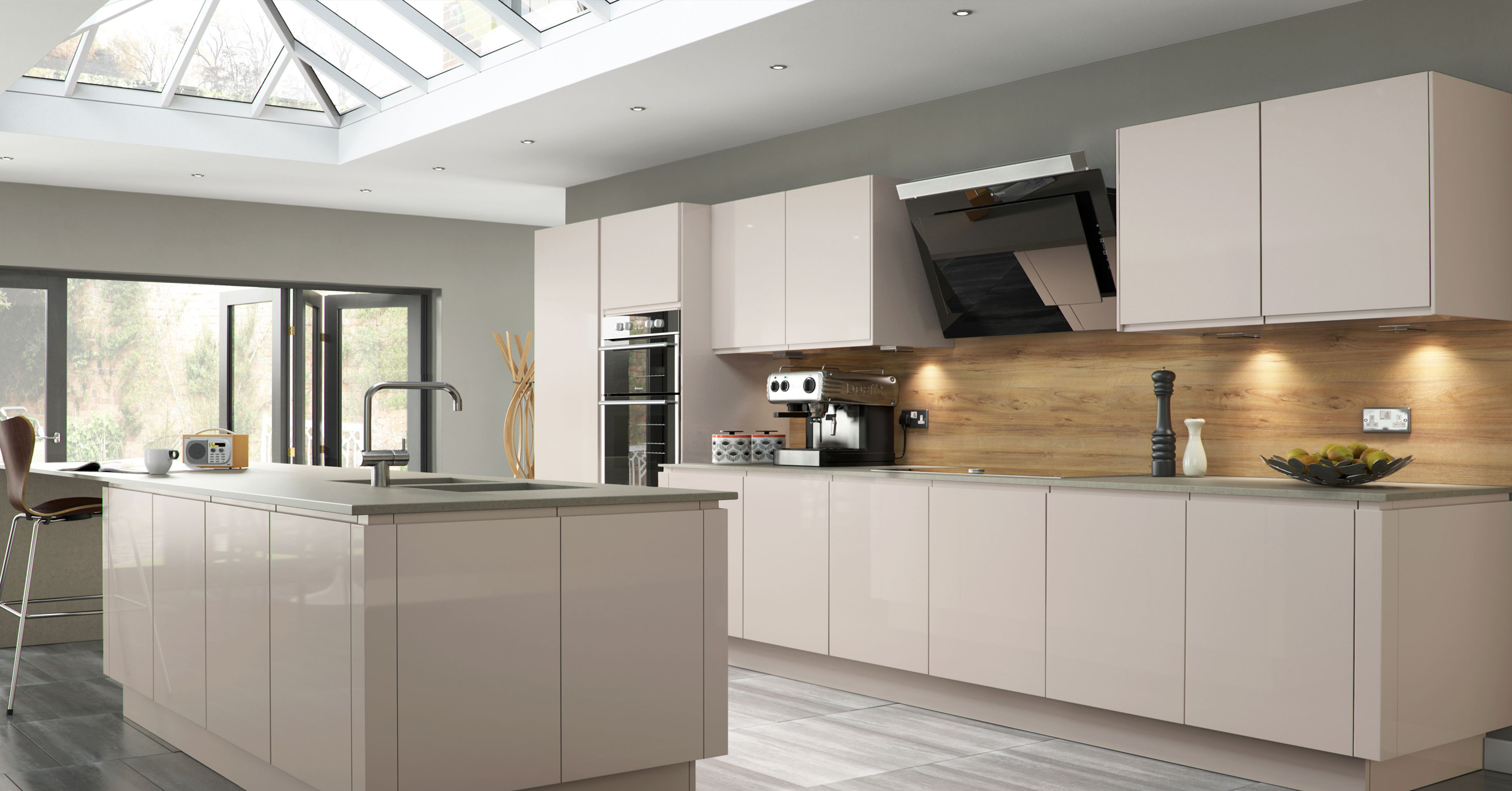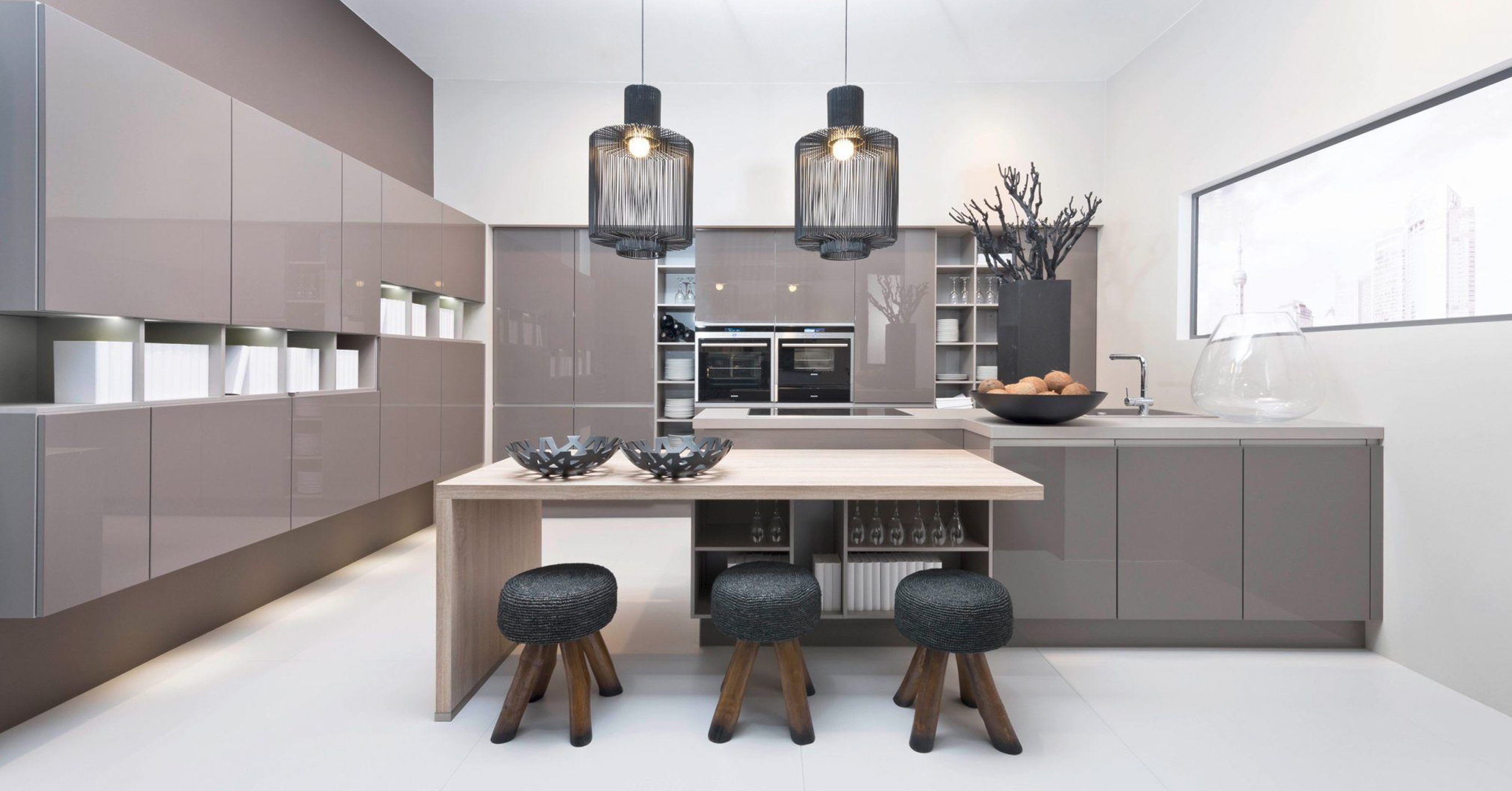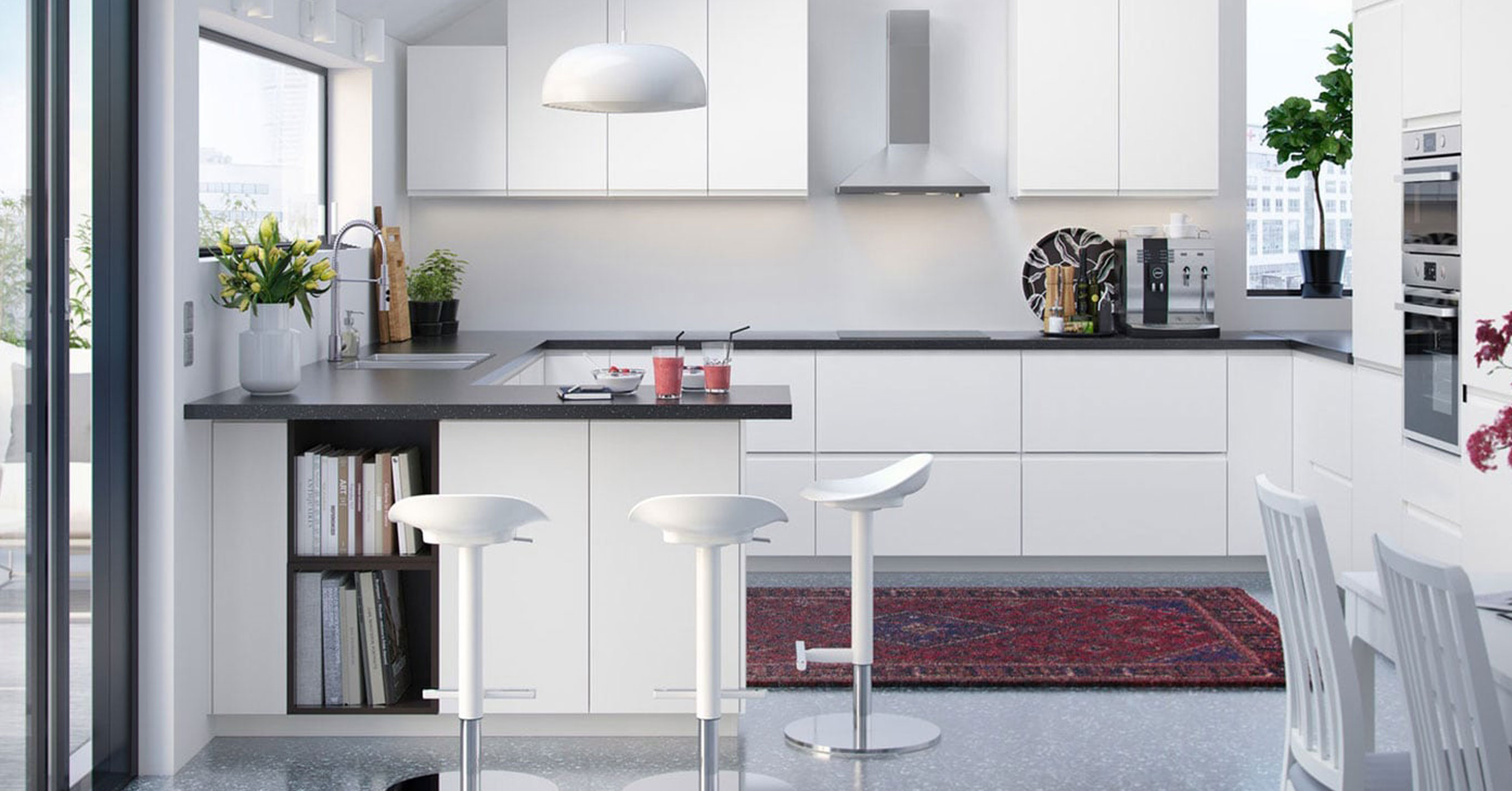Corporate Office : B-89/ B Sector-63, Noida Uttar Pradesh -201301
Best Strategies for Creating Modular Kitchen Design
- By Admin
- On May 28, 2024
Introduction
Careful planning is required when Creating a modular kitchen design in order to best use both space and usefulness. Regalo Kitchens gives you the most effective methods for designing a kitchen like this to bring together innovation and features. First, focus on making best use of available space by adding clever storage options like pull-out cabinets and drawers. Second, focus on the ability to adjust by choosing modular pieces that are simple to add or rearrange when priorities change. Thirdly, give looks first priority by matching finishes, colors, and materials to create a single look. Including comfortable design elements also improves usefulness and comfort. In the end, activities have been simplified by a smooth adjustment of technology and appliances. By using these techniques, you can create a modular cooking area that becomes the main focus of your house.Understanding the Basics of Modular Kitchen Design
Understanding the basic principles of modular kitchen design is extremely important before searching into different strategies. Tested parts or modules, such as cabinets, drawers, shelves, and worktops, combine to form a modern kitchen. These pieces are made to fit together perfectly. Stainless steel, wood, or premium laminates are common materials used to create these modules, which provide both quality and ability to adjust.Prioritizing Functionality
Any modular kitchen design should be based on functionality. Understand your workflow patterns, needs for storage, and cooking habits first. Select an arrangement that reduces unnecessary movement and increases performance. Because of its practical benefits the traditional work triangle that connects the refrigerator, sink, and stove is still a popular option.Optimizing Storage Solutions
Space effectiveness matters most in a modern kitchen, as a result effective storage options are important. In order to fit multiple things, combine drawers, cabinets, and pull-out shelves are used. Make use of vertical space by storing rarely used equipment or seasonal kitchenware in tall cabinets or wall-mounted units. To make the best use of the entire area of the room, take a look at creative storage items like under-counter organizers, corner pull-outs, and rotating units.Choosing a Comfortable Design
In order to create a kitchen that is user-friendly, comfort is important. Make sure that the depths of cabinets, the heights of countertops, and the locations of appliances are all comfortably suited for reducing effort and tiredness during cooking. Include drawer mechanisms and soft-close hinges for quiet, effortless use. User comfort and convenience should be given first priority in a well-designed modular cooking space.Selecting Suitable Materials
The materials used in a modular kitchen design have a great impact on its maintenance, durability, and looks. Choose premium materials for its long life and ease of maintenance; these materials should be resistant to heat, moisture, and stains. Popular choices include stainless steel appliances, quartz or granite countertops, and strong hardwoods like oak or maple for cabinets. When choosing materials, keep the overall design and functioning in mind to create a unified structure.Using Smart Technology
Including technological advances into kitchen design can increase ease of use in the modern world of smart homes. Explore choices like sensor-based lighting systems, touchless taps, and smart appliances that are connected to the internet through WiFi. These innovations in technology simplify everyday tasks and give the kitchen a modern look.Including Personal Style
Even while usefulness is important, personal style plays a big role in modular kitchen design. Select a color scheme or design pattern that represents your style and improves the overall appearance of your house. Customize the design components to your taste, whether you're more into simple beauty, rustic charm, or slick modern style. To give the room personality, add decorative details like pendant lighting, backsplashes, and dramatic accessories.Seeking Professional Guidance
It might be difficult to design a customized kitchen; it takes great planning and thought. Think about getting the help of interior designers or kitchen experts, who can offer helpful advice. They can help with inspiration, layout optimization, and budget-friendly material selection. Working with professionals guarantees an easy and trouble-free process from the beginning of the design to the installation.Budgeting Wisely
Make sure your budget is reasonable before starting a modular kitchen design project by keeping into thought your needs and preferences. Take into consideration variables like labor and material prices as well as additional fees for accessories and appliances. Set the essential parts in order of importance while keeping an eye out for ways to cut costs. You don't have to spend a fortune to design an attractive and useful modular cooking area with proper planning and budgeting.Conclusion
Careful planning and attention to detail are required to create a modular kitchen design that achieves a balance between effectiveness, beauty, and functionality. You can create an area that fits your needs and represents your personality through exploring the basic concepts of modular design of a kitchen setting features first, making the best use of options for storage, following to concepts of ergonomics, choosing the right supplies, combining smart technology, adding your unique style, getting professional advice, and setting a reasonable budget. By using effective strategies, your modular kitchen could end up as the centerpiece of your house, inspiring kitchen creativity and creating priceless memories that will last for years to come.Frequently Asked Questions (FAQs)
Q1. Which materials work best for modular cooking spaces?
Select premium materials that are stain-, heat-, and moisture-resistant for long-lasting beauty and low maintenance. Stainless steel appliances, quartz or granite worktops, and hardwoods like oak or maple for cabinets are other options.Q2 In what ways can I combine smart technology into my kitchen that is modular?
To improve productivity and ease of use, include touchless taps, sensor-based lighting systems, and Wi-Fi connection into your smart appliances. These innovations in technology ease everyday tasks and give the kitchen a fresh look.Q3. Why is consulting an expert while designing a modern kitchen important?
Professional help from kitchen or interior designers provides knowledgeable guidance, a perfect plan, and the right material selection that fits within your budget. Working with experts guarantees an easy and trouble-free process from the beginning of the design to the installation.Q4. How can I plan my modular kitchen design project budget effectively?
Based on your needs, create a realistic budget that takes into account extra prices for appliances and accessories, labor, and material costs. Select what is necessary while keeping an eye out for ways to save costs to build a fashionable and useful modular kitchen design without going over budget.Recent Articles
-
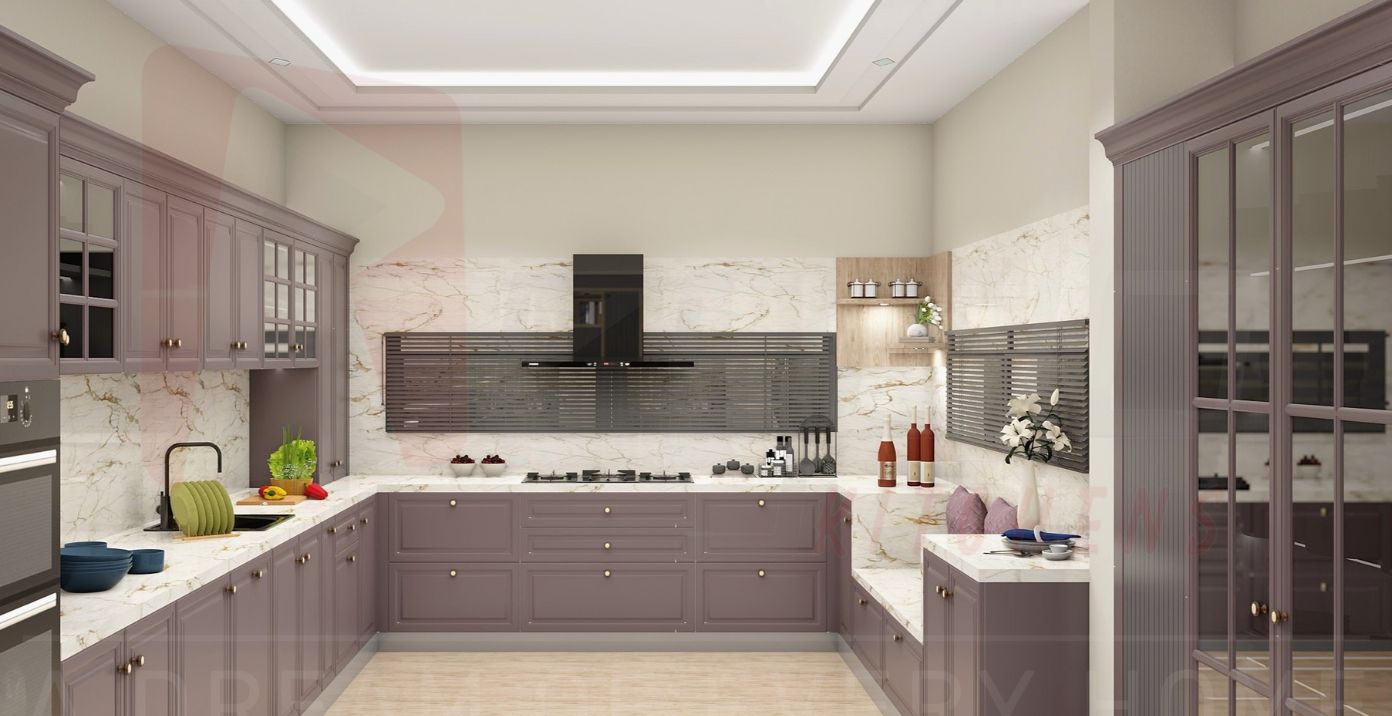 Aug 16, 2024
Aug 16, 2024Natural Lightning's Role in Modular Kitchen Design
-
Aug 12, 2024
Explore the Future of Modular Kitchen Design in 2024
-
Aug 03, 2024
Modular Kitchen Design for Every Home
-
Aug 01, 2024
The Future of Cooking: Smart Modular Kitchen Design
-
July 29, 2024
Smart Technology Integration in Modular Kitchen Design
-
July 26, 2024
Best Modular Kitchen Design for Any Space in 2024
-
July 24, 2024
Smart Modular Kitchen Design for Any Budget
-
July 22, 2024
Eco-Friendly Modular Kitchen Design Trends
-
July 20, 2024
Modular Kitchen Design: Perfect Layouts & Lighting
-
July 18, 2024
Modular Kitchen Design for Open Floor Plans
-
July 15, 2024
Luxurious Modular Kitchen Design with Affordable Price
-
July 12, 2024
Stylish Modular Kitchen Design for Modern Homes
-
July 10, 2024
Trendy Modular Kitchen Design for Every Home
-
July 08, 2024
Modular Kitchen Design with a Classic Touch in 2024
-
July 03, 2024
10 Reasons to Consider a Modular Kitchen Design
-
July 02, 2024
Unique Modular Kitchen Design Features
-
June 28, 2024
Trendy Smart Modular Kitchen Design
-
June 27, 2024
Stylish and Functional: Modular Kitchen Design Trends
-
June 24, 2024
Creating a Stylish and Useful Modular Kitchen Design
-
June 22, 2024
Helpful Tips for Modular Kitchen Design
-
June 19, 2024
12 Trendy Ideas For Modular Kitchen Design
-
June 12, 2024
1100+ Modular Kitchen Designs In India | Regalo Kitchens
-
May 28, 2024
Best Strategies for Creating Modular Kitchen Design
-
May 27, 2024
Modular Kitchen Design Ideas and Inspirations
-
May 23, 2024
Tips Before Investing in a Modular Kitchen Design
-
May 21, 2024
Tips Before Investing in a Modular Kitchen Design
-
Apr. 19, 2024
The Effect of Modular Kitchen Design on Cooking
-
Apr. 10, 2024
Regalo Kitchens: Best Modular Kitchen Design in Gurgaon
-
Apr. 8, 2024
Spacious Modular kitchen Design | Regalo Kitchens
-
Apr. 1, 2024
67 Modular Kitchen Design Ideas Images 2024
-
Mar 28, 2024
Best Modular Kitchen Design to Fulfill Your Needs
-
Mar 26, 2024
10 Modular Kitchen Design Ideas | Regalo Kitchens
-
Mar 20, 2024
120+ Modular Kitchen Designs Ideas
-
Mar 18, 2024
200+ L-Shape Modular Kitchen Design Ideas, And Cost
-
Mar 15, 2024
Modular Kitchen Designs for Home Online
-
Mar 15, 2024
Modular Kitchen Designs & Patterns in India
-
Mar 14, 2024
430 Best Modular Kitchen Designs ideas in 2024
-
Mar 12, 2024
125+ Modular Kitchen Designs | Kitchen Interiors
-
Mar 12, 2024
Modular Kitchen Designs and Ideas by Regalo Kitchens
-
Mar 12, 2024
Kitchen - Built Your Own Perfect Modular Kitchen
-
Mar 11, 2024
1000+ Modular Kitchen Designs With Suitable Prices

